🙌 Awesome, you're subscribed!
Thanks for subscribing! Look out for your first newsletter in your inbox soon!
Get us in your inbox
Sign up to our newsletter for the latest and greatest from your city and beyond
By entering your email address you agree to our Terms of Use and Privacy Policy and consent to receive emails from Time Out about news, events, offers and partner promotions.
Awesome, you're subscribed!
The best of Hong Kong for free.
Sign up for our email to enjoy Hong Kong without spending a thing (as well as some options when you’re feeling flush).
Déjà vu! We already have this email. Try another?
Love the mag?
Our newsletter hand-delivers the best bits to your inbox. Sign up to unlock our digital magazines and also receive the latest news, events, offers and partner promotions.
- Things to Do
- Food & Drink
- Shopping & Style
- Coca-Cola Foodmarks
- Restaurants
- Music & Nightlife
- Los Angeles


Travelling to Hong Kong? Here's what you need to know
A guide to help you prepare for your entry into the city
Photograph: Tatum Ancheta

International travellers are free to come to Hong Kong, and there are no more restrictions upon arrival. If you have some enquiries about travelling to the city, we've compiled a guide to help you with everything you need to know when entering Hong Kong, from things to prepare before arriving at Hong Kong International Airport to all the steps you must take as soon as you land.
RECOMMENDED: Keep updated with the latest Covid-19 measures in the city .
Been there, done that? Think again, my friend.
Who can visit Hong Kong now?

Hong Kong has already dropped the vaccination requirement for Hongkongers and international arrivals. Unvaccinated residents and non-residents will be able to enter the city without restriction .
What are the requirements to enter Hong Kong?
With Covid-19 measures now eased in Hong Kong, including arrival restrictions, international travellers looking to explore the city are now free to enter. Of course, if your country requires a visa to visit Hong Kong, please obtain one before your trip .
Negative RAT or RT-PCR test results before boarding are no longer required .
Will they allow entry if my visa is expiring?
If you're not a permanent Hong Kong resident and travelling under a work or tourist visa, ensure your visa has a sufficient validity period, or you will be denied entry.
The Immigration Department (ImmD) provides electronic services for visa application and 'e-Visa' arrangements , allowing applicants to complete the entire process without going to the immigration office in person. Suppose your visa is under renewal and is getting delayed. It is best to send an authorised representative to the ImmD office to fix your reentry as emails and phone calls will take a long time.
Visit this link to see ImmD online services for acquiring Hong Kong visas.
Can arrivals move freely around the city?
Yes, Covid-19 regulations have already eased in Hong Kong. You can freely explore all the incredible things to do in the city . Mask-wearing mandate, the last major rule to fight against Covid-19, has been lifted since March 1.
For more clarity, here's our guide on everything you need to know about Hong Kong's current Covid-19 restrictions.
Do I still need to take Covid-19 tests?

You don't need to present negative Covid-19 results when you arrive at the Hong Kong airport, but the government recommends taking daily RAT until the fifth day of arrival (arrival date count as Day 0). Those who take the test may voluntarily declare the result via the Department of Health's Electronic Covid-19 Monitoring & Surveillance System (eCMSS) .
Ok, so you finally booked your flight, what to do next?

To ensure a smooth and efficient arrival, prepare all your travel documents, including visa for non-Hong Kong residents.
What time should I go to the airport for departure?
Delays, cancellations, and a whole lot of waiting may happen before departure, so make sure to be at the airport at least three hours before your flight. Account for extra time if you encounter any problems with airline check-in.
Arrival at Hong Kong International Airport

Yes, you're finally in Hong Kong, but not just yet. You still have a few more steps to finish before entering. Though the new system significantly cuts the waiting time in the airport, the influx of inbound travellers may affect processing time.
After landing, all inbound persons will pass through temperature checks upon arrival. Those with symptoms will be referred to the Department of Health for further handling. If you're cleared, you can proceed with immigration procedures, baggage collection, and continue taking public transportation to your hotel or home.
What are the options for airport transfers?
Travellers arriving in the city can take public transport to their destination. Those who want a limousine service can contact their hotels for arrangements. One of the fastest ways to travel from the Airport to the city is through Airport Express.
Find more information here .
What if I tested positive for Covid-19?
Hong Kong government no longer issue isolation orders to infected Covid-19 cases since January 30. The government advises symptomatic persons to stay at home to rest and avoid going out. Those who are asymptomatic can go out at will or go to work.
If you belong to high-risk groups and suffer from fever, cough, shortness of breath, vomiting, and diarrhoea, the government recommends that you seek medical attention.
For more information, visit this link .
Got more questions?
The government has set up a page for all your questions about inbound travel to Hong Kong . Due to the changing nature of Covid-19 measures, please visit this link to keep updated with the latest travel regulations.
Feel free to roam Hong Kong! These itineraries will give you a dose of inspiration . Looking for hotel accommodations during your trip? Here's a guide to some of our favourite Hong Kong hotels – all tried and tested by our editors. You can also check out the most romantic hotels in the city or schedule a weekend getaway from the best beachside hotels , boutique hotels , or luxury camping spots in town .
You've been gone a while, here's what's new in HK
50 most incredible things to do in hong kong.
- Things to do

Whatever you're looking for, there are plenty of places to visit and activities to keep you entertained in the 852.
50 Best bars in Hong Kong

A definitive list of the 50 best Hong Kong bars to visit right now.
50 Best restaurants to try in Hong Kong

The best places to eat in the city, from traditional Japanese and fine French to hipster hangouts, hidden gems, and everything else in between.
New restaurants to try in Hong Kong

The latest and greatest restaurants to get stuck into this month
New bars to try in Hong Kong now

A list of new drinking dens to add to your bar-hopping itinerary.
[image] [title]
Discover Time Out original video
An email you'll actually love
- Press office
- Investor relations
- Work for Time Out
- Editorial guidelines
- Privacy notice
- Do not sell my information
- Cookie policy
- Accessibility statement
- Terms of use
- Modern slavery statement
- Manage cookies
- Sign up to our newsletter
- Advertising
- Express Advertising
- Time Out Market
Time Out products
- Time Out Worldwide
Time Out magazine
- Print edition
- Digital edition

Hong Kong Itinerary: What to Do in 4 (or More) Days
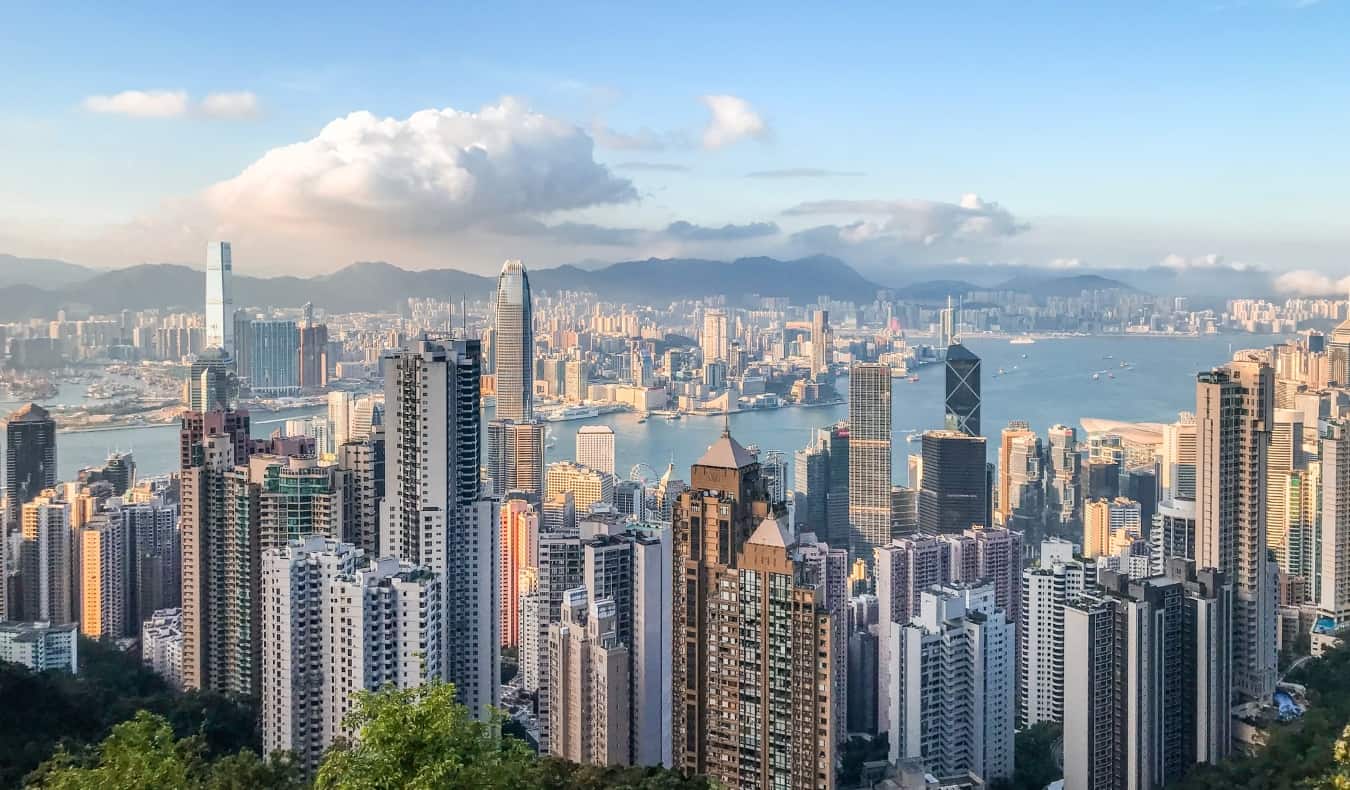
Hong Kong. Its name inspires visions of a chaotic, jam-packed city with soaring skyscrapers, thick smog, endless noodle stands, big finance, and wild nights out.
It’s one of my favorite cities in the world . The fast pace creates a sense of permanent change, and the crowds, multiculturalism, and food keep me continuously coming back. Oh, the food! I could sit bent over a noodle bowl all day long.
Hong Kong is a busy city of 7.4 million inhabitants with one of the biggest hub airports in the world. It can be overwhelming for many visitors, especially those not used to crowded places.
And, with so much to do in Hong Kong , many travelers scratch their head about where to start in order to get the most out of the trip.
While you can visit the city within one or two days, it’s best to spend at least three days in Hong Kong. If you’re going to visit Macau, I’d add another day, so you’d need 4-5 days to really see the place.
This four-day Hong Kong itinerary will help you organize your trip, steer you off the beaten path, and show you why Hong Kong is one of the most on-the-go cities in the world.
Table of Contents
Hong Kong Itinerary: Day 1
Hong kong itinerary: day 2, hong kong itinerary: day 3, hong kong itinerary: day 4, other things to see and do in hong kong.
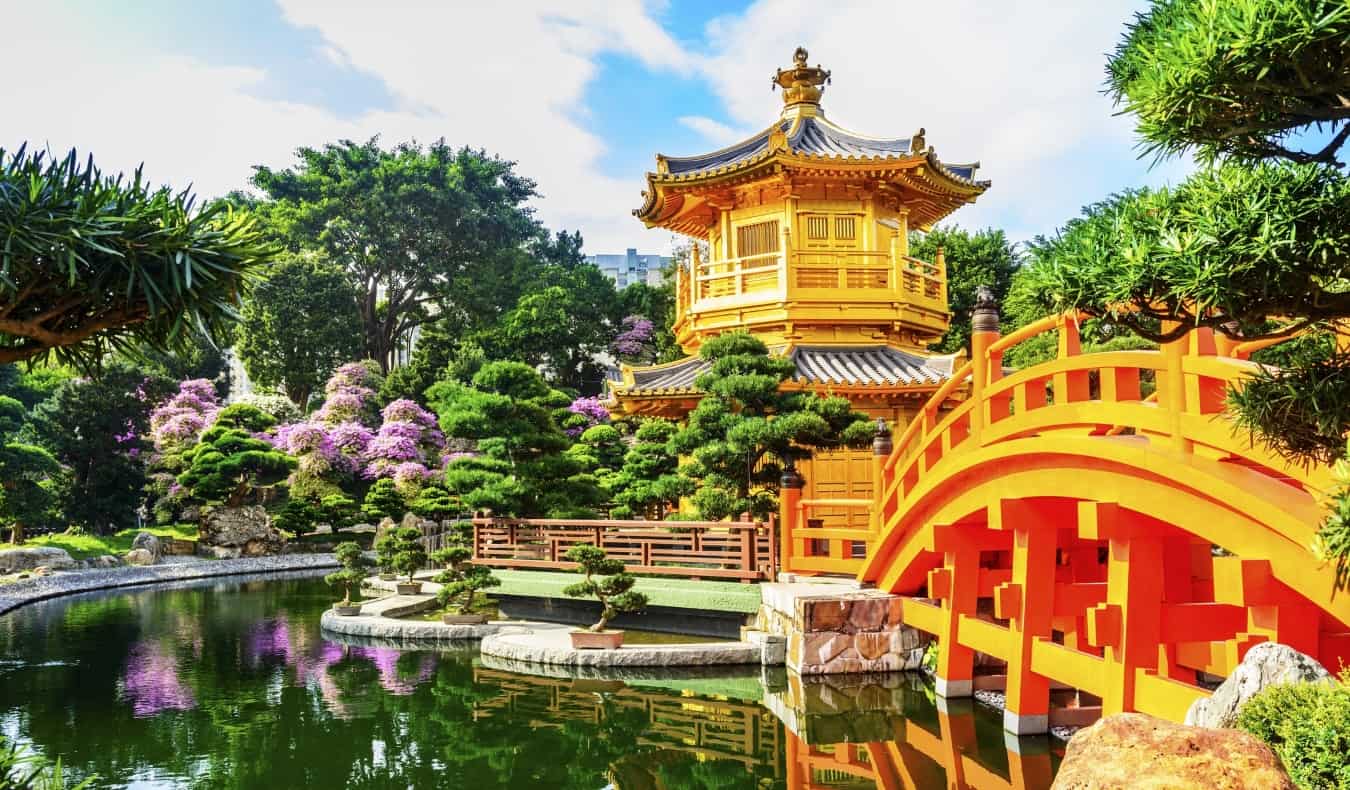
The Hong Kong Museum of History In order to understand a place, you must first understand its past. This museum lets you do just that. It provides an excellent overview of Hong Kong’s long and complex past. There are exhibits relating to the archaeology, social history, ethnography, and natural history of the region. It’s big, so allow about 2–4 hours for your visit.
100 Chatham Road South, Tsim Sha Tsui, Kowloon, +852 2724 9042, hk.history.museum/en_US/web/mh/index.html. Open Wednesday-Monday 10am-6pm (7pm on weekends). Admission is free but some special exhibitions may require a fee.
Kowloon Park Head to Kowloon Island’s gigantic park that features a swimming pool, a fitness center, little ponds where you can watch ducks and other swimming birds, a Chinese garden, an aviary, and the Hong Kong Heritage Discovery Centre (not to be confused with the Hong Kong Heritage Museum; more on that museum below). There are also plenty of rest areas here where you can relax to escape the oppressive Hong Kong heat. Spanning 13 hectares (33 acres), it’s one of the best places to people-watch in the city.
22 Austin Rd, Tsim Sha Tsui, Kowloon, +852 2724 3344, lcsd.gov.hk. Open daily 5am-12am and admission is free.
Street Markets in Mong Kok This area of Hong Kong has the largest and busiest markets in which to soak up the frenetic atmosphere, sights, and sounds of Hong Kong. The crowds and sellers really exemplify Hong Kong’s on-the-move essence. The two best markets for inexpensive souvenirs are the Ladies Market (bargain clothing, accessories, and souvenirs) and the Temple Street Night Market (flea market). The markets of Mong Kok are best reached by the Hong Kong MTR subway system, stations Yau Ma Tei, Mong Kok, and Prince Edward on the Tsuen Wan (red) line.
The markets are open every day, starting around noon and closing in the late evening (times vary).
Tsim Sha Tsui Promenade Stroll along the Tsim Sha Tsui waterfront and take in the breathtaking skyline view of Hong Kong Island. While you’re here, make sure to visit the Avenue of Stars, Hong Kong’s answer to the Hollywood “Walk of Fame,” where you can see the stars of Chinese and Western film alike. There are shops, restaurants, and, at night, a large outdoor market serving traditional Cantonese food alongside knockoffs and souvenirs. Come ready to haggle.
Salisbury Road, Tsim Sha Tsui, Kowloon (next to the Star Ferry pier). Open 24/7.
The Star Ferry The best way to get across the harbor from Kowloon Island to Hong Kong Island is via the Star Ferry, which showcases a fantastic view of the city skyline for only 5 HKD. Riding the ferry is a fun thing to do even if you aren’t using it for transportation! It’s one of my favorite activities.
Star Ferry Pier, Kowloon Point, Tsim Sha Tsui, +852 2367 7065, starferry.com.hk/en/service. The ferry runs 6:30am-11:30pm every day, though they occur less frequently on weekends and holidays. Tickets start at 4 HKD during the week and 5.6 HKD on the weekends, while a 4-day pass costs 50 HKD.

Ngong Ping 360 This cable car stretches over 5.7 kilometers (3.5 miles) from Tung Chung across the bay toward the airport and then onward to Lantau Island. The cable car gives you a panoramic view of the airport, harbor, and entire city before it travels through the surrounding mountains. The ride lasts about 25 minutes.
When you get to the top, don’t miss the nearby Po Lin Monastery (a Buddhist monastery founded in 1906) and Tian Tan, a 34-meter (111-foot) bronze Buddha statue that sits on the top of the island’s peak. While Lantau Island is a bit touristy, the ride, views, and monastery make it worth the trip.
11 Tat Tung Road, Tung Chung, Lantau Island, +852 3666 0606, np360.com.hk/en. Open 10am-6pm on weekdays and 9am-6:30pm on weekends on holidays. A round-trip adult ticket for the cable car is 270 HKD for a standard cabin and 350 HKD for a crystal cabin (a cable car with a glass bottom floor). You can reserve tickets online in advance here .
Take a Food Tour After the morning on the cable car and enjoying a killer view of Hong Kong, spend your afternoon taking a food tour. Hong Kong is a food-filled city (there are over 10,000 restaurants here!) and you’ll find a diverse range of cuisines from around the world. But without help, you’ll never find all the hidden local favorites. The following companies offer the best value tours:
- Eating Adventures
- Hong Kong Foodie Tasting Tours
- Bigfoot Tours
- Secret Food Tours
Expect to spend 690-860 HKD per person for a food tour.
Rent a Junk Boat Junk boats — those classic boats with the large sail you see in any movie about Hong Kong — are a fun way to sail around the harbor on full-day and half-day trips. There is only one traditional junk boat left: the Dukling. It sails Saturdays and Sundays only, with tickets starting at 190 HKD.
Another option is sailing on The Aqua Luna, a boat that was built in the traditional style in 2006. It sails much more frequently and offers a variety of cruises, from a dim sum cruise to an afternoon tea cruise. Tickets start at 270 HKD.
In addition to these traditional-style junks or if you’re looking for more of a party boat vibe, you can also rent a boat with a large group of friends (15 or so people) or join a group cruise around the harbor. There are a ton of different options to choose from, from all-you-can-eat-and-drink boats with add-on water sports, massages, and DJ packages, to companies that let you just rent the boat and bring everything else yourself.
Here are some recommended companies that offer affordable boat tours:
- Island Junks – They have a couple of cruise options, costing around 660-690 HKD per person. You can also charter your own if you’ve got the money!
- Saffron Cruises – This is a great option if you can put together a large group of 20-30 people, as a charter costs 9,000-14,000 HKD.
- Hong Kong Junks – This is more of the classic party boat experience, with options for all budgets.
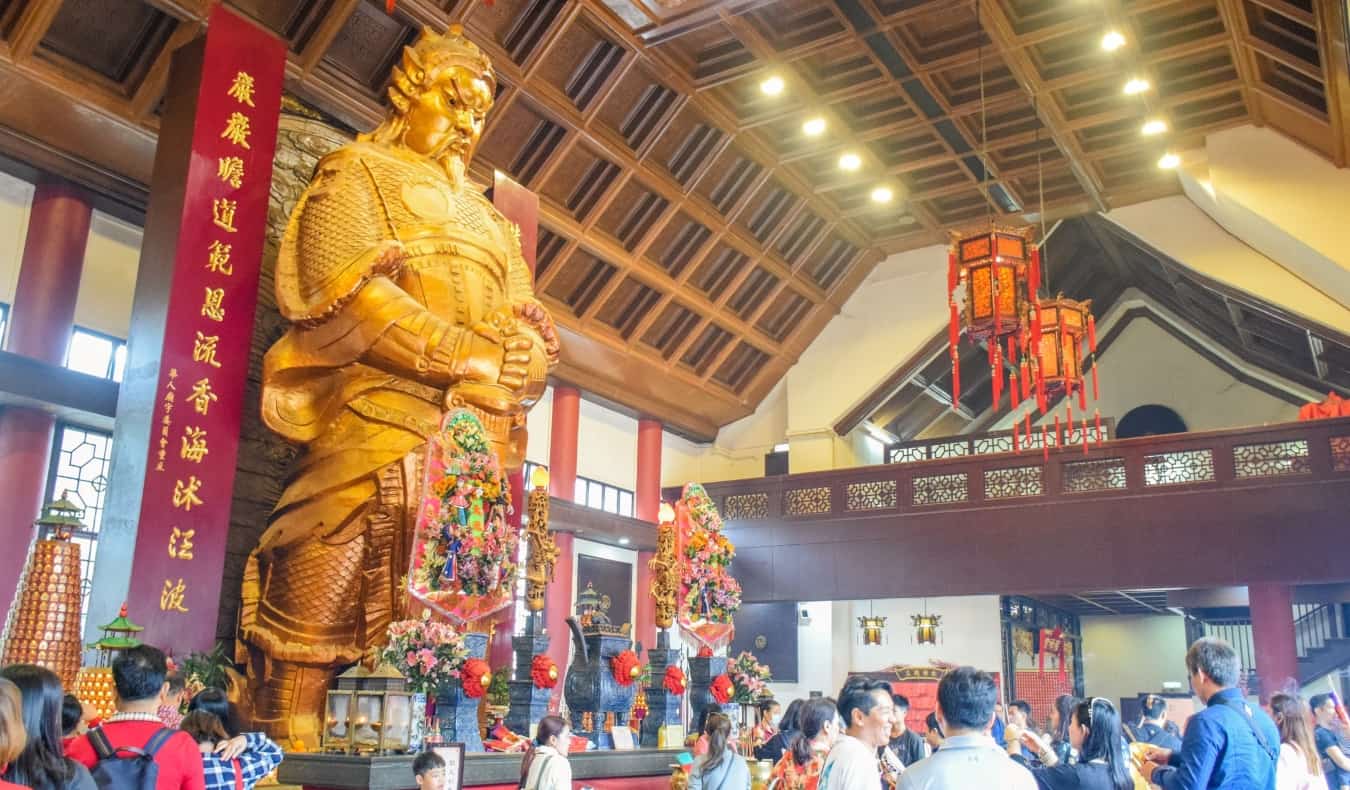
Ping Shan Heritage Trail Located in the New Territories (the city’s less visited northern district), this trail will lead you past some of the most important ancient sights of the Tang clan. There are 14 historic buildings on the trail, including: Hung Shing Temple, The Tang Ancestral Hall, Yeung Hau Temple, Shrine of the Earth God, and the 15th-century Tsui Sing Lau Pagoda (Hong Kong’s only ancient pagoda). Just be aware that not all of the historic buildings on the trail are open to the public.
Another option is the Lung Yeuk Tau Heritage Trail. It begins at the Taoist temple complex of Fung Ying Seen Koon and passes the walled villages of Ma Wat Wai and Lo Wai before ending at the 18th-century Tang Chung Ling Ancestral Hall.
This part of Hong Kong is often skipped by tourists, and the trails, meandering through the city’s more rural region, are quiet and a welcome break from the giant metropolis of the downtown area.
Ping Shan Trail: Sheung Cheung Wai, Yuen Long District, +852 2617 1959, lcsd.gov.hk. Lung Yeuk Tau Trail: 66 Pak Wo Rd, Fanling, Hong Kong, +852 2669 9186.
Hong Kong Heritage Museum This museum showcases the city’s history and love of art. There’s a large exhibit about the New Territories and an opera house for performances. It fills in some of the blanks left from the Hong Kong History Museum and gives you a look at the artistic culture of the city. It’s also located near the beautiful Sha Tin Park and Shing Mun River, making the surrounding area just as interesting as the museum!
1 Man Lam Rd, Sha Tin, New Territories, +852 2180 8188, hk.heritage.museum/en/web/hm/highlights.html. Open every day but Tuesday 10am-6pm (7pm on weekends). Admission is free.
Che Kung Temple Just across the river from the Heritage Museum, this temple is dedicated to Che Kung, a general during the Southern Song Dynasty (1127–1279) in ancient China who was known for stopping both uprisings and epidemics. This temple was built in his name during an epidemic in the 17th-century, and it is said that the epidemic ceased the day after its official dedication.
The temple complex is always filled with people, so be prepared for crowds. The traditional architecture and intricate sculptures, including the large golden sculpture of Che Kung himself, make this worth visiting after you see the Heritage Museum.
Che Kung Miu Road, +852 2691 1733, ctc.org.hk. Open daily 8am-6pm.
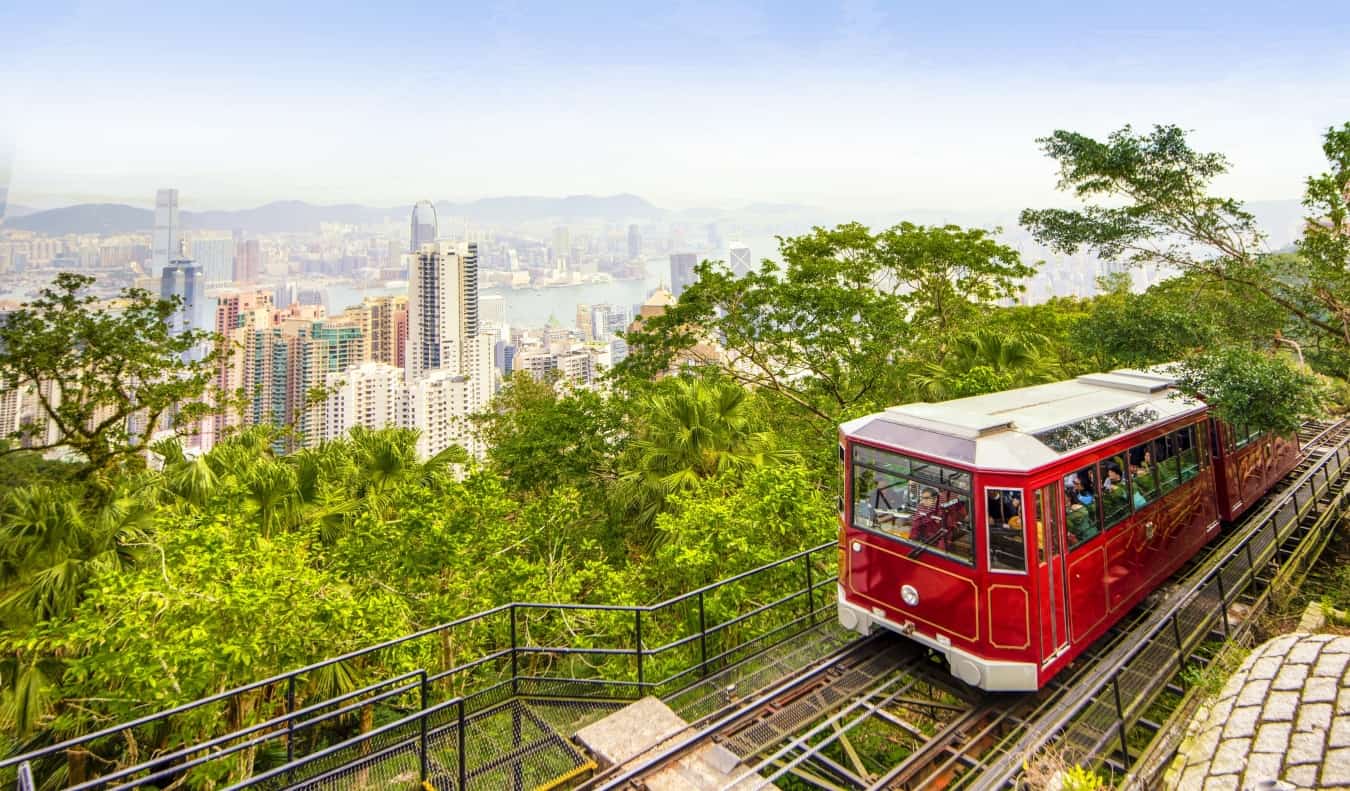
The Peak Tram This tram, which has been in operation since 1888 (with several renovations since then) takes you to the top of the Peak, Hong Kong Island’s largest mountain, at 518 meters (1,700 feet). Upon exiting at the top, you’ll enjoy spectacular 180-degree views of the skyscrapers of Victoria Harbor, Kowloon, and the surrounding hills. It’s the best view of the city.
Also at the top is the huge, wok-shaped Peak Tower with its viewing platform Sky Terrace 428, Madame Tussauds, and a variety of restaurants. Head away from this area and you’ll find many different trails to get into nature and see the city skyline from a bunch of different vantage points. When you’re done at the top, you can either take the tram or walk back down along the trails.
No.1 Lugard Road, +852 2849 7654, thepeak.com.hk. Open daily 7:30am-11pm, with trams running every 15-20 minutes. A return trip is 88 HKD, while the same with entry to the sky terrace viewing platform is 148 HKD per person and 168 HKD on peak days.
Hong Kong Museum of Art This museum on the Tsim Sha Tsui waterfront is a fascinating and intriguing place. Established in 1962, it was the first public art museum in the city. There are both rotating temporary exhibitions as well as a permanent collection where you’ll find everything from Chinese ceramics, terra cotta, rhinoceros horns, traditional calligraphy, and Chinese paintings, to contemporary art produced by Hong Kong artists.
Tsim Sha Tsui, Hong Kong, +852 2721 0116. Open Monday-Wednesday, Friday 10am-6pm; Saturday, Sunday and public holidays 10am-7pm. Admission is 10 HKD.
Lan Kwai Fong Nightlife LKF is the main nightlife and party area in Hong Kong and is filled with tons of bars, clubs, shisha (water pipes), and cheap drinks. Nights out here are wild — the street is always crowded, people get very drunk, and shots get handed out like candy. It’s rowdy, but if you want to see Hong Kong’s wilder side, this is the place to do it.
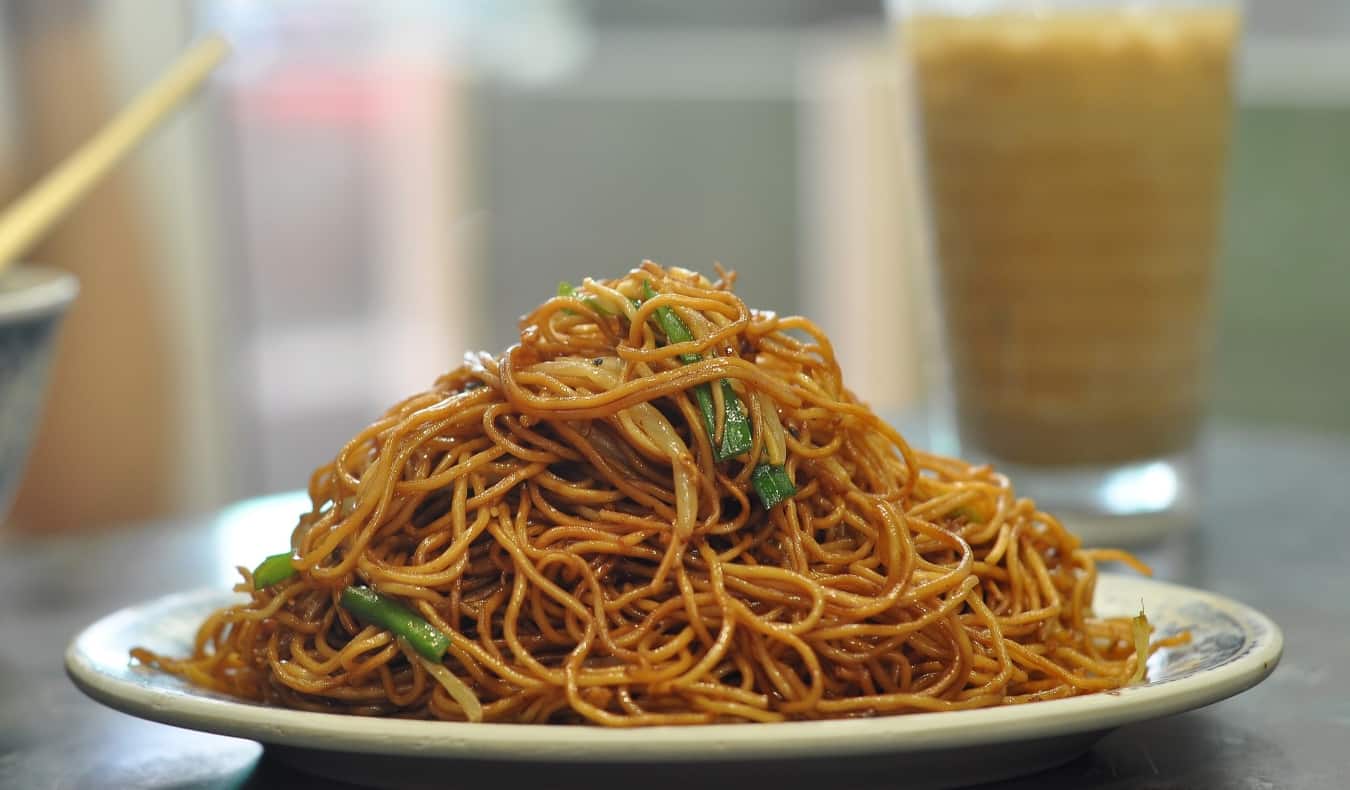
Take a cooking class — Hong Kong is full of food. Why not learn how to cook some of it? This Hong Kong expat website has a list of 20 schools offering classes! Prices vary but expect to spend around 550-800 HKD per person.
Go hiking — Hong Kong may be a densely packed city, but there is also scenic hiking in the outer mountains and islands. There are a lot of trails (especially in the undeveloped parts of the New Territories). The Hong Kong tourism board lists all the trails here .
Visit Disneyland — If you’re on a family trip, or if you’re a backpacker in touch with your inner child, head to Disneyland. Hang out with Mickey Mouse and shake hands with sea creatures. ( Tickets start at 639 HKD .)
Day trip to Macau — The gambling mecca of Macau is a short boat ride away. For 175 HKD, the 60-75–minute boat ride from Hong Kong’s ferry terminal will take you to this former Portuguese colony, where you can wander gigantic modern casinos, stroll historic streets lined with Portuguese-inspired houses, and dine on egg tarts, a famous local specialty.
For more, here are my recommendations for the 23 best things to do in Hong Kong.
In a city of almost 8 million people, there are countless things to see and do. One could fill weeks exploring Hong Kong’s many islands, markets, restaurants, sights, and nightlife and still not see it all. Though impossible to condense a city so vast into four-days, this Hong Kong itinerary will help you experience the most Hong Kong has to offer in a short period of time!
Book Your Trip to Hong Kong: Logistical Tips and Tricks
Book Your Flight Use Skyscanner to find a cheap flight. It’s my favorite search engine because it searches websites and airlines around the globe so you always know no stone is left unturned.
Book Your Accommodation You can book your hostel with Hostelworld as they have the biggest inventory and best deals. If you want to stay somewhere other than a hostel, use Booking.com as they consistently return the cheapest rates for guesthouses and cheap hotels. Two of my favorite place to stay is:
- The Mahjong
For places to stay in Hong Kong, check out my post on my favorite hostels in the city . It has an even more detailed list.
Don’t Forget Travel Insurance Travel insurance will protect you against illness, injury, theft, and cancellations. It’s comprehensive protection in case anything goes wrong. I never go on a trip without it as I’ve had to use it many times in the past. My favorite companies that offer the best service and value are:
- Safety Wing (best for everyone)
- Insure My Trip (for those over 70)
- Medjet (for additional evacuation coverage)
Looking for the Best Companies to Save Money With? Check out my resource page for the best companies to use when you travel. I list all the ones I use to save money when I’m on the road. They will save you money when you travel too.
Want More Information on Hong Kong? Be sure to visit our robust destination guide on Hong Kong for even more planning tips!
Got a comment on this article? Join the conversation on Facebook , Instagram , or Twitter and share your thoughts!
Disclosure: Please note that some of the links above may be affiliate links, and at no additional cost to you, I earn a commission if you make a purchase. I recommend only products and companies I use and the income goes to keeping the site community supported and ad free.
Related Posts
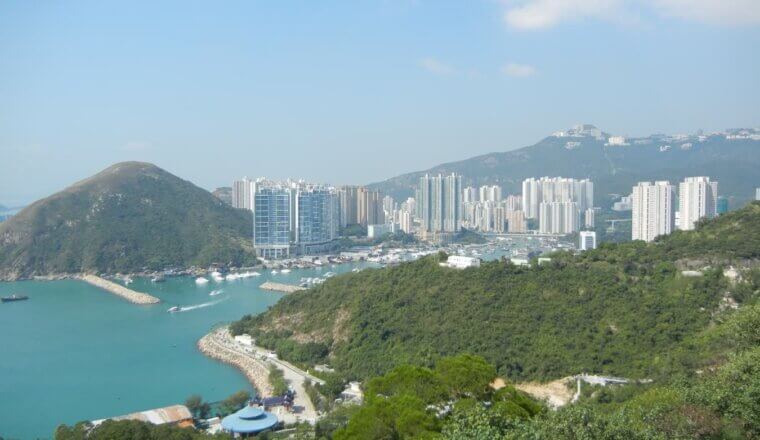
GET YOUR FREE TRAVEL STARTER KIT
Enter your email and get planning cheatsheets including a step by step checklist, packing list, tips cheat sheet, and more so you can plan like a pro!

- Visit Oyster on Facebook!
- Visit Oyster on Pinterest!
- Visit Oyster on Instagram!
- Visit Oyster on Twitter!
- Subscribe to stay up to date!
Yes, send me expert tips and deals!
By proceeding, you agree to our Privacy Policy and Terms of Use .
- Subtract one room 1 Rooms Add one room
- Subtract one adult 2 Adults Add one adult
21 Things You Need to Know Before Visiting Hong Kong
See recent posts by Kyle Valenta
Hong Kong has its reputation. In fact, depending on who you're talking to, it has many reputations. To some, it's a bland corporate hub for expats. To others, it's a dizzying blend of old and new, mixing Chinese and Western cultures. In the end, Hong Kong is all of these things -- and that's what makes it one of Asia's most exciting cities. With an iconic skyline , towering mountains, and a glittering harbor, the city is an absolute stunner, and once you scratch below the surface, there are a ton of secrets to uncover. With that in mind, we've put together 21 things you need to know before landing in this fascinating place.
1. Hong Kong is massive, busy, and crowded.
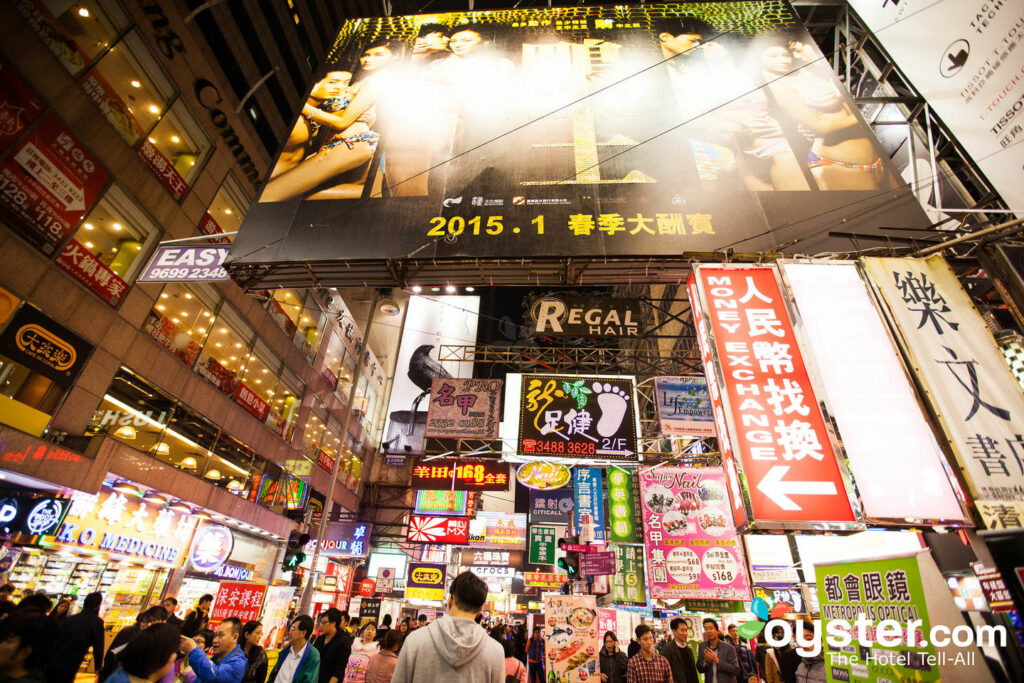
Hong Kong/Oyster
If you’re expecting sanitized Singapore streets when you touch down in Hong Kong, you’ll be sorely disappointed. To be clear, this is not Ho Chi Minh City or Bangkok, but Hong Kong is one of the world’s most densely populated cities (the total population comes in at over 7.3 million). To exacerbate things, living quarters in Hong Kong are some of the smallest in the world — around 470 square feet on average, according to the South China Morning Post . That means the streets are packed with people escaping their cramped home lives day and night. That’s especially true in Mong Kok, Tsim Sha Tsui, Central, Causeway Bay, and Sheung Wan — where tourists and locals are packed together most tightly. If you’d like to see the city at its least crowded, avoid trade fair seasons and mainland China holidays like Golden Week.
2. It also has some of the best street life in the world.
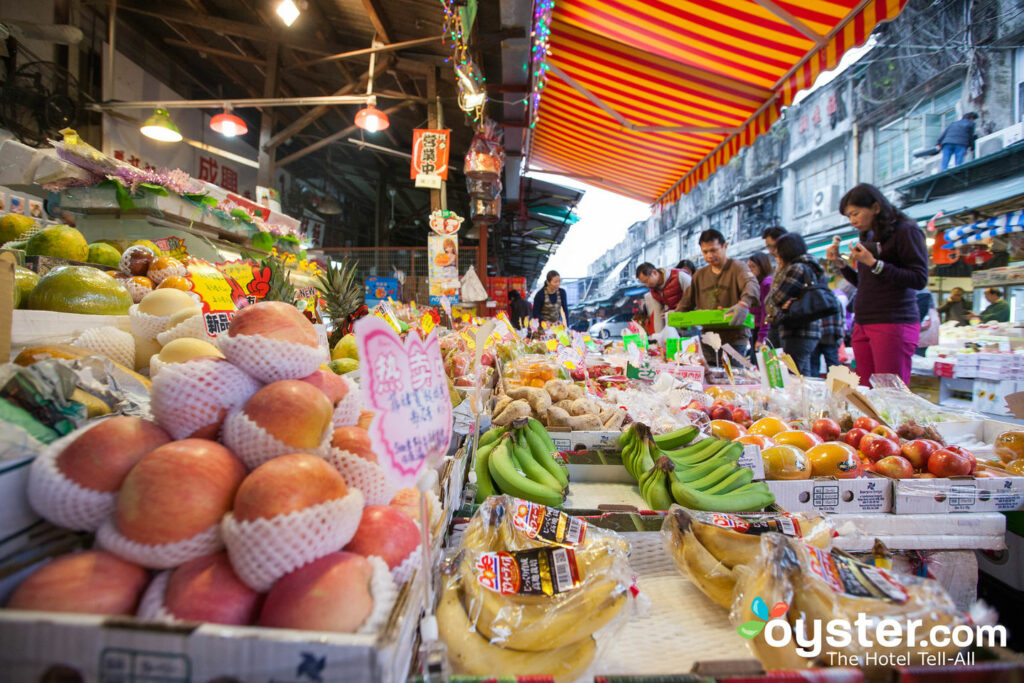
Fruit Market/Oyster
With all of those crowds comes vibrant street life. In Hong Kong, the sidewalks always thrum. This makes for great people-watching, eating, shopping, and sightseeing. Nearly every neighborhood has some sort of atmospheric wet market, where vendors sling produce, meat, and seafood alongside all manner of dried goods. Street food is a major must-try, especially in bustling neighborhoods like Mong Kok. If you have a translator, you can also visit one of the fortune-tellers that sit underneath the highway near Causeway Bay. They excel in getting cosmic revenge on those who have wronged you. However, no matter where you end up, have your camera ready because between the neon signs and people clamoring for space, there’s never a shortage of things to see.
3. You'll spend far more money than you expected.
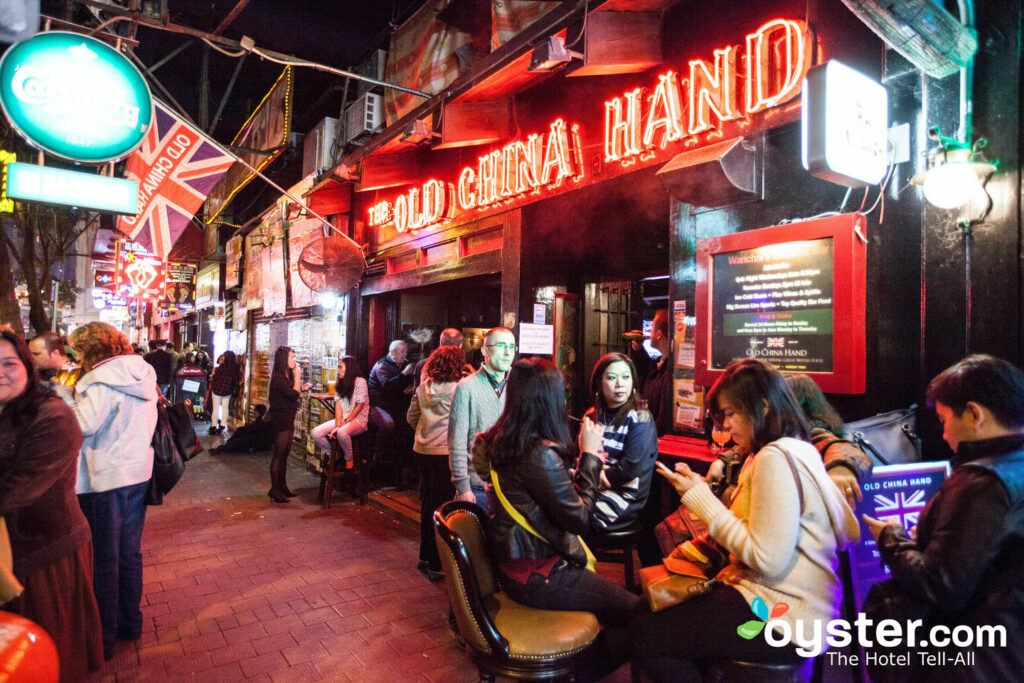
Lockhart Road/Oyster
It’s perhaps no surprise that Hong Kong is expensive. After all, it’s a city where you can find two Gucci stores on adjacent blocks, where luxury malls are attached to equally luxurious hotels, and where nearly every street seems to be navigated by several Teslas. You’re likely to be shocked by just how much damage you can do while shopping and dining. Along the Central–Mid-Levels escalators, in the heart of trendy Soho, even a meal at a casual mid-range restaurant can exceed $100 for two — without alcohol or dessert. When it comes to shopping, the city is flush with malls, but again, price tags at even athleisure outfitters and indie boutiques can top those in other notoriously expensive destinations like New York City and Paris.
4. But you can score great bargains, if you play it right.
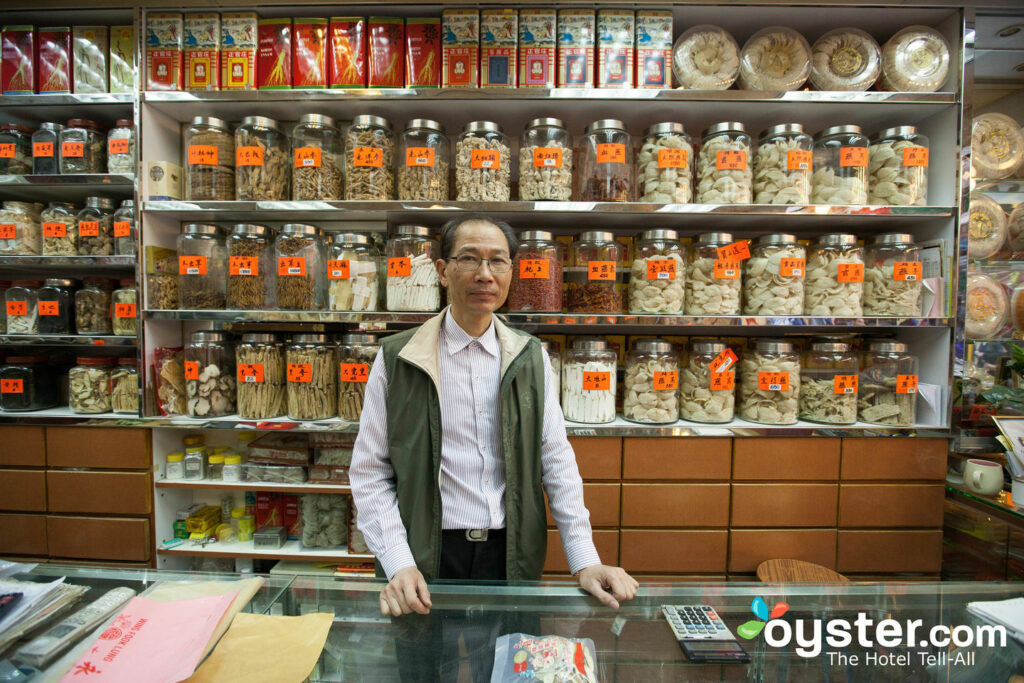
Market/Oyster
While Hong Kong can feel like an urban playground for the rich, it’s also possible to land some bargains while in town. You’ll find a number of simple budget and mid-range hotels, often for rates that are similar to those in Europe and the United States. That’s particularly true of chains like iClub, as well as independent properties like the Xi Hotel in Tsim Sha Tsui. Will you be flush with perks during your stay? No. But if clean rooms, a prime location, and powerful air-conditioning are all you need, you can spend well under $100 a night. You’ll also save a ton of money by eating in the city’s more local spots, particularly in Mong Kok, Sheung Wan, Wan Chai, and Tsim Sha Tsui. The open-air markets make for great bargain shopping, and can be found in almost every neighborhood. Just be sure to bring cash (more on that below).
5. Shopping is everything (and everything is a mall).
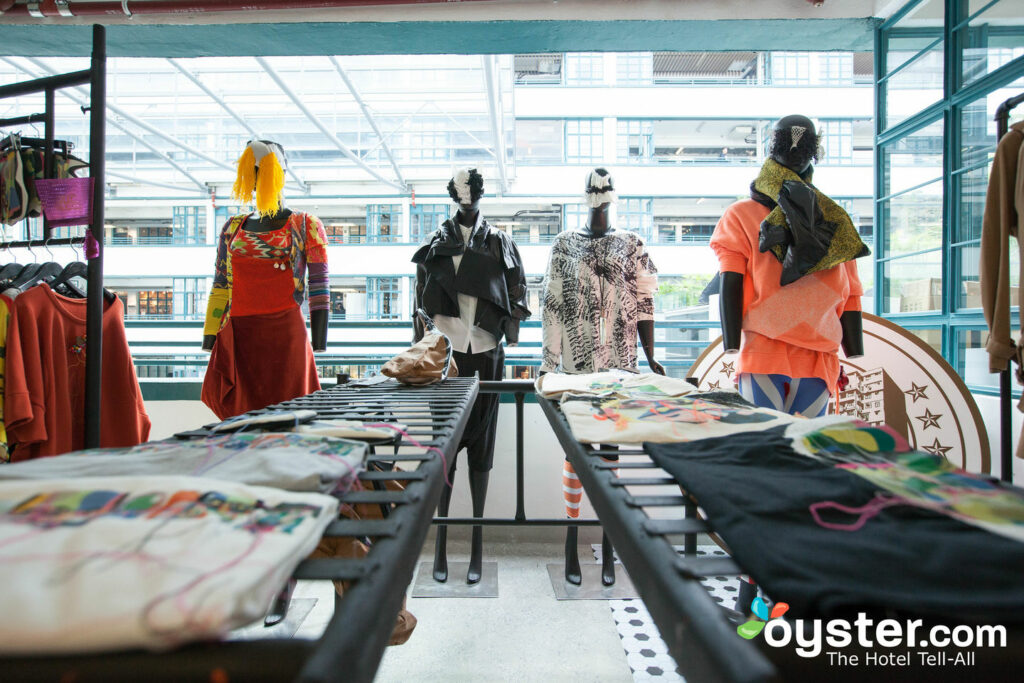
While there is no formal count of the city’s shopping centers, the number of malls is well over 100 by even casual observers. However, when we refer to malls in Hong Kong, we aren’t talking about the typical suburban, cookie-cutter spots that you’ll find in North America. Here, the mall is a cultural touchstone: Floor after floor of wildly popular restaurants give way to layers of luxury stores, indie boutiques, only-in-Hong-Kong designer brands, streetwear, vintage goods, bespoke housewares, and much more. Check out K11 Art Mall if you’re looking for trendier offerings, or head to Times Square, Pacific Place, or Landmark for high-end items. There are malls on every block, and most are worth exploring — particularly PMQ, the former police barracks that now serve as a local design incubator. Back at street level, you can find posh indie boutiques in Soho, Star Street (as well as Moon and Sun Streets) in Wan Chai, Sneaker Street in Mong Kok, and Hollywood Road in Sheung Wan.
6. The arts scene is booming.
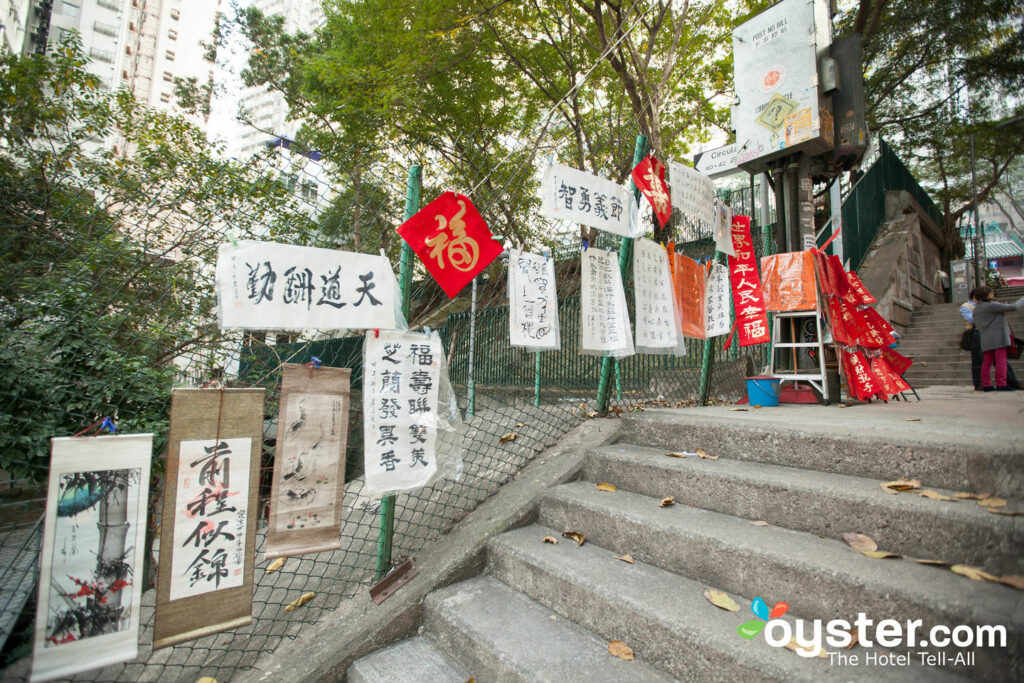
Antique Street/Oyster
Since 2013, Hong Kong has been home to one of the world’s largest Art Basel fairs, though nearly every major gallery in the United States and Europe has an outpost here. That includes White Cube, Perrotin, Gagosian, and Pace. But if you’re willing to dig a little deeper, the city is flush with less formal art spaces as well. Check out the alley walls of Sheung Wan and Central, where street art is abundant. For equally subversive — but more formally curated — art, head to Oi! in Fortress Hill, or Para Site, which is near the Quarry Bay MTR station and mounts multi-floor group shows that touch on socially relevant issues and politics with striking results.
7. You'll have to carry lots of cash.
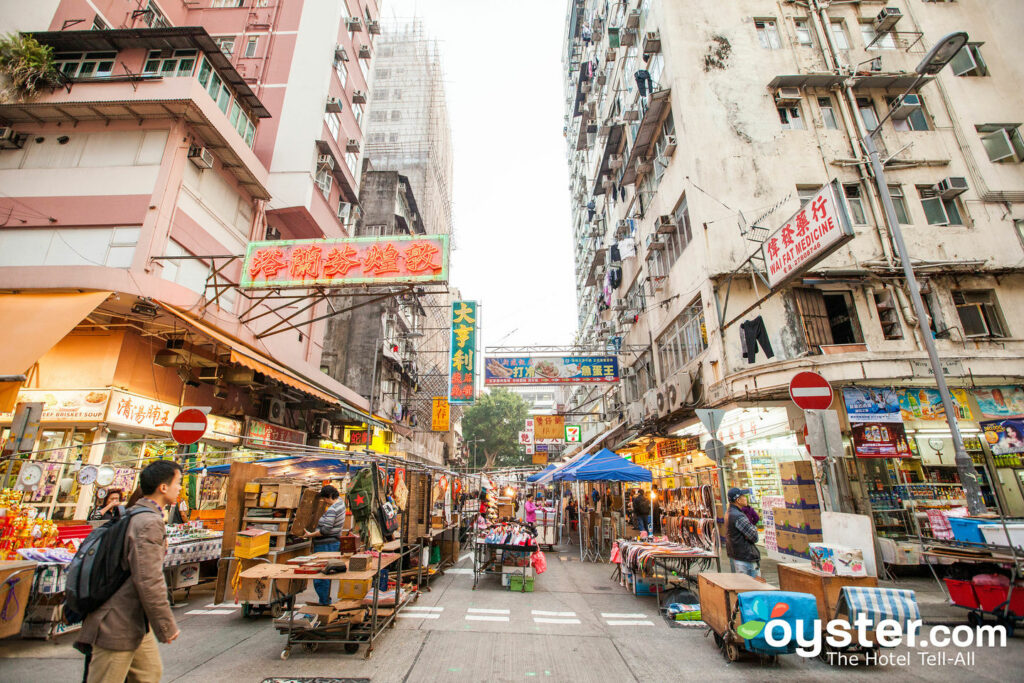
Hong Kong Streets/Oyster
While Hong Kong often feels like a futuristic wonderland of efficient trains and towering skyscrapers, not every aspect of it is quite so 21st century. You’ll find that most major retailers, mall shops, upmarket restaurants, and hotels all accept credit and debit cards. However, cash is still king in many corners of the city. As of 2018, the MTR can only be accessed by cash payments on an Octopus Card (a pre-paid fare card that you tap to enter the city’s subway system). Additionally, Uber isn’t common here and the city’s street-hailed taxi network doesn’t accept credit cards either. If you’re eating in any of the traditional mom-and-pop restaurants, don’t expect to to use your credit card. Luckily, plenty of international banks have ATMs throughout the city.
8. Get an Octopus Card and use the MTR system.
The MTR, an ever-expanding network of clean and efficient train lines, runs underneath much of the city. You’ll want to rely on this for the majority of your navigating needs in Hong Kong. While taxis are plentiful, they can be pricey (especially for cross-harbor journeys and at night). The city’s traffic situation is also notoriously horrible. During peak daytime hours, trains run as often as every three minutes, and stations are safe, big, air-conditioned, and packed with stores. Simply pay a cash deposit, buy a pre-paid Octopus Card at any customer service kiosk in the MTR stations during operating hours, and swipe in and out for every ride. The fares are calculated on how far you travel within the system, though it’s easily the most reasonably priced and quickest way to travel around Hong Kong.
9. English will get you far, but not everywhere.
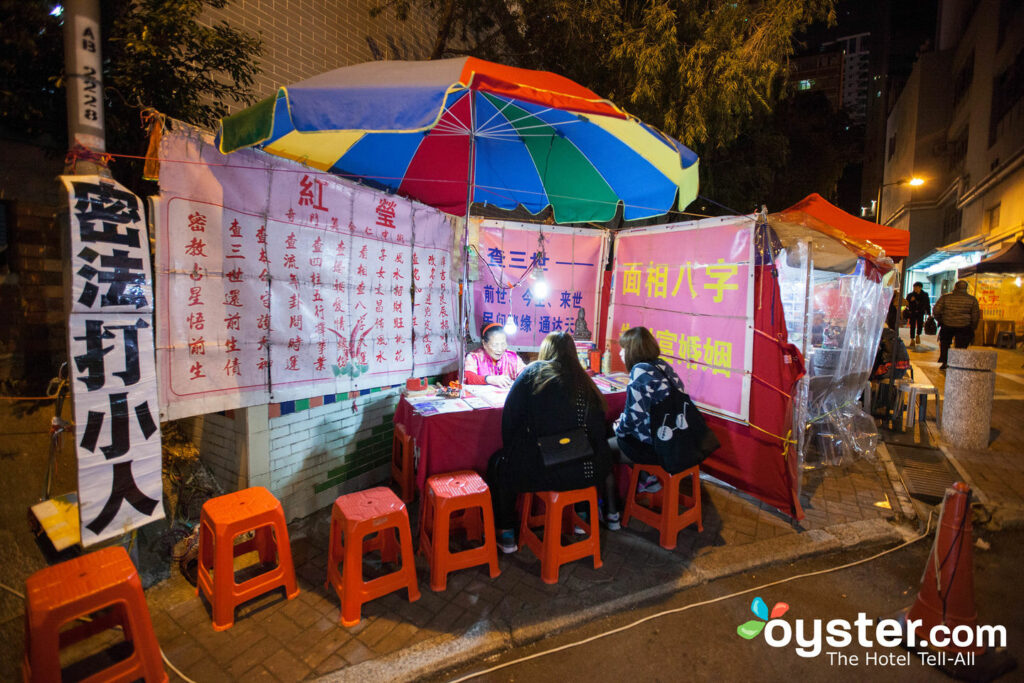
Fortune-Tellers/Oyster
To call Hong Kong’s history — both distant and more recent — complex is a major understatement. It was part of China until 1842, when it became a British colony, and then reverted back to China in 1997 as a special administrative region (more on that later). That back and forth status, as well as the city’s position as a world financial hub, has led it to become a melting pot of sorts. And while the British legacy (and diverse population) has given English a prominent place here, don’t expect it to get you everywhere. There are plenty of corners of the city where Cantonese is the main language — that includes street food workers, signage, fortune-tellers, and restaurant menus. However, nearly all of the neighborhoods along Hong Kong Island’s north shore and major tourist hubs in Kowloon (like Mong Kok and Tsim Sha Tsui) cater to English speakers. In these parts of towns, menus are bilingual or often only available in English.
10. Nature is always close at hand.
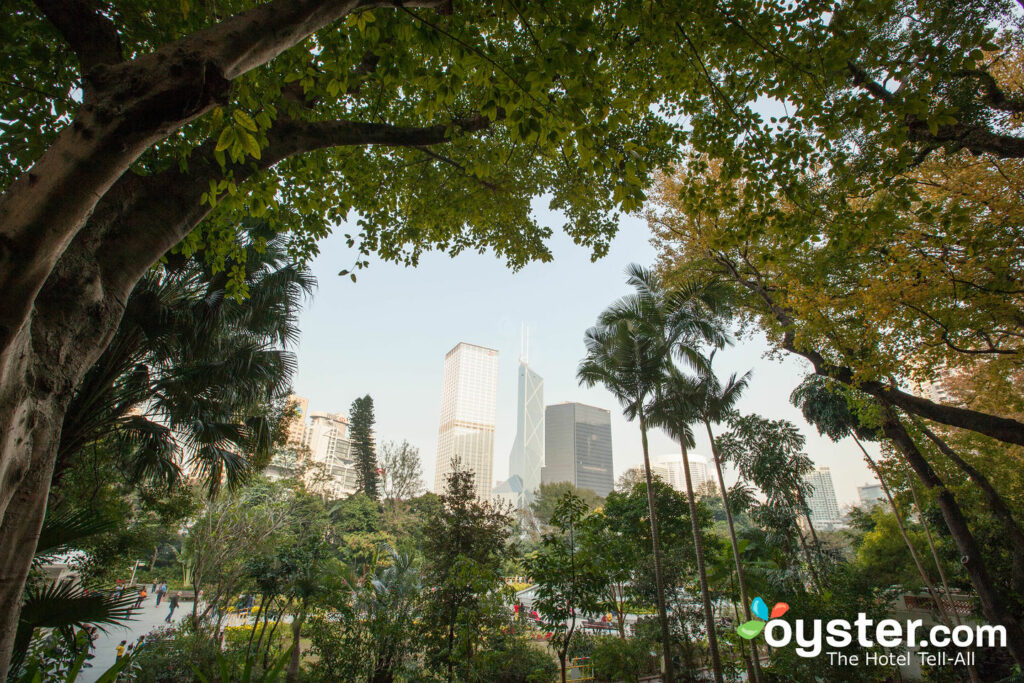
Botanical Gardens/Oyster
When you think of Hong Kong, images of untouched forests and long, quiet hikes might not immediately spring to mind. However, at almost every turn, the city’s preserved green spaces are visible. That’s especially true on Hong Kong Island, where Victoria Peak (called The Peak by locals) towers over the island and is home to one of the city’s most popular walks (along with stunning views of Victoria Harbour and the city below). The funicular to the top is the most popular way to get there, but we recommend taking a taxi up and the tram back down to avoid long lines. Need more escape options? Check out Dragon’s Back, Lantau Island, Yin Tsz Ngam, and Lamma Island. These are all accessible by bus, ferry, private boat, or the MTR.
11. There's plenty of traditional life to be found.
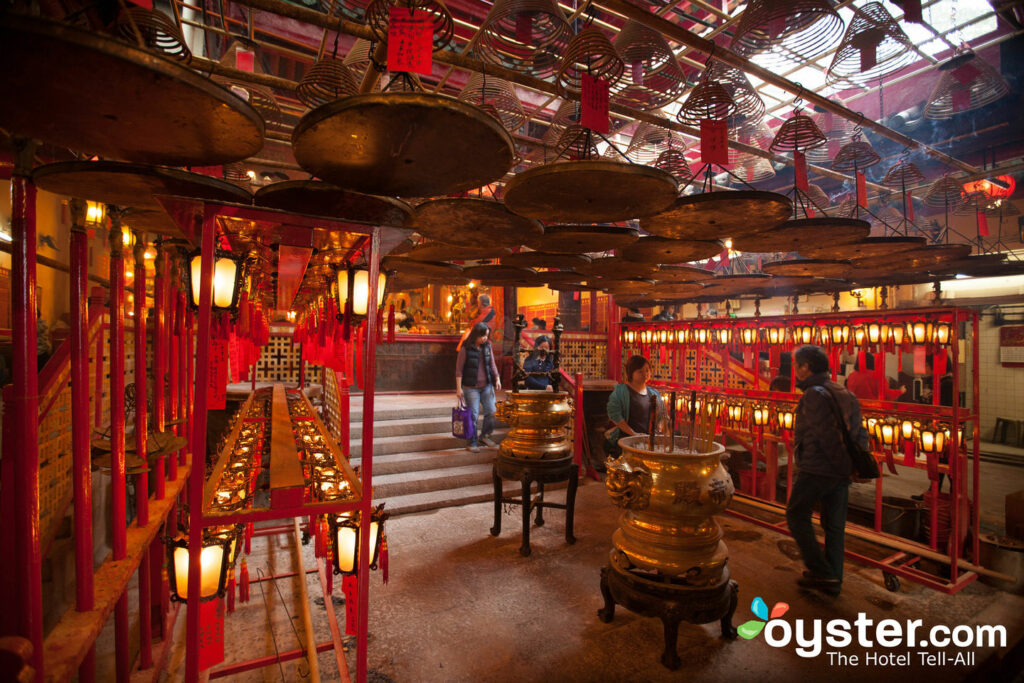
Man Mo Temple/Oyster
We’ve already mentioned the fortune-tellers in Hong Kong, but this city’s cultural roots run far deeper and farther into the past. You could easily spend a few days touring Hong Kong’s temples, which are tucked into hillsides, underneath towering skyscrapers, and amid tranquil parks. These include Confucian and Buddhist temples — the most notable of either category is Man Mo Temple. Considered the oldest temple in the city, Man Mo is one of Sheung Wan’s gems — massive spiral cones of incense flood the space, while the devout offer their prayers at altars with red lanterns all around. Tin Hau Temple and Po Lin Monastery are also magnets for the spiritual, while Wong Tai Sin Temple is home to some of the city’s most famous fortune-tellers. If you’d prefer to sample local fare, opt for the restaurants of Yau Ma Tei, where dim dum and steaming noodle plates clamor for space next to pots of local tea.
12. It's oppressively hot and humid for much of the year.
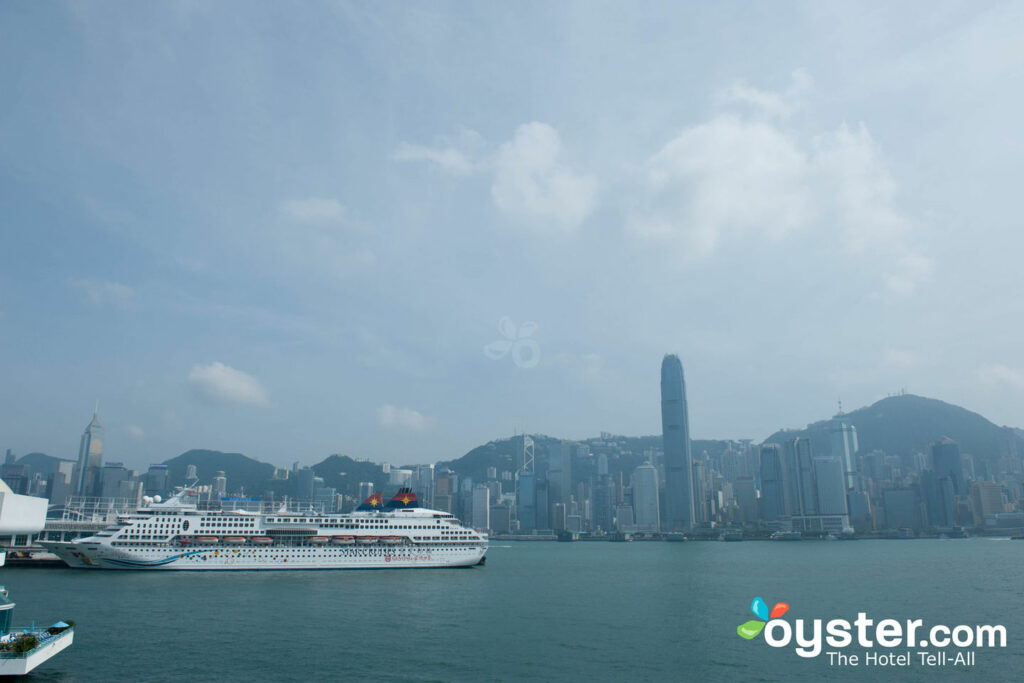
Victoria Harbour/Oyster
When Hong Kong locals say summer, what they mean is the season that stretches from late April until late October. The climate is officially known as humid subtropical here, meaning that there are also distinct rainy and dry seasons. With this in mind, trade fair season and Golden Week come with temperatures in the high 80s plus equally steamy humidity levels. You can expect lots of cloud cover as well as afternoon and evening showers on many days as well. Exacerbating matters is the more formal vibe of Hong Kong, where shorts and tank tops are rarely on display. If you’re an expat living here, your days will likely be spent in full business attire, making things even more uncomfortable. However, with the high volume of mega-malls, there’s always an air-conditioned way of getting from point A to point B.
13. Hong Kong is one of the most diverse cities in Asia.
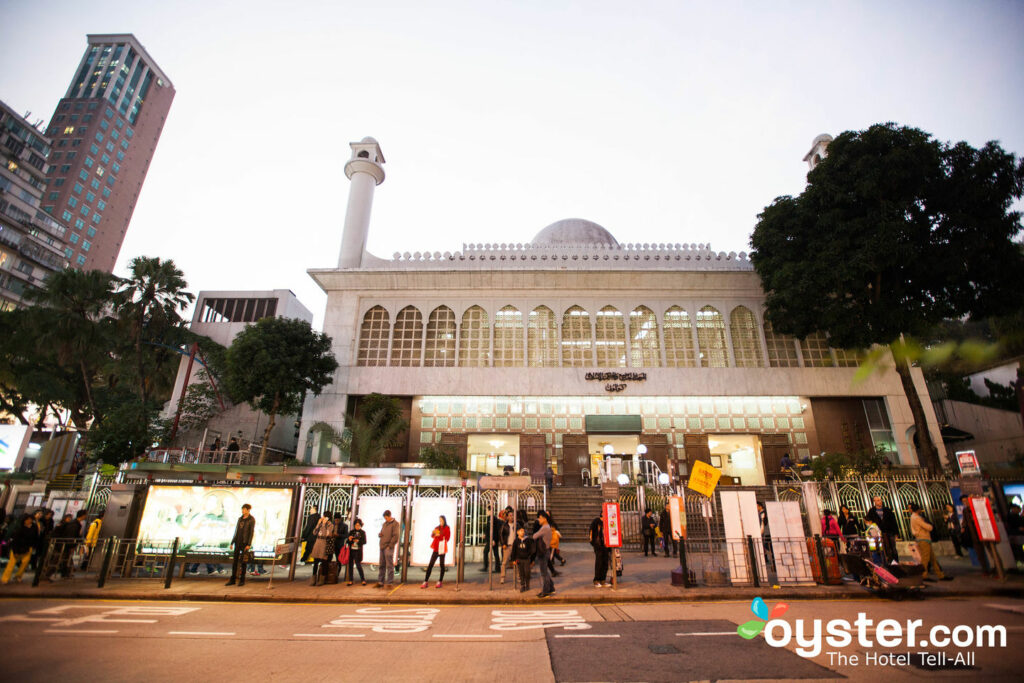
Kowloon Mosque/Oyster
When you break it down on paper, Hong Kong is undoubtedly a city where the majority of citizens are Chinese. However, according to the city government, there are sizable communities of expats from around the world that call Hong Kong home (even if it’s only for a few years). Europeans, Australians, Americans, Indians, Nepalese, Indonesians, Filipinos, and Pakistanis all live here in not-insubstantial numbers. That means that in most parts of town, you won’t be the only outsider, which goes a long way in helping many travelers feel comfortable. Expect international food and beverage options in most of the popular neighborhoods, particularly in Central and Soho.
14. There are plenty of great urban beaches.
The most famous beach in Hong Kong is Repulse Bay, which becomes flooded with tourists and locals on hot summer days. It’s also easy to reach from the neighborhoods of Hong Kong Island. However, there are a number of other less-trafficked strips of sand that feel a bit more tranquil. If you’re willing to hike, grab a boat, and camp out, opt for Tai Long Wan. It feels lifted right out of the Caribbean. It’s also worth checking out the beaches of Lamma Island and spots like Hap Mun Wan. Tip: Much like in Rio de Janeiro, you shouldn’t sleep on the beaches here either.
15. There are stunning views from almost anywhere.
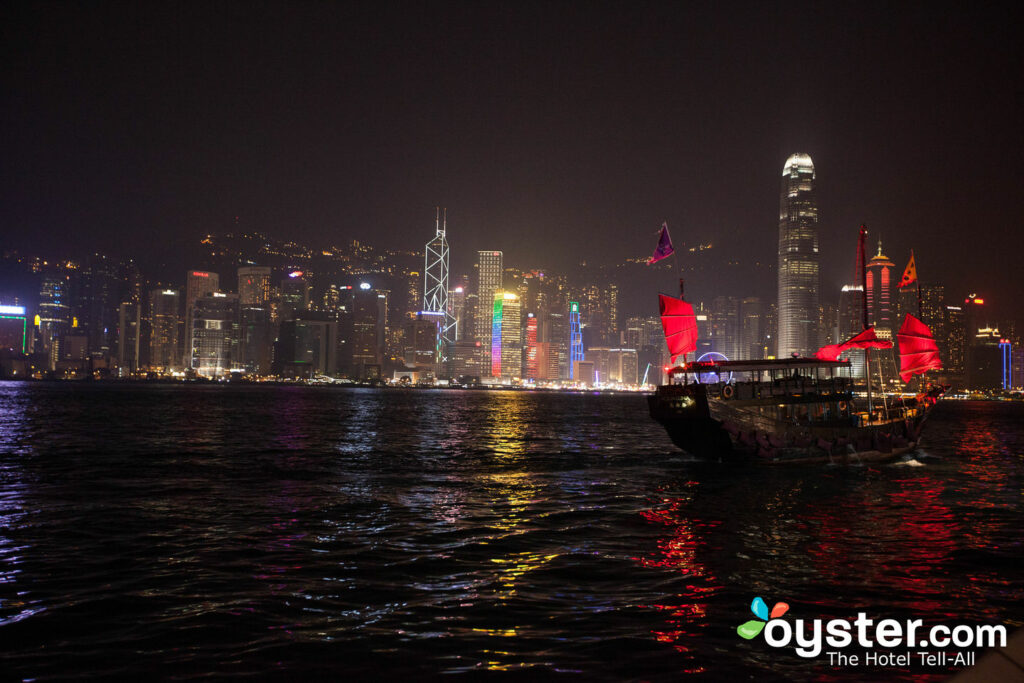
In a city where few buildings are under 30 stories tall, where there’s blue sea around every corner, and where mountains tower over the whole scene, you can expect the views to be nothing short of spectacular. And the truth is that those views are often astounding from all angles. For instance, look left or right as you ascend the Central–Mid-Levels escalators at night and you’ll see long avenues packed with traffic, framed by skyscrapers, and filled with neon signage. Skyline views across Victoria Harbour in either direction — from Kowloon or Hong Kong Island — are picture-perfect. Even lower-floor hotel rooms are often likely to have glimpses between the forest of high-rises all around. If you want to get a bird’s-eye view of it all, head up to The Peak and walk the circuit around the top.
16. SAR status means WhatsApp, Facebook, and Google all work normally.
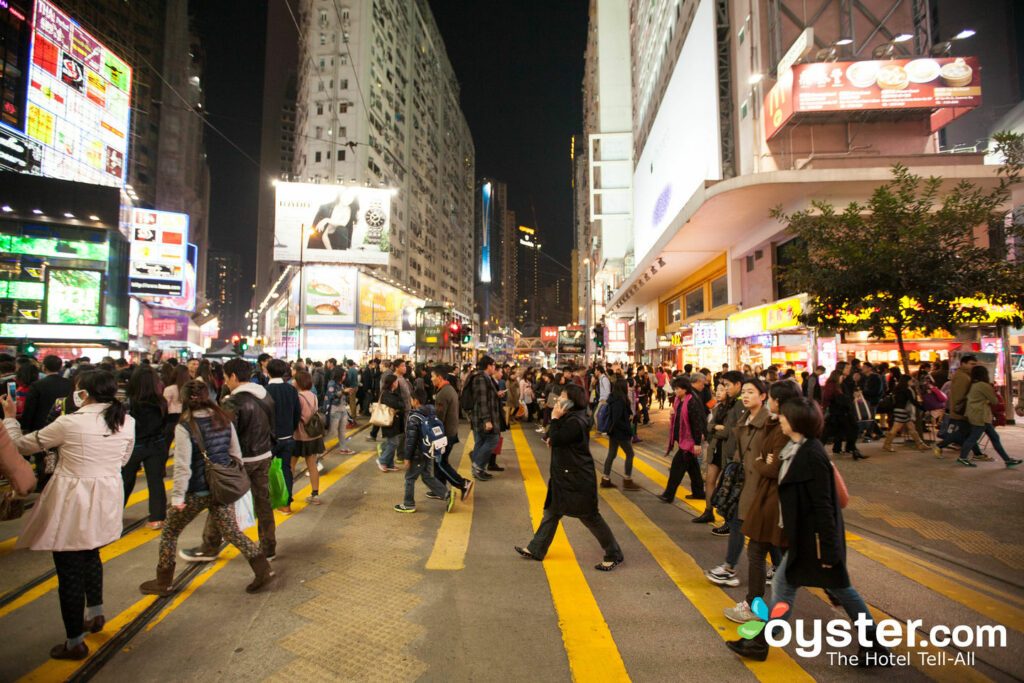
It’s one of the major concerns when travelers first decide that they want to visit Hong Kong: Can I use social media like I normally do? The answer is yes — for now. While Hong Kong is administered by China, it enjoys SAR status and some of the more oppressive measures found on the mainland don’t apply here. Everything from Google and Facebook to WhatsApp and other globally available messaging services can be used normally. The city also has a separate currency from China — it’s the Hong Kong dollar, not the renminbi — and there are no visas required for most travelers from Western Europe, South Asia, Southeast Asia, and the Americas. What will happen after 2047, when Hong Kong officially becomes Chinese, is a bit less clear. But for now, it’s business as usual.
17. The city has a big sweet tooth.
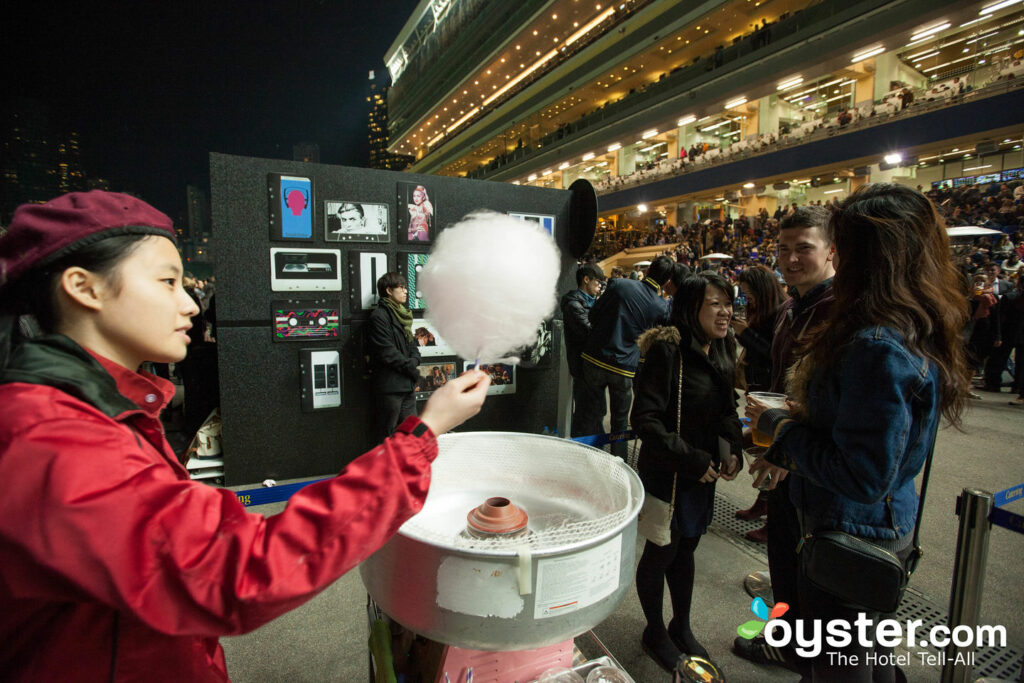
Hong Kong Jockey Club/Oyster
Bakeries can be found everywhere in Hong Kong, from MTR stations to malls, and they sling all kinds of confections, such as sponge cakes and sweetheart (or wife) cakes. But if you’re after iconic Hong Kong sweets, and don’t feel like exploring, stick to two easy-to-find treats. The egg tart, with its custard filling and flaky, buttery crust, is a staple of almost any bakery in the city. Tai Cheong Bakery is the city’s most famous joint for this sweet snack. The egg waffle (or egg puff) balances a subtle sweetness with both crispy and chewy textures. These, too, are found in nearly every neighborhood, though trendier new joints will slather them in toppings like kaya, coconut milk, and Nutella. You can find egg waffles at Master Low-Key Food Shop, which has a branch in Fortress Hill.
18. Contrary to popular belief, nightlife does exist here.
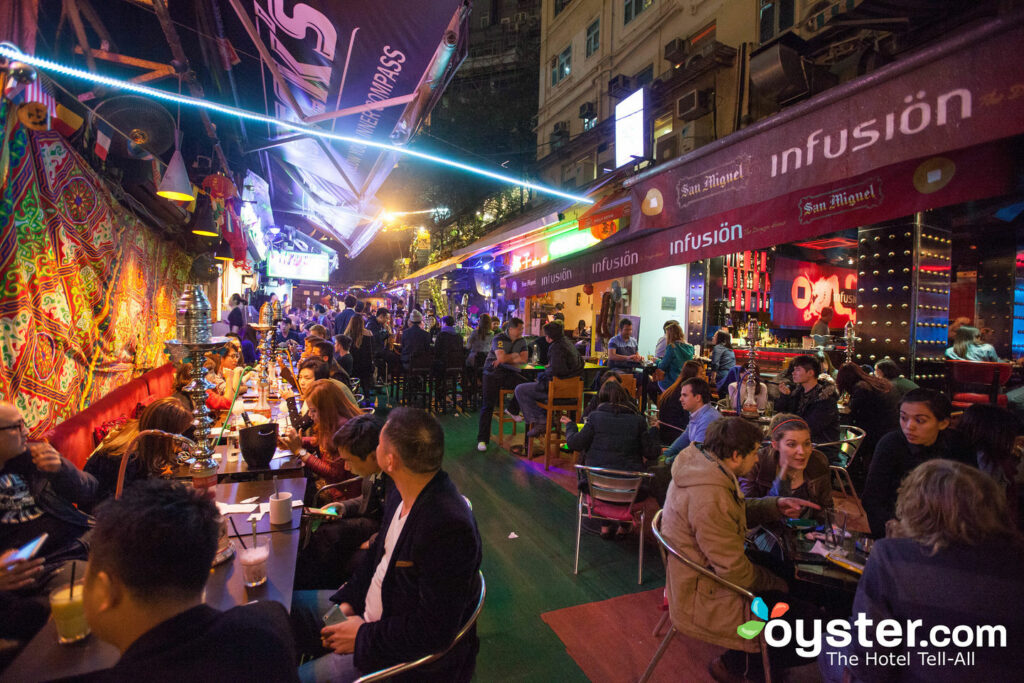
Lan Kwai Fong/Oyster
Hong Kong doesn’t have the best reputation when it comes to nightlife, but this is not a sleepy, soulless place. While the city doesn’t blaze like Tokyo or push hedonistic excesses like Bangkok, there’s a decent spread of entertainment to keep you going well into the evenings. The bars and pubs of Tsim Sha Tsui are filled with tourists and locals quite late, while the trendy expat spots in Soho and Central often spill out onto the sidewalk. Lan Kwai Fong is the city’s nightlife heart and comes alive as happy hour descends upon the city. On weekend nights, the area turns into one big open-air bar, with doors open and patrons filling the streets. Looking for something a bit classier? Sky bars are big business here, though expect to pay eye-watering prices for cocktails. The city also has an open, if small, LGBTQ nightlife scene that provides much-needed spaces for the community to mingle.
19. Don't expect an early-morning coffee — or early morning anything.

Western Market/Oyster
Unlike New York City — which is in many ways similar to Hong Kong — you won’t see harried office workers stopping at local cafes for a coffee fix at 7 a.m. In fact, it’s hard to find much of anything open in Hong Kong at that hour. The city starts late, and breakfast is often not offered until 8 a.m. (or later). Most of the city’s bespoke coffee shops don’t get going until 8 or — more frequently — 9 a.m. That means you’ll have to rely on your hotel’s kettle or Nespresso machine (or hope that one of the Starbucks near your hotel has early hours, but that’s not always a given either).
20. Hit up the classic tea shops and canteens.
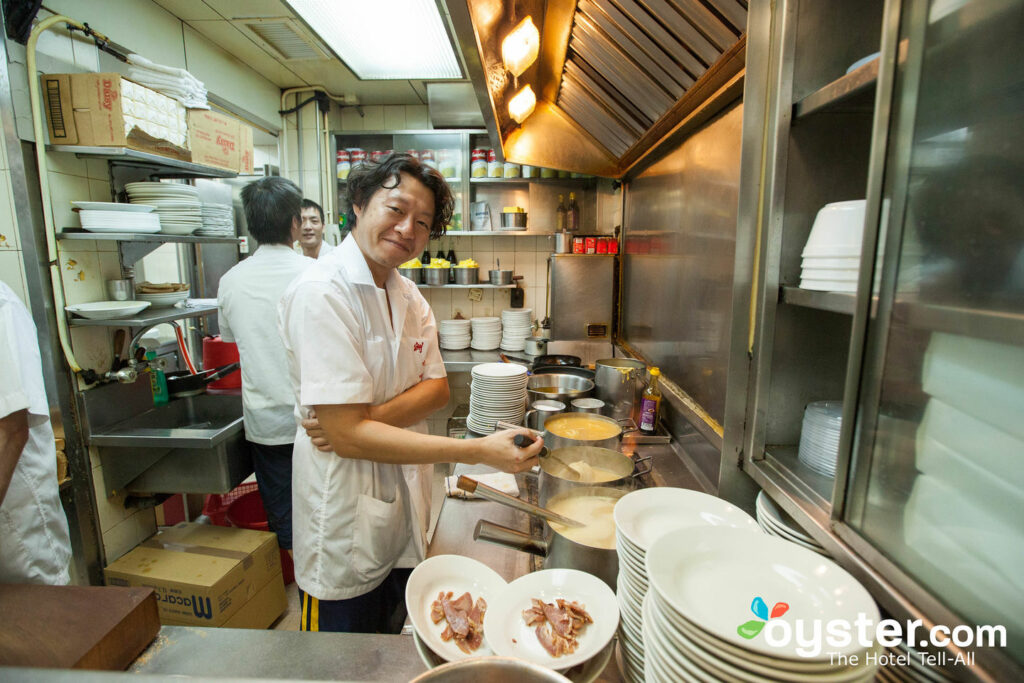
Australia Dairy Company/Oyster
While dim sum steals most of the thunder in Hong Kong — particularly because of its regional Cantonese origins — there are plenty of other local delights you should indulge in while visiting. Chief among those are the city’s teahouses and canteens. These bare-bones, no-frills, often packed-to-the-gills spots can be found in all corners of town, from touristy Tsim Sha Tsui and Causeway Bay to Ma Tau Wai, Sheung Wan, and Fortress Hill. Few eating experiences in Hong Kong are quite as enjoyable as sharing tables with lively families, selfie-taking teens, elderly locals, and solo diners at places like Australia Dairy Company, Lan Fong Yuen, and Yee Shun Dairy Company. Grab a milk tea and don’t forget to add an order of French toast, which is often slathered in butter and drenched in kaya jam or coconut milk.
21. It's incredibly user-friendly once you learn the basics.
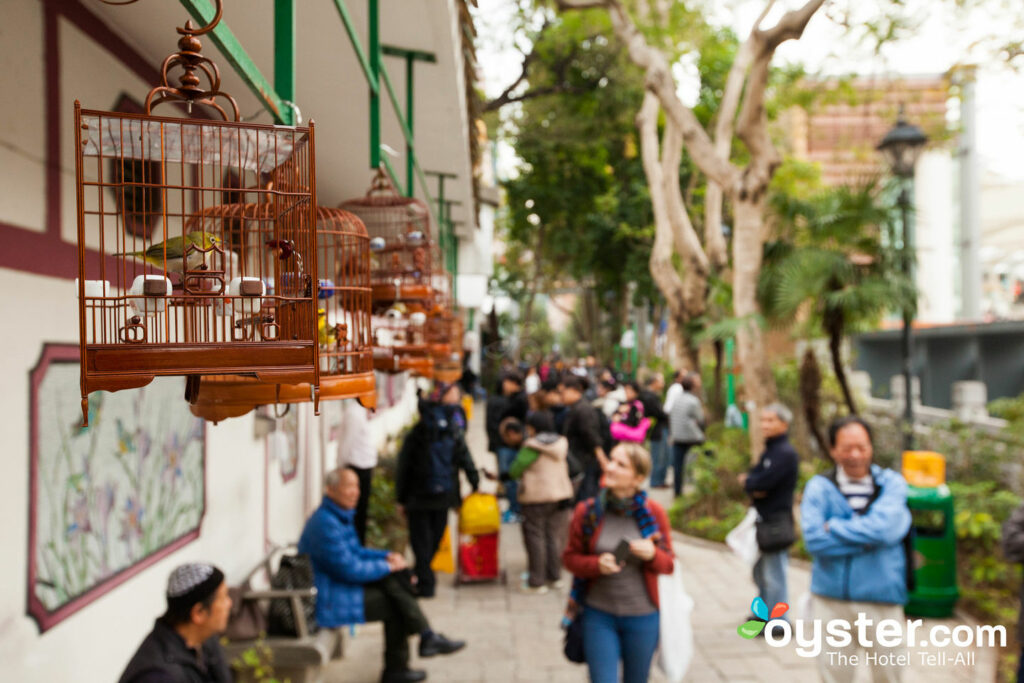
For starters, you should know that the city is essentially divided into Kowloon and Hong Kong Island. The former is often billed as the more traditionally Chinese (Cantonese, of course), while the latter is home to the bulk of corporate headquarters and expat enclaves. Cars travel on the left in Hong Kong and you should follow walk and don’t walk signs diligently. On Hong Kong Island, you should be prepared for hills and steps, and note that MTR stations throughout the city are more like events: They’re massive labyrinths packed with shops and fast-food outlets. Additionally, get used to entering mixed-use high-rises. Art galleries are often on the same floor as corporate offices, while restaurants may sit three floors up, next to private apartments. Space is at a premium here, after all.
Overall, the city is one of the most approachable urban centers in all of Asia. You’ll find that English is more widely spoken here than in Tokyo, Beijing, Seoul, or Bangkok. Plus, everything from the easy-to-navigate subway system to the clean and calm malls are familiar enough to make travelers feel more comfortable and less out of their element.
Hotel Pick: The Upper House
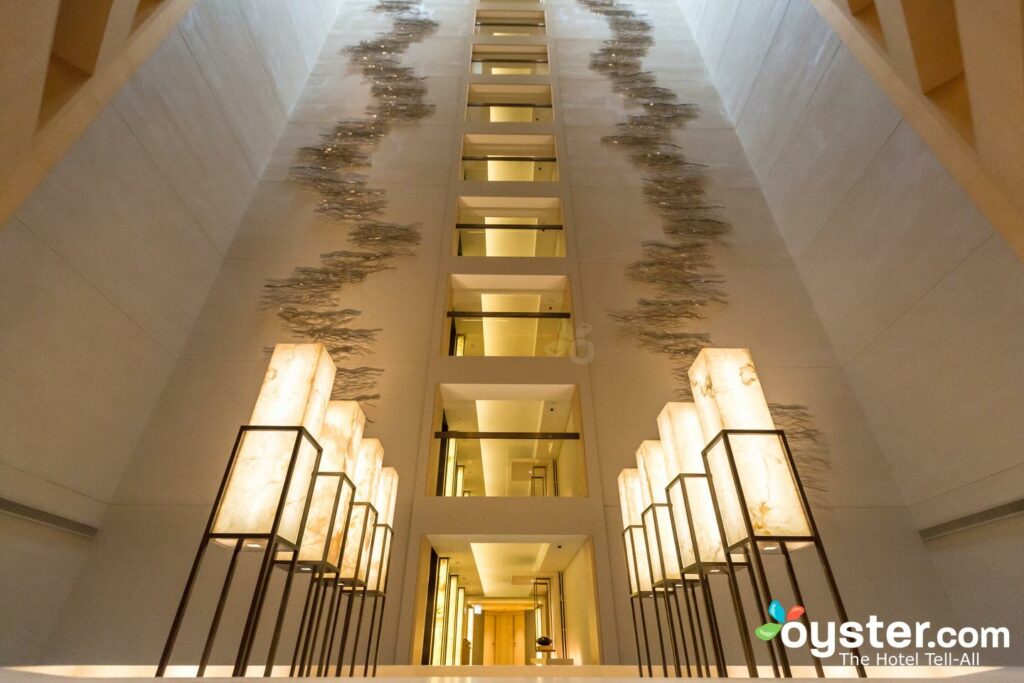
The stunning architecture at The Upper House in Hong Kong’s exclusive Central district
Pricing for The Upper House
The Upper House is one of the most buzzed about luxury hotels in Hong Kong. This design-forward property has an exclusive perch with excellent city and harbor views, plus striking interiors and an impeccable contemporary art collection. The 117 rooms are some of the most spacious in town, with soothing minimalist decor plus free Maxi Bars and posh spa bathrooms (many with amazing views). Cafe Gray Deluxe and Bar holds sought-after tables overlooking the city skyline, while additions like free yoga and a complete gym all make this a true urban oasis. We especially love The Library, which holds exclusive gatherings and talks during events like Art Basel.
You’ll Also Like:
- How to Budget for a Trip in 4 Popular Destinations in Asia
- 5 Places That Are Perfect for Just a 24-Hour Visit
- 8 Amazing and Affordable Beach Destinations in Asia
All products are independently selected by our writers and editors. If you buy something through our links, Oyster may earn an affiliate commission.
Top Stories

- Travel Tips
Top 11 Las Vegas Hotels on the Strip for Every Type of Traveler
By Christina Vercelletto

7 Bioluminescent Beaches and Bays That Glow at Night
By Stefanie Waldek

11 Things You Should Never Do on a Cruise
By Jason Leppert

- Travel Safety
Yosemite National Park Safety Tips
By Carol McPherson

The Ultimate Yosemite Packing Guide
By Caroline Morse Teel
Security Alert May 17, 2024
Worldwide caution, update may 10, 2024, information for u.s. citizens in the middle east.
- Travel Advisories |
- Contact Us |
- MyTravelGov |
Find U.S. Embassies & Consulates
Travel.state.gov, congressional liaison, special issuance agency, u.s. passports, international travel, intercountry adoption, international parental child abduction, records and authentications, popular links, travel advisories, mytravelgov, stay connected, legal resources, legal information, info for u.s. law enforcement, replace or certify documents.
Before You Go
Learn About Your Destination
While Abroad
Emergencies
Share this page:
Travel Advisory April 12, 2024
Mainland china, hong kong & macau - see summaries.
Updated due to new national security legislation in the Hong Kong Special Administrative Region.
Summary: Reconsider travel to Mainland China due to the arbitrary enforcement of local laws, including in relation to exit bans, and the risk of wrongful detentions.
Exercise increased caution when traveling to the Hong Kong Special Administrative Region (SAR) due to the arbitrary enforcement of local laws .
Reconsider travel to the Macau Special Administrative Region (SAR) due to a limited ability to provide emergency consular services . Exercise increased caution when traveling to the Macau SAR due to the arbitrary enforcement of local laws .
See specific risks and conditions in each jurisdiction .
Consulate Messages
View Alerts and Messages Archive
Quick Facts
One month beyond the date of your intended stay
One page required for entry stamp
Not required for stays under 90 days
Embassies and Consulates
U.S. Consulate General Hong Kong & Macau 26 Garden Road Central, Hong Kong Telephone: +852 2841-2211, +852 2841-2225, +852 2841-2323 Emergency After-Hours Telephone: +852 2523-9011 Fax: +852 2845-4845 Email: [email protected]
Destination Description
See the U.S. Department of State’s Fact Sheet on Hong Kong for information on U.S.-Hong Kong relations.
Entry, Exit and Visa Requirements
Visit the Hong Kong Immigration Department website for the most current visa information.
Find information on dual nationality , prevention of international child abduction , and customs regulations on our website.
To enter the Hong Kong Special Administrative Region (SAR), you need:
- a passport that is valid for at least one month beyond the date of your intended stay;
- adequate funds to cover your stay without working locally; and
- evidence of onward/return transportation.
You only need a visa if:
- You plan to stay for more than 90 days – obtain an extension with the Hong Kong SAR Immigration Department, if necessary.
- You plan to work or study in the Hong Kong SAR – visas must be obtained prior to departing the United States.
You must possess a valid passport and PRC visa to enter the People’s Republic of China (PRC) from Hong Kong. Further information on travel to and around the PRC is available on our China International Travel Information and Macau International Travel Information pages.
West Kowloon Train Station: The West Kowloon Train Station is the terminus of the Hong Kong section of the Guangzhou–Shenzhen–Hong Kong Express Rail Link (XRL). Once passengers pass through the Hong Kong immigration exit checkpoint on their way to mainland China inside the train station or on the train itself in that area, they are in the mainland Port Area. Likewise, passengers arriving from mainland China are in the mainland Port Area until they exit the Hong Kong immigration entry checkpoint.
Health Requirements: There are no COVID-related entry requirements for U.S. citizens. The U.S. Department of State is unaware of any HIV/AIDS entry restrictions for visitors to or foreign residents of the PRC, including Hong Kong.
Safety and Security
Since the imposition of the National Security Law on June 30, 2020, the People’s Republic of China (PRC) has demonstrated an intent to use the law to target a broad range of activities such as acts of secession, subversion, terrorism, and collusion with foreign entities. The National Security Law also covers offenses committed by non-Hong Kong SAR residents or organizations outside of the Hong Kong SAR, which could subject U.S. citizens who have been publicly critical of the PRC and/or the administration of the Hong Kong SAR to a heightened risk of arrest, detention, expulsion, or prosecution. Mainland PRC security forces, including an Office for Safeguarding National Security, now operate in Hong Kong and are not subject to oversight by the Hong Kong SAR judiciary.
Drug and Alcohol Enforcement: PRC law enforcement authorities have little tolerance for illegal drugs, including marijuana and products containing cannabidiol, also known as CBD . Penalties for possessing, using, or trafficking illegal drugs in the PRC, including Hong Kong, are severe, and convicted offenders can expect long jail sentences, heavy fines, or the death penalty.
Hong Kong also has strict laws against driving under the influence of alcohol that can lead to immediate detention on a criminal charge.
Demonstrations: Participating in demonstrations or any other activities that authorities interpret as violating Hong Kong law, including the National Security Law, could result in criminal charges. On June 30, 2020, as part of its color-coded system of warning flags, the Hong Kong police unveiled a new purple flag, which warns protesters that shouting slogans or carrying banners with an intent prohibited by the law could now bring criminal charges. Any protests that take place without a permit are considered illegal.
U.S. citizens are strongly cautioned to be aware of their surroundings and avoid demonstrations.
If you decide to travel to Hong Kong:
- Monitor local media, local transportations sites and apps like MTR Mobile or CitybusNWFB , and the Hong Kong International Airport website for updates and traffic advisories.
- Avoid the areas of the demonstrations.
- Exercise caution if you are in the vicinity of large gatherings or protests.
- Avoid taking photographs of protesters or police without permission.
- Be aware of your surroundings.
- Keep a low profile.
Hong Kong has a low crime rate. Even so, you should exercise caution when in congested areas and pay particular attention to personal belongings while in crowded areas and while traveling on public transportation. Violent crime, though rare, does occur.
- Take routine safety precautions.
- Report any concerns to the local police.
- Call “999,” the local equivalent to “911”
Please note that mace, pepper spray, stun guns, bullets, switch blades, knuckle-dusters and other self-protection weapons are banned in Hong Kong.
Do not buy counterfeit and pirated goods, even if they are widely available. Not only are the bootlegs illegal in the United States, but, if you purchase them, you may also be breaking local law. You may also pay fines or must give them up if you bring them back to the United States. See the U.S. Department of Justice website for more information.
Be alert to criminal schemes, such as internet, phone scams and dating scams, as well as financial scams. See the U.S. Department of State's and the U.S. Federal Bureau of Investigation (FBI)'s pages for information on scams.
Victims of Crime: Report crimes to the local police at “999” and contact U.S. Consulate General Hong Kong & Macau at +(825) 2523-9011. U.S. citizen victims of sexual assault should first contact U.S. Consulate General Hong Kong & Macau.
Remember that local authorities are responsible for investigating and prosecuting the crime. See our webpage on help for U.S. victims of crime overseas .
We can:
- help you find appropriate medical care.
- assist you in reporting a crime to the police.
- contact relatives or friends with your written consent.
- Provide general information regarding the victim’s role during the local investigation and following its conclusion.
- provide a list of local attorneys.
- provide our information on victim’s compensation programs in the United States .
- provide an emergency loan for repatriation to the United States and/or limited medical support in cases of destitution.
- help you find accommodation and arrange flights home.
- replace a stolen or lost passport.
Hong Kong has a crime victim compensation program available to U.S. citizens who are legal residents or tourists in Hong Kong. For more detailed information on the program and its requirements, please see the Hong Kong Social Welfare Department webpage. More resources for victims of crime in Hong Kong are available in our Help for U.S. Victims of Crime in Hong Kong information sheet.
Domestic Violence: U.S. citizen victims of domestic violence can/should contact the Hong Kong police and/or U.S. Consulate General Hong Kong & Macau for assistance.
Tourism: The tourism industry is generally regulated and rules with regard to best practices and safety inspections are regularly enforced. Hazardous areas/activities are identified with appropriate signage and professional staff is typically on hand in support of organized activities. In the event of an injury, appropriate medical treatment is widely available throughout Hong Kong. Outside of a major metropolitan center, it may take more time for first responders and medical professionals to stabilize a patient and provide life-saving assistance. U.S. citizens are encouraged to purchase medical evacuation insurance .
Local Laws & Special Circumstances
Criminal Penalties: You are subject to Hong Kong SAR laws, including certain PRC laws applied to Hong Kong. If you violate Hong Kong SAR laws, even unknowingly, you may be expelled, arrested, or imprisoned. Individuals establishing a business or practicing a profession that requires additional permits or licensing should seek information from the competent local authorities, prior to practicing or operating a business. Furthermore, some crimes are prosecutable in the United States, regardless of local law. For examples, see our website on crimes against minors abroad and the U.S. Department of Justice website.
Arrest Notification:
- If you are arrested or detained, ask police or prison officials to notify the U.S. Consulate General Hong Kong & Macau immediately. See our webpage for further information.
- Hong Kong must notify a U.S. consular officer within four days; however, this does not always occur in a timely manner.
- The PRC and Hong Kong SAR governments do not recognize dual nationality. The PRC and Hong Kong SAR governments may prevent the U.S. Embassy or U.S. Consulates General from providing consular services to dual U.S.-PRC citizens and U.S. citizens of Chinese descent. Please see the page on dual nationality for more information on the limits on consular notification and access to dual nationals.
- A consular officer may be the only authorized visitor during your initial detention period.
- Detention may last many months before a trial.
- U.S. Consulate General Hong Kong & Macau is unable to represent you in a legal matter.
- Travelers to the PRC should enroll in the U.S. Department of State’s Smart Traveler Enrollment Program (STEP) , and you may wish to have someone contact U.S. Consulate General Hong Kong & Macau if you are detained.
Hong Kong law provides for an independent judiciary, but PRC actions have eroded the judiciary’s independence and ability to uphold the rule of law, particularly in cases designated as involving national security. U.S. citizens traveling or residing in the PRC, including the Hong Kong SAR, should be aware of varying levels of scrutiny to which they will be subject from PRC state security and Hong Kong local law enforcement. In Hong Kong, police have the right to detain you for questioning if you are not carrying your passport.
SPECIAL CIRCUMSTANCES
Assisted Reproductive Technology: Hong Kong strictly forbids surrogacy, and surrogacy contracts will not be considered valid. The use of reproductive technology for medical research and profit is strictly controlled.
Controlled Items in Hong Kong: Hong Kong customs authorities enforce strict regulations concerning controlled items you might be carrying while transiting Hong Kong (temporary importation or exportation). Hong Kong International Airport (HKG) security routinely and thoroughly screens any luggage loaded onto an aircraft in Hong Kong, whether belonging to a departing or transiting passenger. Discovery of weapons or ammunition of any kind—including mace, pepper spray, stun guns, bullets, air gun pellets, switch blades, knuckle-dusters, and other self-protection weapons—during this screening will be referred to the police for investigation, leading to arrest and detention.
If you bring controlled items into Hong Kong without the necessary Hong Kong documents, you may be prosecuted, and the goods may be seized. The penalty for trafficking in dangerous drugs can be life imprisonment and a heavy fine. Among the other items that you must declare to customs officials are liquors, tobacco, cigarettes and cigars, methyl alcohol, and merchandise imported for commercial purposes. There are no currency restrictions for travelers.
The following is a non-exhaustive list of controlled and/or prohibited items:
- dangerous drugs
- psychotropic substances
- controlled chemicals
- antibiotics
- strategic commodities
- rough diamonds
- endangered species
- telecommunication equipment
- powdered formula
Please visit the website of the Hong Kong Customs and Excise Department for specific information regarding Hong Kong customs requirements.
U.S. Customs and Border Protection encourages the use of an ATA (Admission Temporaire/Temporary Admission) carnet for the temporary admission of professional equipment, commercial samples, and/or goods for exhibitions and fair purposes.
For additional information, please visit the U.S. Council for International Business website and the U.S. Customs and Border Protection web page on Traveling with Samples .
Please see our Customs Information sheet for general information.
Dual Nationality: Dual nationality is not recognized under PRC nationality law . Be mindful of the following special circumstances for dual nationals when traveling in the region.
Enter the Hong Kong SAR on your U.S. passport to ensure U.S. Consulate General Hong Kong & Macau can provide consular assistance in case of arrest or other emergency. Regardless of your travel documents, if you are a dual national, or otherwise have ethnic or historical ties to the PRC, it is possible that Hong Kong authorities will assert that you are a PRC citizen and deny your access to U.S. consular representatives if you are detained.
Your child will be considered a PRC citizen if one or both of the parents are PRC nationals regardless of U.S. citizenship.
If traveling onward to mainland China, enter mainland China on your U.S. passport to ensure U.S. consular protection. See our China International Travel Information page for more information.
For further information on consular protection and dual nationality , please refer to our website.
Counterfeit and Pirated Goods: Although counterfeit and pirated goods are prevalent in many countries, they may still be illegal according to local laws. You may also pay fines or must give them up if you bring them back to the United States. See the U.S. Department of Justice website for more information.
Cruise Ship Passengers: Please see our Cruise Ship Passengers page for safety information and travel advice.
Earthquakes: Earthquakes occur throughout the PRC and have affected Hong Kong in the past. Check here for information about preparing for a crisis or disaster overseas .
Faith-Based Travelers: See the following webpages for details:
- Faith-Based Travel Information
- International Religious Freedom Reports
- Country Reports on Human Rights Practices
- Hajj Fact Sheet for Travelers
- Best Practices for Volunteering Abroad
LGBTQI+ Travelers: In Hong Kong, there are no legal restrictions on same-sex sexual relations or the organization of LGBTQI+ events in Hong Kong. See Section 6 of our Human Rights Practices in the Human Rights Report for Hong Kong and read our LGBTQI+ Travel Information page .
Pets: You must have a permit to bring dogs and cats into Hong Kong. Dogs and cats imported from the United States may be exempted from quarantine when they have valid health and vaccination certificates and when the animal has been in the United States for at least six months immediately preceding travel.
Additional information on importing pets is available on the Hong Kong Agriculture, Fisheries and Conservation Department website.
Political Activity: Participating in unauthorized political activities, including participating in unauthorized public protests, or writing social media posts or other online publications critical of the government, may result in detention, criminal charges, and/or PRC government-imposed restrictions on future travel to the PRC, including Hong Kong.
Social Media: Social media accounts are widely monitored in the PRC, including Hong Kong. Social media posts—even content posted outside of Hong Kong—that local authorities deem illegal, including under the National Security Law or other Hong Kong laws, may result in criminal charges against both the poster of the material and the administrator of the social media forum.
Students: See our U.S. Students Abroad page and FBI travel tips .
Surveillance and Monitoring: Security personnel carefully watch foreign visitors and may place you under surveillance. Hotel rooms (including meeting rooms), offices, cars, taxis, telephones, Internet usage, and fax machines may be monitored onsite or remotely, and personal possessions in hotel rooms, including computers, may be searched without your consent or knowledge.
Transferring Money to/From Hong Kong: The U.S. Department of State may be able to help transfer funds to a destitute U.S citizen overseas through our office in Washington, D.C., to U.S. Consulate General Hong Kong & Macau. More information on this option is available on our Sending Money to Destitute U.S. Citizens Overseas page .
Travelers with Disabilities: Sidewalks often do not have curb cuts and many streets can be crossed only via pedestrian bridges or underpasses accessible by staircase. Assistive technologies for blind people and those with other vision disabilities are unreliable, and access to elevators in public buildings can be restricted. In major cities, public restrooms in places visited by tourists usually have a least one accessible toilet.
Hong Kong law prohibits discrimination against persons with physical, sensory, intellectual, and mental disabilities in employment, education, access to health care, or the provision of other state services, and the government generally enforces these provisions. The law mandates access to buildings, information, and communications for persons with disabilities. The Hong Kong Social Welfare Department is primarily responsible for coordinating and funding public assistance programs to persons with disabilities. The Hong Kong Tourism Board publishes “ Accessible Hong Kong , ” a guide for visitors with disabilities and the Hong Kong Transport Department publishes A Guide to Public Transport for People with Disabilities . In addition, the Hong Kong government created Cyberable to provide one-stop information for persons with various disabilities.
Weather: The southeast coast of the PRC is subject to strong typhoons and tropical storms, usually from July through September. The Hong Kong Observatory has an excellent notification and monitoring system and issues typhoon warnings an average of six times a year and heavy rainstorm and hot weather alerts more frequently. Please be advised that if Hong Kong announces a Typhoon Signal 8 or above or Black Rainstorm Warning, U.S. Consulate General Hong Kong & Macau will be closed for services. You may find additional information on Check here for information about preparing for a crisis or disaster overseas on the Bureau of Consular Affairs website.
For current information, please consult the Joint Typhoon Warning Center and the National Weather Service's Central Pacific Hurricane Center .
Women Travelers: See our travel tips for Women Travelers .
For emergency services in Hong Kong, dial 999.
Ambulance services are widely available.
Quality of Care: Good medical facilities are available, and there are many Western-trained physicians. Hong Kong emergency service response times for police, fire, and ambulances are good.
We do not pay medical bills. Be aware that U.S. Medicare/Medicaid does not apply overseas. Most hospitals and doctors overseas do not accept U.S. health insurance.
Medical Insurance: Make sure your health insurance plan provides coverage overseas. Most care providers overseas only accept cash payments. See our webpage for more information on insurance coverage overseas. Visit the U.S. Centers for Disease Control and Prevention website for more information on type of insurance you should consider before you travel overseas.
We strongly recommend supplemental insurance to cover medical evacuation.
Payment and Insurance: Travelers will be asked to post a deposit prior to admission to hospitals to cover the expected cost of treatment. Hospitals and clinics generally accept credit cards.
U.S. Consulate General Hong Kong & Macau maintains a list of local English-speaking doctors and hospitals . We do not endorse or recommend any specific medical provider or clinic.
Medication : Always carry your prescription medication in original packaging, along with your doctor’s prescription. Prescription drugs are widely available, although names may vary. You need a prescription from a doctor in Hong Kong to purchase medications locally. Bring prescription medications to cover your stay in Hong Kong or plan to see a physician in Hong Kong to obtain a new prescription. If traveling with prescription medication, check with the government of Hong Kong to ensure the medication is legal in Hong Kong. Always carry your prescription medication in original packaging with your doctor’s prescription.
Air Quality : Visit AirNow Department of State for information on air quality at U.S. Embassies and Consulates. The air quality in Hong Kong varies considerably and fluctuates with the seasons. It is typically at its worst in the summer.
People at the greatest risk from particle pollution exposure include:
- Infants, children, and teens;
- People over 65 years of age;
- People with lung disease such as asthma and chronic obstructive pulmonary disease (COPD), which includes chronic bronchitis and emphysema;
- People with heart disease or diabetes; and
- People who work or are active outdoors.
Vaccinations: Be up-to-date on all vaccinations recommended by the CDC.
COVID-19 Testing: COVID-19 PCR tests are available at private laboratories and clinics in Hong Kong. The price for these PCR tests generally ranges from 50 to 100 US Dollars. The Hong Kong government maintains a list of recognized laboratories . Rapid COVID-19 tests are readily available at pharmacies and retail establishments throughout Hong Kong.
COVID-19 Vaccines: The COVID-19 vaccine is available for U.S. citizen residents of Hong Kong. U.S. citizens who are not Hong Kong residents are not eligible to receive Hong Kong government-provided vaccines. Visit the FDA's website to learn more about FDA-approved vaccines in the United States.
For further health information :
- World Health Organization (WHO)
- U.S. Centers for Disease Control and Prevention (CDC)
Travel and Transportation
Road Conditions and Safety: Road conditions differ significantly from those in the United States. Each year there are approximately 14,000 traffic accidents.
- Traffic moves on the left.
- Speed limits vary depending on location.
- Use of seatbelts is mandatory.
- You can drive using your U.S. driver’s license for up to a year. If you hold a valid U.S. driver’s license and have resided in the United States at least six months, you can apply for a Hong Kong driver’s license. Visit the Hong Kong Transport Department online for further details.
Traffic Laws: Many traffic violations are similar to those in the United States, including penalties for reckless driving, driving under the influence, and using a hand-held device while operating a vehicle. Hong Kong law requires that all registered vehicles carry valid third-party liability insurance.
Public Transportation: Approximately 90 percent of the population in Hong Kong depends on public transport. Taxis, buses, and the mass transit railway (MTR) are readily available, inexpensive, and generally safe. The MTR, an underground railway network, is the most popular mode of public transport, carrying an average of 3.5 million passengers a day. Aviation Safety Oversight: The U.S. Federal Aviation Administration (FAA) has assessed Hong Kong’s Civil Aviation Department (CAD) as being in compliance with International Civil Aviation Organization (ICAO) aviation safety standards for oversight of Hong Kong's air carrier operations. Further information may be found on the FAA’s Safety Assessment Page .
Maritime Travel: Mariners planning travel to Hong Kong should check for U.S. maritime advisories and alerts at the U.S. Department of Transportation (DOT) Maritime Security Communications with Industry (MSCI) web portal. Information may also be posted to the U.S. Coast Guard Homeport website , and the U.S. National Geospatial-Intelligence Agency (NGA) Navigational Warnings website .
For additional travel information
- Enroll in the Smart Traveler Enrollment Program (STEP) to receive security messages and make it easier to locate you in an emergency.
- Call us in Washington, D.C. at 1-888-407-4747 (toll-free in the United States and Canada) or 1-202-501-4444 (from all other countries) from 8:00 a.m. to 8:00 p.m., Eastern Standard Time, Monday through Friday (except U.S. federal holidays).
- See the State Department’s travel website for the Worldwide Caution and Travel Advisories .
- Follow us on Twitter and Facebook .
- See traveling safely abroad for useful travel tips.
Review information about International Parental Child Abduction in Hong Kong . For additional IPCA-related information, please see the International Child Abduction Prevention and Return Act ( ICAPRA ) report.
Travel Advisory Levels
Assistance for u.s. citizens, hong kong map, learn about your destination, enroll in step.

Subscribe to get up-to-date safety and security information and help us reach you in an emergency abroad.
Recommended Web Browsers: Microsoft Edge or Google Chrome.
Check passport expiration dates carefully for all travelers! Children’s passports are issued for 5 years, adult passports for 10 years.
Afghanistan
Antigua and Barbuda
Bonaire, Sint Eustatius, and Saba
Bosnia and Herzegovina
British Virgin Islands
Burkina Faso
Burma (Myanmar)
Cayman Islands
Central African Republic
Cote d Ivoire
Curaçao
Czech Republic
Democratic Republic of the Congo
Dominican Republic
El Salvador
Equatorial Guinea
Eswatini (Swaziland)
Falkland Islands
France (includes Monaco)
French Guiana
French Polynesia
French West Indies
Guadeloupe, Martinique, Saint Martin, and Saint Barthélemy (French West Indies)
Guinea-Bissau
Isle of Man
Israel, The West Bank and Gaza
Liechtenstein
Marshall Islands
Netherlands
New Caledonia
New Zealand
North Korea (Democratic People's Republic of Korea)
Papua New Guinea
Philippines
Republic of North Macedonia
Republic of the Congo
Saint Kitts and Nevis
Saint Lucia
Saint Vincent and the Grenadines
Sao Tome and Principe
Saudi Arabia
Sierra Leone
Sint Maarten
Solomon Islands
South Africa
South Korea
South Sudan
Switzerland
The Bahamas
Timor-Leste
Trinidad and Tobago
Turkmenistan
Turks and Caicos Islands
United Arab Emirates
United Kingdom
Vatican City (Holy See)
External Link
You are about to leave travel.state.gov for an external website that is not maintained by the U.S. Department of State.
Links to external websites are provided as a convenience and should not be construed as an endorsement by the U.S. Department of State of the views or products contained therein. If you wish to remain on travel.state.gov, click the "cancel" message.
You are about to visit:

TRAVEL to HONG KONG – Tips and Information Guide [2024]
Everything you need to know about travel to Hong Kong in this epic tips and information travel guide.
When people think of Hong Kong they tend to think of it as a financial hub or an urban and modern city that enjoys the reputation of being the cooler younger sibling of China.
But throughout its history, Hong Kong has drawn influences from both the oriental East and the West.
Its own oriental culture has been under the influence of the British.
Throughout the years, however, it has created its own cultural identity.
This ultra-modern city is made up of 1100 sq. kilometers of coastline south of China and numerous islands of the Pearl River Delta.
It’s known for its urban development which stretches along the North coast of Hong Kong Island.
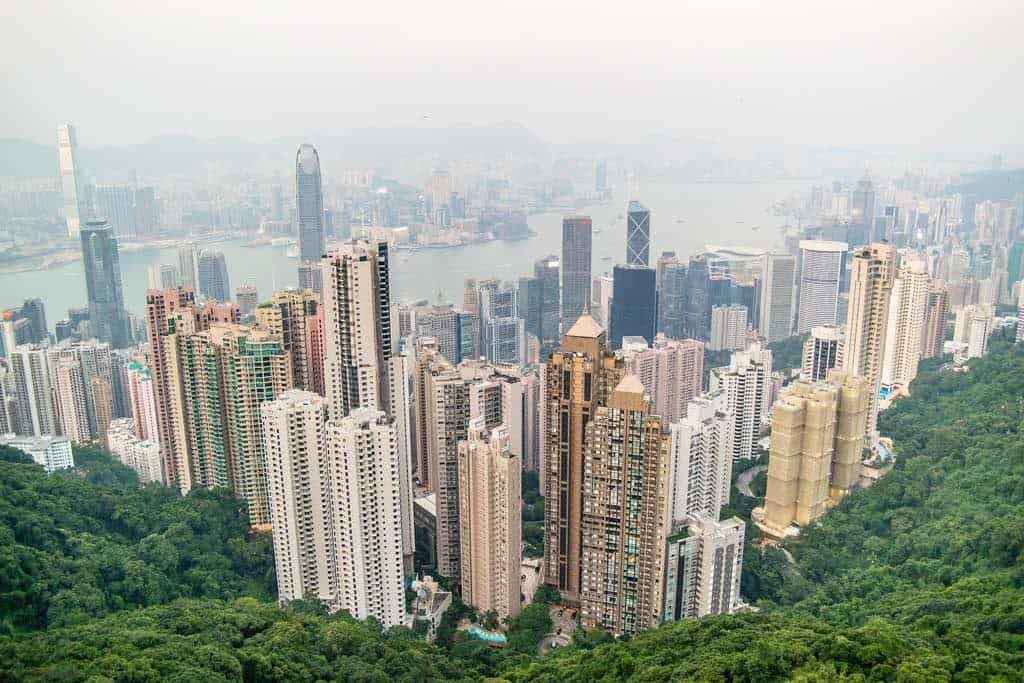
Here you will see traces of its colonial history in English names or in the presence of double-decker trams that seem to be looming everywhere.
The south of the island contrasts the busy city life with hiking trails, beaches, and a big amusement park.
In the north, right across the Victoria Harbor, is the Kowloon Peninsula.
The tip of the Kowloon, Tsim Sha Tsui, is filled with markets, shops and a variety of accommodation making it a hotspot for tourists.
North from Tsim Sha Tsui is the New Territories, where you can stroll through the older villages and relax at some of their secluded beaches.
Hong Kong also consists of the Outlying Islands, like Lantau and Lamma, that are a great addition to your itinerary.
This is especially true if you want to take a step back from city life, enjoy some downtime and good seafood.
If you don’t have a lot of time to visit Hong Kong don’t worry!
Thanks to its highly developed public transport, the city’s compact footprint and non-stop running transport – 3 days is the perfect Hong Kong itinerary !
If you decide to stay longer than that, you won’t run out of things to do!
This urban city will give you an energy boost that’s needed to keep up with its fast pace, the skyscrapers that dominate the skyline, beautiful neon lights and the maze-like architecture that can seem daunting to even the most experienced of travelers.
There is no shortage of delicious eateries or high-quality street food to be found either.
Next, to the amazing culinary scene, Hong Kong boasts of being home to some of the world’s most renowned architectural wonders.
It also features many culturally enriching and wonderfully curated museums.
The Hong Kong Island’s panorama dominated by towering skyscrapers can be seen from the Kowloon peninsula.
Make sure to read through our Hong Kong travel guide and be prepared to be amazed as Hong Kong is unlike any other city!
Hong Kong Travel Guide
Before you visit Hong Kong make sure you know the basics!
General Info
- Currency : Hong Kong Dollar (HKD)
- Language : Chinese, English
- Population : 7,482,500
- Area : 1,108 square kilometers
- Electricity Voltage : 220V, frequency is 50Hz
- Electricity Sockets : type G and D
5 Interesting Facts About Hong Kong
- The term ‘Fragrant Harbor’ is the meaning behind the name of Hong Kong.
- According to the locals, eating ‘Birthday Noodles’ on your birthday will lead you to have a long and blessed life.
- The globally famous food, dim sum, originated in Hong Kong!
- The Peak Circle Walk is considered to be one of the world’s most picturesque walks.
- AI operated metro, with a 99% on-time rate, has made Hong Kong’s metro systems one of the best and most efficient in the world!
Top 5 Places to Visit in Hong Kong
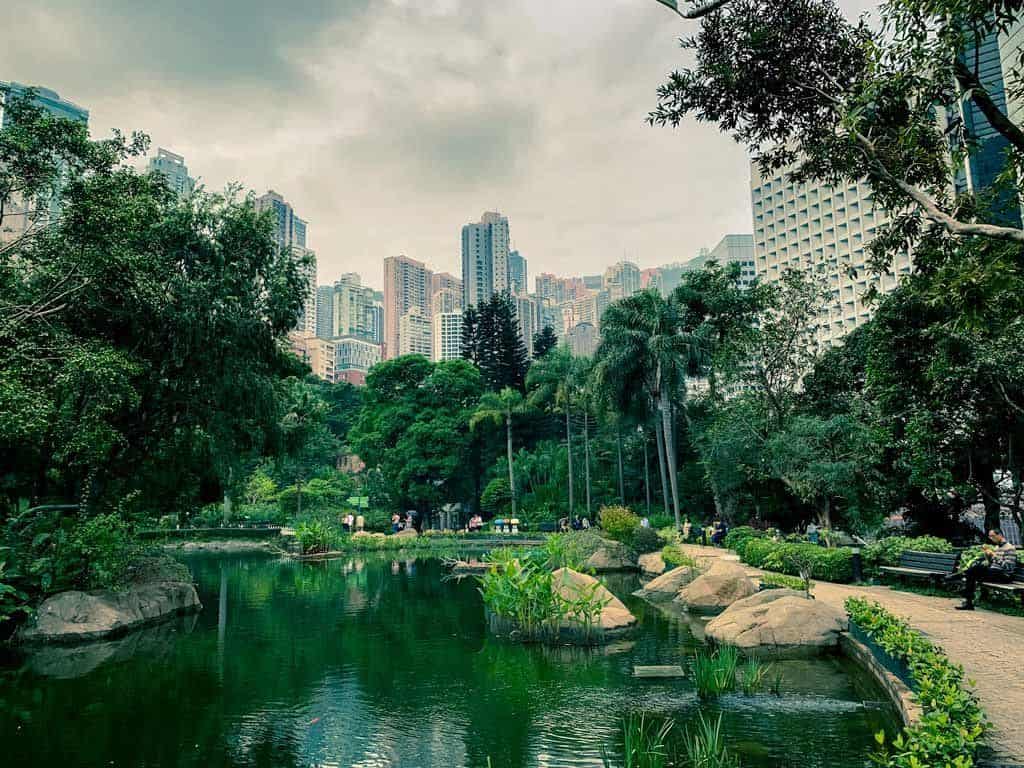
- Eat at the Chungking Mansions . While it was once known for being a sketchy area inhabited by backpackers, asylum seekers and ethnic minorities it has since evolved into a hub of African and South Asian food.
- Temple Street Night Market. When the sun disappears below the horizon, the Jordan area awakens. Roam the maze of stalls and hunt down the perfect trinkets and souvenirs and taste the most delicious and cheap, Chinese street food.
- Visit the Big Buddha, or as the locals refer to it Tian Tian Buddha. This statue is located above the Po Lin monastery and is 34 meters high. Although previously isolated by mountains, Po Lin monastery is now bringing in thousands of pilgrims and tourists from all over the world.
- Night in Lan Kwai Fong . This is a square of streets occupied almost exclusively by restaurants and bars, from locals’ favorite eateries to the craziest nightclubs. Spend at least one night exploring the nooks and corners of this lively area.
- Hong Kong Park is an oasis of green in the middle of Hong Kong Island’s urban setting. It was built in 1991 in Central and it’s a well-designed forest which blends in with the surrounding area. The park boasts of having an aviary with over eighty species of birds, lily ponds, fountains, a greenhouse, a restaurant, playgrounds, the Flagstaff House Museum of Tea Ware and the Hong Kong Visual Art Center.
READ MORE: Don’t miss our complete list of the top places to visit in Hong Kong !
Top 5 Travel Experiences in Hong Kong
- Ride the ding-ding, Hong Kong’s famous double-decker tram. For a little bit over $2 USD, you can enjoy the trip along the northern shore of Hong Kong’s island. It’s a beautiful route that includes many iconic landmarks of Hong Kong, Central’s skyscrapers, Victoria Park, Western Market and the remaining pawn shops of Wan Chai.
- Take the Central to Mid-Levels escalator . The world’s longest outdoor covered escalator system covers 800 meters in distance and reaches an elevation of over 135 meters. It has been opened in the early ’90s and since then has offered a link between the Central and Mid-Levels.
- Climb the Peak . This is the highest point of Hong Kong Island and offers an amazing view of the city, from Central’s skyscrapers to New Territories’ mountainous region. Take the Peak tram and enjoy the ride to the summit. If you have time you can even hike the 3.5 km Peak Circle Walk and get to the best vantage point of the metropolis of Hong Kong.
- Ride the S tar Ferry . Now considered a historical boat ride (it’s been operating for over a hundred years!), it’s also a cheap and fast way to get you to Central or Wan Chai while you also have the opportunity to bask in stunning views of Hong Kong and the Victoria Harbour.
- Eat at the Tim Ho Wan . This is an opportunity that can’t be missed. It’s not just a Michelin star awarded restaurant but also the world’s cheapest! It’s the place to go to try dim sum so queuing is definitely worth the long wait.
Best Time to Travel to Hong Kong
Hong Kong’s climate is characterized by mild winters and humid, hot summers.
The most preferable times for a visit tend to be in the fall (late September to early December) and spring (from March to May).
In fall the skies are typically sunny and clear with temperatures ranging from 21° to 26°C.
In spring humidity rises. Therefore fog and light rain aren’t uncommon. But the temperatures tend to remain in a pleasant range from 18° to 27°C.
The coldest months of the year are January and February. During these times the temperatures on average are 15°C and rarely fall below 10°C.
Summers can be unbearable with the temperatures on average being from 32° to 37°C and humidity being over 90%.
Summer is perhaps the worst time to visit Hong Kong. But if you do plan your trip then, make sure to stock up on sunblock, water and bring an umbrella as you’re also visiting during typhoon season.
Seasonal Festivals in Hong Kong
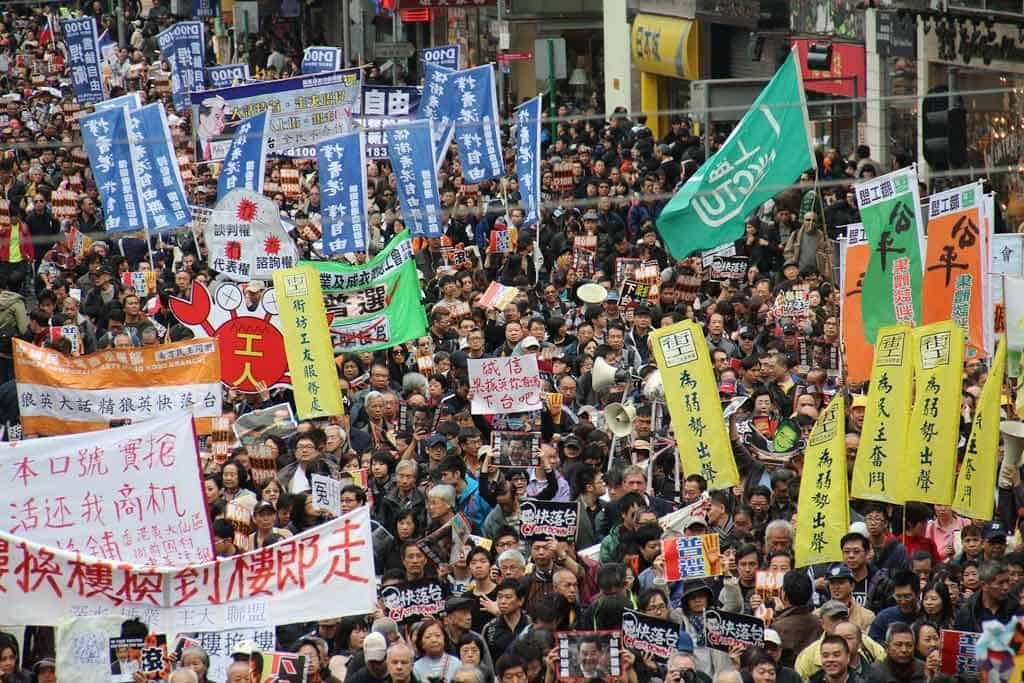
When it comes to holidays, Hong Kong celebrates seventeen public holidays a year.
Most of the holidays are Chinese and celebrated according to the lunar calendar (each year the dates change).
Even during holidays all the restaurants, shops and other businesses stay open (with the exception of Chinese New Year). This means that you don’t have to worry about these public holidays interfering with your planned activities.
Here are some of the most celebrated holidays in Hong Kong:
Chinese New Year is the biggest and most popular holiday in Hong Kong.
It’s celebrated for three days! During this time tradition dictates that you settle debts, pay homage to your ancestors, seek advice from a fortuneteller and visit friends and family.
The streets and buildings of Hong Kong are beautifully decorated with lights. And the city overflows with good-luck flowers such as chrysanthemums.
Unless you would like to experience Chinese New Year, this is arguably the worst time to visit Hong Kong due to the large volumes of people.
Expect road closures, booked accommodation, busy streets and crowded transportation systems.
Hong Kong Arts Festival is a month-long celebration of various performances. Whether you’re a fan of opera, theater, dance, jazz, art or ethnic music, there’s something for everyone.
Cheng Chau Bun Festival is an event that lasts over a period of seven days. It is held each year to pay homage to restless spirits.
Tuen Ng Festival , or the dragon boat races, show long and narrow painted boats that can fit around 20 to 22 oarsmen that beat to a drum beat.
Wine and Dine Festival has street food vendors set up shop alongside the promenade and is an opportunity to try wine and local dishes from around the globe.
Food in Hong Kong
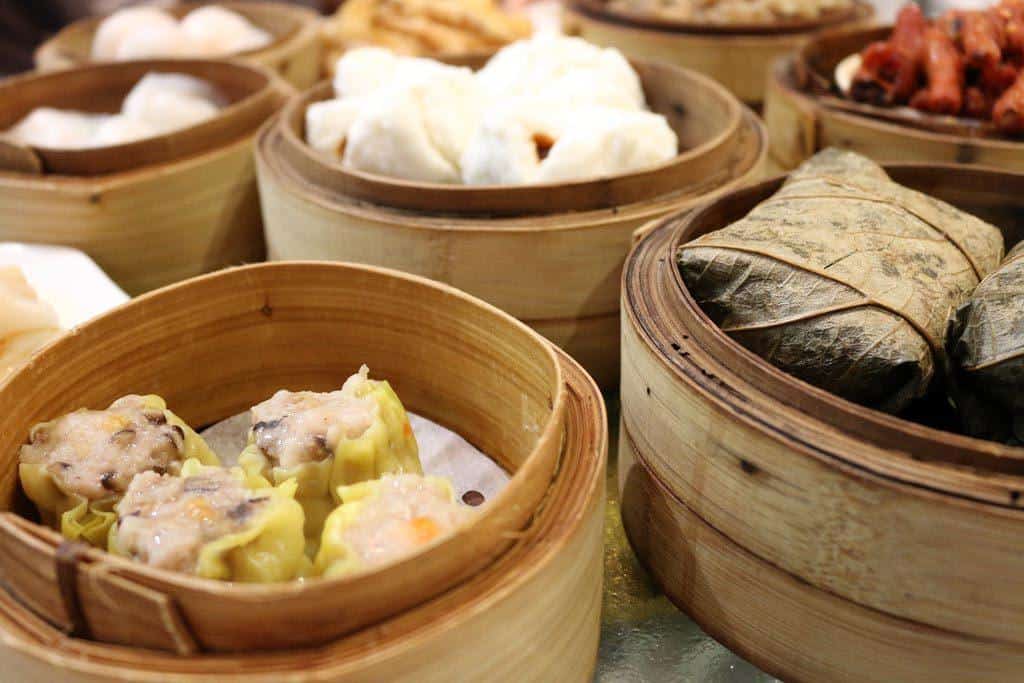
- French toast with a Hong Kong twist is the perfect comfort food. This is two pieces of bread with kaya jam or peanut butter that are dipped in egg batter and then fried in butter. It’s served with more butter and plenty of syrup.
- Ginger milk curd is a dessert that’s made by simmering sweetened milk and then adding freshly squeezed ginger juice. The ginger causes the milk to curdle and achieve a soft, thicker texture similar to pudding. It’s creamy with a little bit of a spicy kick.
- Sweet and sour pork is a signature dish of Hong Kong and it can be found everywhere from street vendors’ stalls to the menu of fine dining restaurants. It is by far a favorite comfort food of Hong Kong locals. The recipe of the Cantonese original “gu lo yuk” was made with preserved plums, vinegar, and hawthorn candy while now it’s made with coloring and ketchup.
- Cha siu baau is a steamed bun with pork meat filling. The softly steamed bun is filled with diced barbecued pork and rich brown barbecue sauce.
- Dim Sum is a classic Hong Kong treat. You can’t visit Hong Kong without eating dim sum at least once. It’s served in bamboo steamers and is meant to be shared. You must order the pork dumplings and prawn dumplings. Where better to try the dumplings then at Tim Ho Wan, the Michelin-awarded eatery known for its dim sum.
Travel Itineraries Suggestions for Hong Kong
Depending on how much time you have and want to spend when you visit Hong Kong, there are plenty of things to see and do.
We suggest a great 3-Day Hong Kong itinerary . But if you have more time, check out this weeklong itinerary.
Day 1-3: Kowloon
In the evening walk down the Nathan Road in Tsim Sha Tsui in order to reach the Clock Tower .
Once you’re at the Clock Tower, take in the beautiful, neon skyline of Hong Kong with a fleet of ferries passing in front of it.
The markets in Mong Kok, the Temple Street Night Market near Jordan Road, are great stops during your nighttime Kowloon explorations.
There’s a lot to see during the day too.
Plan to visit the Innovation Tower, Nan Lian Garden, Kowloon Park, Chi Lin Nunnery.
Or if you wish to be more active, go on a long hike to the Lion Rock summit or on a short hike up to the Ten Thousand Buddhas Monastery.
The really interesting museums to visit are the Hong Kong Science Museum and the Hong Kong Museum of History.
Try booking a Hong Kong sightseeing tour on your first day if you prefer to have someone else figure out the logistics.
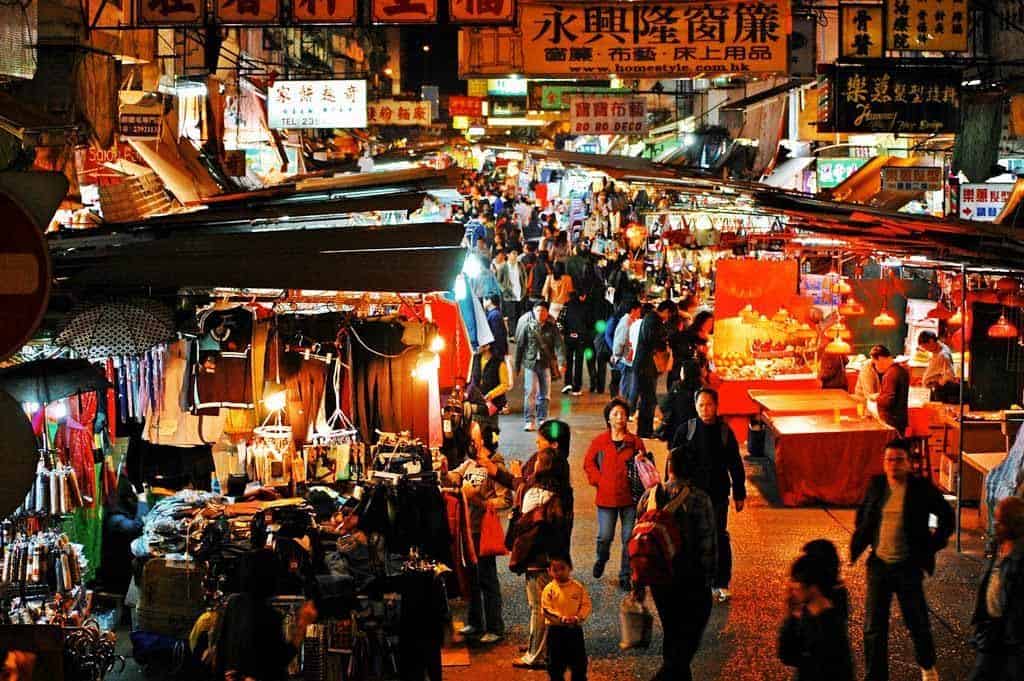
Day 4-6: Hong Kong Island
On the next part of your trip go on the iconic Star Ferry ride to Central Pier, on Hong Kong Island.
The affordable journey offers spectacular views of both sides of the island and its impressive skyscrapers.
Once you’re done roaming around the Botanic Gardens, the Zoo and Aviary get the Hong Kong MTR to Tai Kao station.
There you will come across one of the iconic landmarks, the Yick Fat Building.
Have a bite at one of Hong Kong’s fantastic restaurants and then climb the Peak Tower.
After that head down to the Hollywood Road area to get a drink at the bars.
READ MORE: Check out our blog post about the time we went hiking and camping in Hong Kong for free!
Day 7: Lantau and the Big Buddha
Nearby the place where you boarded the Star Ferry to head to Kowloon is where you will get the ferry to Mui Wo on Lantau Island.
After your short ferry ride, you will get a bus to Ngong Ping which leads you to the Po Lin Monastery.
The Big Buddha at Po Lin Monastery is everything but calm as thousands of tourists walk up its steps every day.
The monastery itself is nice to visit and you can even go on the Wisdom Path.
Near the monastery, there’s a cute fishing village, Tai O.
It’s a perfect place to grab dinner at one of the local seafood restaurants and enjoy the sunset before getting to the ferry back to busy Hong Kong.
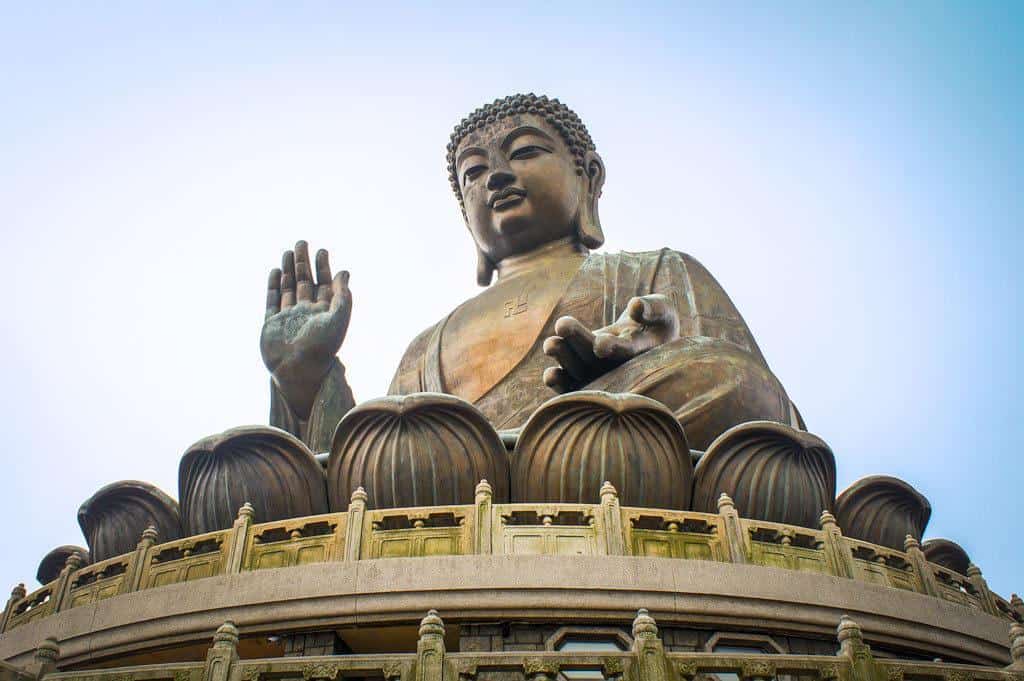
Day 8: Hong Kong Disneyland
Hong Kong Disneyland attracts crowds from all over the world!
But make sure to go early and during one of the weekdays to try and avoid big crowds.
It’s the smallest of all Disneylands but it’s still worth a visit. With its 7 themed lands, Mystic Point, Tomorrowland and Fantasyland you’ll have one enjoyable day!
As with other Disneylands, you can stay in the amusement park at their luxurious Disneyland Hotel if you would like.
A trip to Disneyland is perhaps the most fun day trip from Hong Kong !
Visa Requirements for Hong Kong
Most people can travel to Hong Kong without requiring a visa. Stays are permitted for anywhere between 7 to 180 days depending on your nationality.
To see whether you require a visa for entry as well as the length of stay you are permitted, be sure to check out this resource .
Note that if you wish to travel to the Chinese mainland from Hong Kong you will be required to have a Chinese visa in advance of your trip.
How to Get to Hong Kong
Hong Kong is incredibly well connected.
There are many cruise lines and over a hundred direct flights that link Hong Kong with the rest of the world.

The best and easiest way to get into Hong Kong is by plane.
The Hong Kong International Airport is a major international hub.
It’s the largest airport in Hong Kong and it operates 160 destinations with 95 airlines.
Direct flights can be long (from Chicago: 16 hrs, London: 12 hrs and Sydney: 9hrs), so consider paying for more legroom or a class upgrade.
If you wish to fly to Hong Kong from Europe, the US or Canada, you can get a direct flight from many of the major cities.
Flying from Australia or New Zealand to Hong Kong is even more affordable and direct.
Most connections to Europe, the USA, Canada and Australia are operated by Hong Kong’s own airline, Cathay Pacific.
The connection to cities all around Asia is served by Hong Kong Airlines, Hong Kong Express and DragonAir.
The Hong Kong airport is located north of Lantau Island, around 32km from the city centre.
From the airport to the city you can take the Airport Express train that will take you to Hong Kong Island in just 24 minutes.
The fare for the Airport Express train is around USD$12.
The cheaper but also much slower option is to get on a city bus (operated by either Citybus or Long Win).
The tickets can be bought at the ticket counters at the airport in the arrivals hall.
The easiest, but more expensive option is to hail a cab.
It would take around thirty to fifty minutes (depending on what part of the city you’re travelling to) and the price would range from around USD$35 – $50.
If you’re travelling to Hong Kong from China, you can do so via the famous high-speed trains or the intercity trains.
This well-developed high-speed rail connects Hong Kong to 58 destinations in China.
There is a 26 km stretch that goes from Kowloon and connects travellers to the high-speed rail network.
This high-speed rail connection is called Guangzhou – Shenzhen – Hong Kong.
The slower, but regular and reliable, intercity train services connect Hong Kong to Beijing, Shanghai and Guangdong.
Hong Kong is famous for its maritime location and has the status of being one of the most valuable ports Asia Pacific region.
As such there are numerous opportunities to travel to Hong Kong via cruise ship or ferry.
The two most important cruise terminals are the Kai Tak Cruise Terminal and Ocean Terminal.
Numerous ports in mainland China are linked to Hong Kong via high-speed ferry services.
These ferries run between Kowloon, Hong Kong Island and Hong Kong International Airport.
Travelling from China to Hong Kong is easy with bus services operating the five land crossings:
- Lok Ma Chau
- Sha Tau Kok
- Hong Kong–Zhuai–Macao Bridge
- Shenzhen Bay Port
Travel via a shuttle bus or a coach bus when taking the Hong Kong–Zhuhai–Macao Bridge.
The coach bus operates between the urban parts of Hong Kong, Zhuhai and Macao in different areas of Hong Kong.
Hong Kong Travel Tips
If you are planning to travel to Hong Kong you know it can be exciting and intimidating at the same time.
There is so much to see and do. The city is crowded. And Hong Kong is generally an expensive place to visit.
Of course, nobody plans to be sick or injured while travelling. But understanding the medical system and safety risks is an important part of the planning process!
Check out our tips below to help you understand what to expect in your budget as well as how to get around the city!
READ MORE: Check out the list of our best travel tips from over a decade on the road.
Budget for Travelling Hong Kong
Hong Kong is very expensive by anyone’s standards. This is especially true when you take into the costs of accommodation.
Backpacking Budget from USD$50 per person/day
The prices of one bed in an 8 person mixed dormitory start from USD$30 per night.
But staying in a hostel for that price is a very affordable option by Hong Kong standards.
If it’s YHA hostel then you can usually expect to have free WiFi, shared bathroom and air-conditioning.
For food, the cheapest you can come by is a microwave meal at corner stores such as 7-Eleven and Circle K. But even these are usually around USD$10 to $15.
At 7-Eleven they have microwaves onsite and they allow you to prepare your meal.
But you can save even more by eating street food. These meals will cost around USD$6.
The one day transport Octopus card (initial deposit is $50 HKD) + $100 HKD (stored value), would cost you around USD$20.
We recommend checking out this list of the best hostels in Hong Kong on Hostelworld to help you choose where to stay.
Midrange Budget from USD$120 per person/day
Staying in a single room at a budget three-star hotel will cost around USD$60 per night.
Eating at midrange local eateries would cost around USD$25 to $40 per meal.
There are a lot of affordable alternatives like Dim Sum cafes or Chinese Soup kitchens. But prices for food in Hong Kong are generally high.
In the evening if you wanted to go to one of the bars for drinks and live music, you could easily expect to spend around USD$60 per person for a few drinks and snacks.
Luxury Budget from USD$350 per person/day
With a little more to spend, you can expect more luxury and options.
A double bedroom in a luxury four-star or a boutique hotel costs around USD$200 per night.
Dinner at some of the finest establishments in Hong Kong would cost you around USD$100 per person.
For entertainment, you could go and see a Cantonese opera (tickets USD$25) or hire a private tour guide for a full day for $250 USD.
NOMADasaurus Tip: Use Agoda to book all your accommodation in Hong Kong, as they have the cheapest prices. You can also use the coupon code AGODANMD10 to get a further 10% off your hotels!
Transport in Hong Kong
There are a lot of places to see and things to do in Hong Kong. Unless you plan to take a taxi everywhere, you will definitively spend some time on public transport.
Getting an Octopus card is essential as it’s usable on the Mass Transit Railway (MTR), ferries, light rail and buses.
The card can be bought at any MTR station and easily topped as well in Circle K and 7-Eleven convenience stores.
You can use the octopus cards not just for transport but also as a means of payment for fast food restaurants, supermarkets and coffee chains.
The MTR is a rail system that consists of underground, overland and light rail services used by four million people daily.
The mass transit rail is clean (no drinking and eating onboard allowed), safe, fast, has air-conditioning and full cellphone coverage and is the easiest form of public transport.
It has nine lines operating through Hong Kong Island, the New Territories and Kowloon, the Airport Express, intercity trains (to Shanghai, Beijing and Guangdong) and light rail in Northwestern New Territories.
The most important line is the red line (Tsuen Wan Line) because it connects Central to Kowloon via tunnel and continues downwards to Tsuen Wan (in New Territories) via Nathan Road.
The blue line goes along the north coast of Hong Kong Island.
The orange line (Tung Chung Line) is the fastest way to Lantau but is also a cheap way to get to the airport (take the S1 shuttle bus from the MTR station ‘Tung Chung’).
All announcements are in Mandarin, Cantonese and English and the signs are also in both Chinese and English.
The staff usually speaks some English to help the occasional lost tourist.
The suburban rail is linked to two international borders with China on the East rail line: Lo Wu and Lok Ma Chau.
The ticket price depends on the distance covered.
You cannot pay for tickets or passes with your credit card (excluding the Airport Express).
The MTR ticket machines usually don’t accept bills over HKD$10.
A majority of the stops have ATMs and they have been increasing the number of toilets as well.
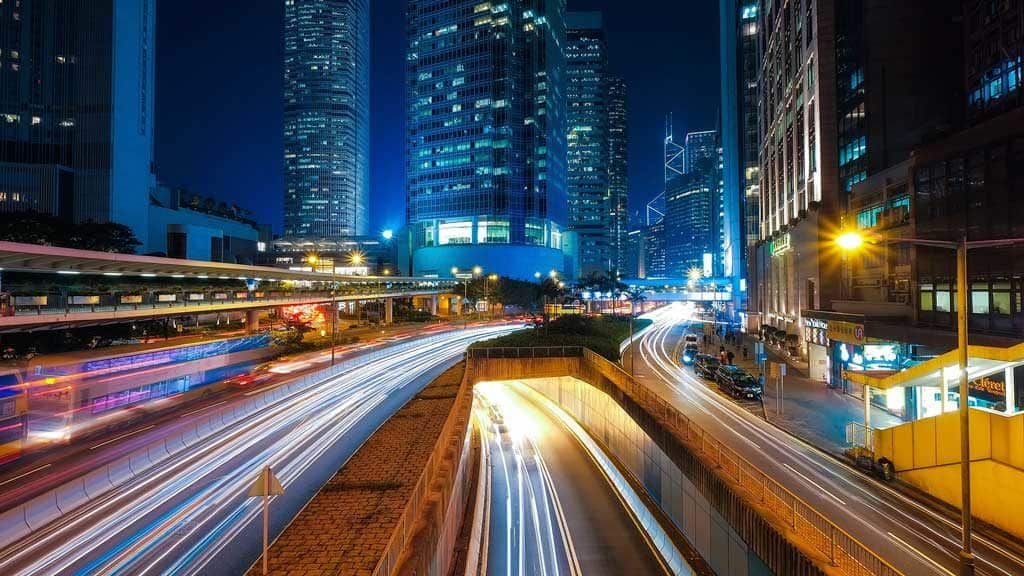
There are nine overland and underground train lines on which there are around ninety stations.
Trains run from 6 AM to between midnight and 1 M in intervals of 2 – 14 minutes.
The rush hour is 7:30 AM to 9:30 AM and 5 PM to 7 PM on weekdays.
The tickets are very cheap compared to other cities around the world (USD$0.65 to $4).
If you get caught eating, drinking or smoking on the train or at the station you can get fined for around USD$650!
The ‘ding dings’ (in Cantonese), or as we call them ‘city trams’ (double-deckers), are used all along the north coast of Hong Kong Island.
They have not only been an affordable transportation option but also a part of their history, as they’ve been operating for over a century.
When riding a tram expect a bumpy, slow ride with no air-conditioning on board.
The trams run from 6 AM to midnight.
Board at the Kennedy Town Terminus and make sure to get a good seat on the upper deck.
The tram will take you eastward and you’ll be able to get an amazing insight into the Hong Kong Island.
Pay attention to all aspects of city life, from its hectic streets, calm residential areas to Central’s sharp business and financial districts.
This tram has been opened back in 1888 and is a very steep 1.7 km route that takes you from Central up to Victoria Peak.
The price like the route taken is quite steep, USD$45 for a return ticket.
But it is worth the money and you can also pay extra to access the observation deck!
The Peak Tram is especially busy during evening hours as many people want to see Hong Kong’s magical skyline.
There are cheaper but slower options to reach the peak. You can get on a green minibus or the #15 double-decker bus.
They also offer views of both sides of Hong Kong Island.
By Light Rail
The light rail system is a more improved version of Hong Kong’s trams.
It differs from the trams in being faster, air-conditioned and modernized.
The light rail runs in Northwestern New Territories and operates from 5:30 AM to 1 AM.
Depending on the day of the week, time of day and line, they operate in intervals of 4 to 12 minutes.
This fast tram connects Tin Shui Wai, Tuen Mun and Yuen Long.
In Hong Kong, there are three types of buses that are operated by numerous companies.
These include the double-decker buses and two varieties of public light buses (red and green minibusses).
Busses are easy to use with the Octopus card. If you wish to travel to Lantau and on the south side of the island, they’re your only option.
Double Decker Buses
These buses operate all over the country, have frequent stops and ticket prices depend on the distance covered.
You can find all the information (ticket prices, where you board, estimated arrival, etc.) on the websites of bus companies or you can also download a mobile app.
Buses only stop by request (unless you’re at the terminus).
To stop an approaching bus, flag them down as if it was a taxi and board at the front.
Public Light Buses
The public light buses are van-sized and can transport up to 16 passengers.
There are two kinds: red minibusses (also referred to as ‘maxi cabs’) and green minibusses.
For tourists, it’s not easy to ride a minibus as you have to call out the name of the stop in Cantonese so your driver would know when to stop.
Green minibusses accept Octopus card (if you pay in cash they can’t give you change).
They have designated stops and have fixed fares.
While red minibusses pick up and drop off passengers wherever it’s requested and prices and destinations are displayed in Chinese only.
Some red buses accept Octopus cards (but if you pay in cash you will get change back).
Either way, expect the minibus drivers to drive faster than you’re accustomed to, especially in the evening hours.
The intervals in which the bus services run vary depending on the area.
Logically, if you’re in the city centre you can expect buses to run in intervals of under 10 minutes and in the more rural areas between 15 to 30 minutes.
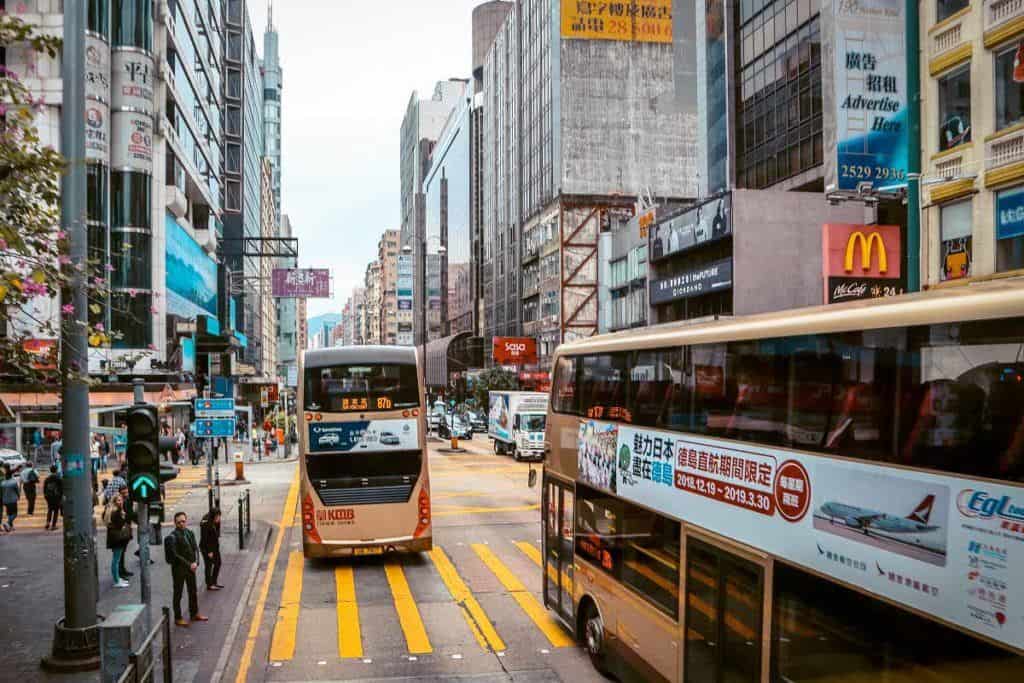
There is an impressive fleet of ferries that operates between the islands of Hong Kong.
The most popular ferry is the Star Ferry which operates routes of Tsim Sha Tsui to Central and Wanchai.
It runs from 7 AM to 11 PM, and the ride across the harbour is only eleven minutes. But it doesn’t fail to impress with its views of the island!
The Star Ferry has carried the locals and travellers for over a hundred years and has, rightfully so, earned its title of being Hong Kong’s icon.
Taking a ride on this ferry is a must-do on every Hong Kong itinerary.
There are other ferry routes that depart from various ports and take you to Lantau, Lamma and other islands.
There are two types of ferries, fast and slow ones.
The fast ones charge double the price but travel time is significantly diminished.
Fast ferries don’t operate on all routes. So for some destinations, there aren’t both types of service.
If you’re going with a cheaper ferry, be prepared that it might not have to air-condition.
Ticket prices also increase up to 50% during public holidays and on Sundays.
Taxis are regulated and controlled strictly by the government.
Even though that’s the case, there will be occasional taxi drivers that will try to bargain with you. Just know that this is illegal.
Taxis are very affordable compared to larger cities worldwide.
There are three types of taxi: green, blue and red.
All of them serve Hong Kong Disneyland and the airport.
The red taxis (urban taxis) are the most expensive ones as they operate within Hong Kong (excluding south of Lantau).
The green taxis operate within the limits of the airport, Hong Kong Disneyland and the New Territories.
The blue taxis (Lantau) have the lowest tare as they only travel to the airport, Hong Kong Disneyland and Lantau Island.
Tipping is not obligatory but drivers like to round up the fare.
You get charged for baggage that goes in the trunk (USD$5 per bag) and any toll charges get added to your bill.
The best way to avoid being scammed by taxi drivers (if you speak no Chinese) is to use a mobile app to book your ride.
The advantages are clear, card payment, no need to call anyone, fair price and your ride is typically there within ten minutes.
Accommodation in Hong Kong
Hong Kong is among the most popular destinations in the world.
Thus booking in advance is a must – whether you’re staying at a luxury hotel or booking a bed in a dorm room.
You can stay at some of the best luxury hotels in the world, where a night could set you back several thousand dollars.
Or you can opt for more budget-friendly options such as guesthouses and hostels.
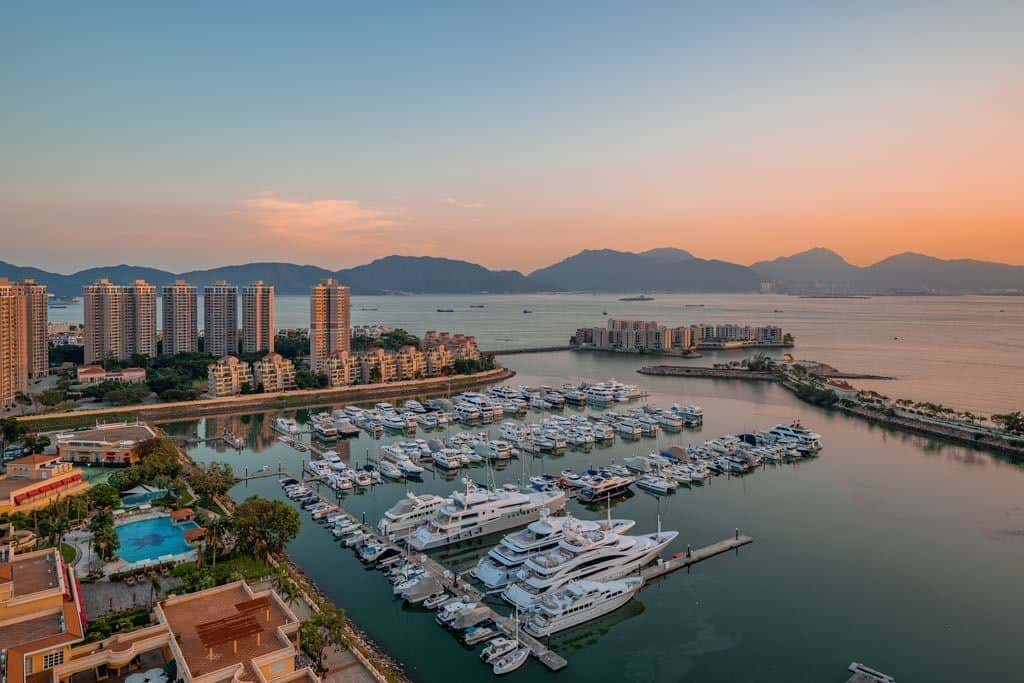
One of the perks of travelling to Hong Kong is the opportunity (if you can afford it) to stay at one of the famous city hotels.
Some of the hotels include historic and globally renowned venues, local brands and major international chains.
The majority of hotels are concentrated in Kowloon and on Hong Kong Island.
Many of them offer a room with a stunning view of the harbour.
More and more resort-type hotels are popping up in the Outlying Islands and in the New Territories.
Hong Kong’s five-star luxury hotels are known for the amazing views, excellent service, luxurious facilities and it’s where you will find the best restaurants.
You can choose from staying at some of their iconic landmarks (i.e., the Peninsula) to a flagship hotel from one of the major international hotel chains.
Chungking Mansions
Don’t let the ‘mansions’ part of the name fool you – if you are looking for the absolute cheapest hotel rooms in the centre of Hong Kong, this is the place to go.
This dilapidated building is home to a whole range of budget mini-hotels, with rooms usually around USD$40 per night.
The rooms are tiny though, barely big enough for a bed and small desk, and the showers are often directly over the toilet.
The building itself can feel slightly sketchy, and you’ll get all kinds of ‘interesting’ characters hanging out here at night.
But still, if you need somewhere cheap to stay, this is the place.
There’s also a whole range of cheap eateries on the bottom floor too, which can be surprisingly tasty.
Guesthouses
The guesthouses are typically comfortable, clean, have air-conditioning, individual bathrooms and are midrange budget accommodation.
To always be on the safe side, pay attention when booking that you’re going to be staying at a licensed guesthouse!
Hostels can be the most important type of accommodation for the majority of backpackers.
Hostels in Hong Kong tend to be clean and comfortable.
Most of them are in the New Territories near picturesque areas such as marine parks and hiking trails.
Because of Hong Kong’s amazing transportation system, getting into the city centre is never an issue!
There are youth hostels that are registered with the Hong Kong Youth Hostels Association and are more similar to a 3-star hotel than a hostel!
Safety in Hong Kong
Hong Kong is one of the safest destinations in the world.
The police are efficient, polite and have a strong presence throughout the city.
The crime rates are very low – especially rates of violent crimes.
But do know that nowhere in the world is 100% safe.
When travelling through Hong Kong still use common sense to avoid becoming an easy mark.
There are still some common scams that are known to occur:
- Foreign currency exchange : Never exchange foreign money into currency as there is a good chance you will end up with fake money. Only exchange money in banks or in currency exchange offices.
- Fake goods : People on the streets will approach you and try to pass fake gold and fake jade bracelets as the real valuable goods. Again if anything is offered to you off the street don’t buy it. You will get scammed. If you wish to buy any valuable goods, only buy from reputable stores.
Our safety tips for travelling in Hong Kong are:
- Pay attention to when typhoons can be expected. If there is one, know what your next steps should be to ensure your safety.
- Do research on what are considered reputable taxi companies.
- Before you get into a taxi, text the registration to your loved ones or even call the reception desk at your hotel. Always sit in the back of the car.
- Always let your loved ones know your last known address (the place you’re staying at).
- Don’t go into what are known to be dodgy areas, especially at night!
- Keep your travel documents in a hotel’s safe and only have photocopies of your documents on you at all times.
- If you go drinking in the evening by yourself, be wary if anyone tries to join you and get all of your own drinks for yourself!
- Don’t carry all your cash with you. Leave some in the safe back in your hotel room.
- Wear a money belt!
- Save all the emergency numbers to your phone, which includes also hotel and taxi numbers (keep all that information written down in your notepad, in case your phone runs out of battery).
Medical System in Hong Kong
The standard of medical healthcare in Hong Kong is excellent but also very expensive.
The healthcare system is divided into private and public and there’s no overlap between the two.
There are many dentists, general physicians and specialists who speak English and can be found in the yellow pages, private hospital or your consulate.
If you don’t have money for a private clinic, go to one of the public hospital’s emergency room in your area and be prepared to wait.
If you are experiencing a medical emergency, call #999 and the ambulance will take you to a public hospital where you’ll be requested to pay a high fee.
If you can’t pay, you will still be treated but you’ll be billed at a later date.
Medical facilities on Hong Kong Island:
- Queen Mary Hospital (public and with emergency services)
- Ruttonjee Hospital (public)
Medical facilities in Kowloon:
- Hong Kong Baptist Hospital (private)
- Princess Margaret Hospital (public and with emergency services)
- Queen Elizabeth Hospital (public)
Medical facilities in New Territories:
- Prince of Wales Hospital (public)
There are pharmacies all over the city and there is almost always a certified pharmacist working.
A lot of medication can be bought without a prescription. But make sure to check that it’s a well-known brand and that it’s still in date.
If you make sure to collect all of your documentation, once you get to your home country, many of the private insurance companies will reimburse you.
When travelling it’s always of utmost importance to take out a comprehensive travelling insurance policy so you would be internationally covered to receive inpatient medical and some surgical treatments if needed.
Travel Insurance
While not a requirement to travel to Hong Kong, having travel insurance is one thing that we always recommend no matter where you are going.
It goes beyond just covering you for medical care. If your stuff gets stolen, flights are cancelled, you have to return home for an emergency, luggage is delayed, or any one of a hundred other things that can go wrong when you travel, insurance will have you covered.
Have a read of our ‘ Do I Need Travel Insurance ‘ article first before booking any trip abroad.
We recommend World Nomads. Use this form to get a free, no-obligation quote.
Packing List for Hong Kong
- 2x Long pants
- 5x T-shirts
- 3x Long-sleeved shirts
- 1x Sweatpants
- Undergarments
- 1x Rain jacket
- 1x Flip-flops
- 1x Comfortable sneakers
- 1x Dress shoes
Miscellaneous Items
- Power adapter
- Hand sanitizer
- Reusable water bottle
- Insect repellent
- Guide book and a map
Other Travel Tips for Hong Kong
- The “MTR” is referred to as the underground metro, while “Subway” usually refers to underground walkways.
- Download the taxi app , as it’s much easier to navigate the city. You don’t need to speak Chinese, you get a fair price and your car is picking you up within minutes.
- Carry an umbrella, especially in spring and summer. The weather can be very unpredictable! This is especially true if you’re visiting during the Typhoon season!
- Bring a Chinese phrasebook with you . A majority of residents in Hong Kong speak some English. But it’s always handy to have on you.
- Tipping is not expected, but it’s appreciated! Taxi drivers usually round up the price. In some restaurants, they automatically add 10% (but that’s always specified in the menu).
- Free museum entry every Wednesday . One way to save some money is by pushing your museum date to Wednesday. Some of the participants that offer free entry to all are the Hong Kong Museum of Art, Hong Kong Museum of History, Hong Kong Heritage Museum, Hong Kong Racing Museum, Dr. Sun Yat-sen Museum and the Hong Kong Space Museum.
- Avoid the MTR during peak hours, even thou the public transport is so perfectly organized and highly efficient, the crowds during peak hours can be hellish. The rush hours are from 7 AM – 9:30 AM and from 5 PM – 7 PM during the week. If possible avoid the major connecting stations (like Admiralty).
Read More of our Hong Kong Travel Blog Posts
The perfect itinerary for 3 days in hong kong (2024), 38 best places to visit in hong kong (2024 guide), hiking, beaches and free camping in hong kong.
- Sustainability
- Latest News
- News Reports
- Documentaries & Shows
- TV Schedule
- CNA938 Live
- Radio Schedule
- Singapore Parliament
- Mental Health
- Interactives
- Entertainment
- Style & Beauty
- Experiences
- Remarkable Living
- Send us a news tip
- Events & Partnerships
- Business Blueprint
- Health Matters
- The Asian Traveller
Trending Topics
Follow our news, recent searches, visiting hong kong soon here's what you need to know about the revised entry rules, advertisement.
While arrivals no longer face restrictions on moving around - provided they test negative for COVID-19 - there are still several regulations in force.
Passengers arriving at Hong Kong International Airport on Dec 8, 2022. (Photo: AFP/Isaac Lawrence)

Ashley Tham
SINGAPORE: From Wednesday (Dec 14), international passengers arriving in Hong Kong will no longer face COVID-19 movement controls following the axing of a mandatory mobile application.
Travellers were previously issued an "amber code", which meant they could not visit venues like restaurants or bars for their first three days in Hong Kong.
Health Secretary Lo Chung-mau said on Tuesday that "international arrivals don't have any restrictions" after the easing of COVID-19 rules.
"So the same day they step off the aircraft, they are free to enter any premises," he added.
While arrivals no longer face restrictions on moving around - provided they test negative for COVID-19 - there are still several regulations in force.
Inbound travellers to Hong Kong have to be fully vaccinated and undergo a pre-departure Rapid Antigen Test (RAT) within 24 hours before the scheduled time of departure.
After submitting their negative test result and vaccination records via a health and quarantine declaration form, a green health declaration QR code will be generated for visitors for presentation at their airline check-in counter.
Upon arrival, they must take a polymerase chain reaction (PCR) test at the Hong Kong International Airport and on their third day in the city.
The PCR tests can be conducted at community testing centres, mobile specimen collection stations or any recognised local medical testing institution.
Travellers are also required to undertake RAT testing for the first five days of their visit and report the results through Hong Kong's electronic COVID-19 Medical Surveillance System.

Snap Insight: Hong Kong lifts all travel curbs – could this be the test balloon for China’s reopening?

Here's everything new you'll want to experience when you're in Hong Kong
Masks are also still compulsory both indoors and outdoors, unless engaging in exercise or in country parks, while group gatherings are currently capped at 12 people. However, people are able to go to nightclubs and banquets.
For those intending to visit eateries or drinking establishments, Mr Lo said visitors will "need to show a photograph or paper record of their COVID-19 vaccines at some venues which require it".
Hong Kong has followed closely in China's footsteps in enforcing a zero-COVID policy but began scaling down the tight regulations in the last few months.
COVID-19 rules that travellers to Hong Kong must continue to follow:
Inbound travellers to Hong Kong have to be fully vaccinated and undergo a pre-departure RAT test within 24 hours before the scheduled time of departure.
Two PCR tests - one at the airport and one on the third day of their visit.
RAT testing for the first five days of their visit, with results to be submitted online.
Mask-wearing remains largely compulsory both indoors and outdoors.
Group gatherings of more than 12 people in public places are not allowed.
Sign up for our newsletters
Get our pick of top stories and thought-provoking articles in your inbox
Get the CNA app
Stay updated with notifications for breaking news and our best stories
Get WhatsApp alerts
Join our channel for the top reads for the day on your preferred chat app
Related Topics
Also worth reading, this browser is no longer supported.
We know it's a hassle to switch browsers but we want your experience with CNA to be fast, secure and the best it can possibly be.
To continue, upgrade to a supported browser or, for the finest experience, download the mobile app.
Upgraded but still having issues? Contact us

Travelling To Hong Kong Checklist: What Are The Rules To Enter The City?
Hong Kong began relaxing its strict anti-epidemic restrictions at the end of 2022. It most recently began allowing unvaccinated non-residents to enter the city and not enforcing home or hospital isolation for Covid-19 patients . Mandatory quarantine on arrival was also scrapped in September last year.
The only requirement still remaining to enter Hong Kong is the COVID-19 testing .
Except for arrivals from mainland China and Macau, all travellers above age three must take a RAT test (within 24 hours of flying) or a PCR test (within 48 hours of flying). They must keep a photo of the negative COVID-19 test report for 90 days.
Beginning on March 1 , Hong Kong ended its indoor and outdoor mask mandate after almost 1000 days of mandatory mask-wearing. However, anyone entering a government-run hospital or healthcare facility must still wear a mask.
Header image credits: wonry via Pixabay

- X (Twitter)
From the Middle East to the Far East and a couple of places in between, Anjali has lived in no fewer than seven cities in Asia, and has travelled extensively in the region. She worked as a lifestyle journalist in India before coming to Hong Kong, where her favourite thing to do is island-hopping with her daughter. You can check out her musings on motherhood, courtesy her Instagram profile .
Comments are closed.
Type above and press Enter to search. Press Esc to cancel.
- Search Please fill out this field.
- Manage Your Subscription
- Give a Gift Subscription
- Newsletters
- Sweepstakes
I Traveled to Hong Kong As Soon As It Reopened to American Travelers, Here's What It Was Like
What you need to know about getting to Hong Kong right now, and what to do once you're on the ground.
:max_bytes(150000):strip_icc():format(webp)/AllPhotos-1of116-ChrisDong-679580407cc64e35a239dd17a4fb804f.jpeg)
DuKai photographer/Getty Images
After nearly three years, Hong Kong’s entry restrictions have been fully lifted, testing requirements are no more, and hotels, bars, and restaurants have their doors wide open. United Airlines also announced plans to restart flights to Hong Kong in March, and flag carrier Cathay Pacific will increase capacity throughout 2023, reaching 70 percent of pre-pandemic passenger numbers by end of year.
While change is inevitable after years of isolation, travelers to this fiercely metropolitan city will find so much to love. Now is the time to visit — or revisit — this cosmopolitan megacity.
What It’s Like in Hong Kong Right Now — and What to Know About Entry and Exit
The path to Hong Kong's reopening has been far from easy. Since 2019, Hong Kongers have faced seemingly insurmountable challenges. First, the government outright suppressed a pro-democracy movement, banning political demonstration and arresting those who defied. Then, the outbreak of the pandemic, along with subsequent extreme restrictions, forced the city’s residents into lockdown for months on end — and kept travelers at bay.
It’s no doubt the one-two punch of political turmoil and a pandemic knocked Hong Kong down temporarily. But for the first time in years, Hong Kongers — and those visiting — have good reason to get back up swinging (and exploring) again. That’s because there’s a resurgent cultural and museum scene, new or refurbished landmark luxury hotels, and at the moment, fewer crowds to get in the way of it all.
I arrived in early January, nostalgic and eager, to a quiet Hong Kong International Airport to discover that, at least on the surface, not much has changed since my last visit in mid-2019. There are no tests to take, no paperwork to fill out, and no apps to download. While tourists have yet to return in droves, the metropolis still has a steady pulse. I felt that energy as I criss-crossed Hong Kong Island from Kennedy Town to Causeway Bay on a “ding-ding tram” and sailed through Victoria Harbor on my favorite mode of transportation, the long-beloved Star Ferry, between Hong Kong Island and Kowloon. In many ways, it feels like the ideal situation; the day-to-day fast-paced life of Hong Kong remains without the out-of-towners adding overwhelming volume to the city.
The city’s vibrant streetscape — with throngs of pedestrians sharing the same thoroughfare as double decker buses and signature red taxis — hasn’t changed too much either. Hong Kong is a transportation lover’s dream where multi-modal transit and pedestrians coexist in organized chaos. Des Voeux Road at rush hour is still filled with the local after-work office crowd on their way to happy hour and dinner. After all, Hong Kongers, by the very nature of their small apartments, love to eat and drink out. It’s not all the same, though. While some of the city’s most popular pre-pandemic markets have thankfully survived — like the Temple Street Night Market in Jordan or Flower Market in Mong Kok — they don’t have the bustling energy and crowds that they used to, at least not yet.
The New Places to Stay in Hong Kong
Courtesy of Mandarin Oriental
Several high-end luxury hotels have either come on the scene, or thoroughly refreshed their offerings since the city’s pandemic-induced lockdown. Both Rosewood Hong Kong and the St. Regis Hong Kong debuted in 2019, less than a year before travel to the region came to a halt. Last May, the Fullerton Ocean Park Hong Kong opened with 425 rooms and an inviting infinity pool overlooking the South China Sea. Mandarin Oriental, Hong Kong , celebrating its 60th anniversary this year, unveiled a revamped food and beverage offering mid-pandemic, including an impressive top-floor Japanese izakaya restaurant concept with three distinct bars and sweeping views of the city. The hotel will also embark on a room modernization project later in 2023. And after its biggest transformation in 30 years, Regent’s flagship Hong Kong hotel (the former Intercontinental) is in the midst of its much-anticipated soft reopening.
What to See and Do in Hong Kong Right Now
On the culture and heritage front, there has been a trove of recent developments. Few neighborhoods are more symbolic of Hong Kong’s new museum renaissance than West Kowloon . This cultural district created from reclaimed land, set across 100 acres, will be home to 17 arts, culture, and performance venues when complete. The centerpiece is the M+ contemporary art museum , Asia’s first venue dedicated to visual culture, which opened in November 2021.
Across the harbor on Hong Kong Island, there is a hum of activity, too. Tai Kwun Center for Heritage and Arts, where 16 historic colonial-era buildings in the center of the city were converted to a multi-purpose enclave of buzzy exhibitions and galleries, alongside an array of international restaurants and bars, opened in mid-2018. An art exhibition focused on LGBTQ perspectives, called “Myth Makers - Spectrosynthesis III,” was a personal Tai Kwun highlight and shouldn’t be missed.
Just up the road from Tai Kwun is the new, sixth-generation Peak Tram, Asia’s oldest funicular railway and one of Hong Kong’s most popular attractions pre-pandemic. The refreshed panoramic tram, with capacity for 210 passengers, opened in August 2022. For a little more adventure, consider hiking up to the Peak, enjoying a Hong Kong-style milk tea at Hong Kong Day, and taking the scenic tram down.
Digging deeper into the hearts and minds of many Hong Kongers, you may find a less rosy picture of the city, one in which leaders have restricted the rights to complete freedom of expression. However, the people here are rebellious by nature, and they openly spoke of their frustrations when prompted. Friends even told me how they have their own silent ways to revolt, such as supporting small businesses that embrace the color yellow, a hue symbolic of the pro-democracy movement. For all that Hong Kongers have had to endure (and will continue to endure), now feels like the best time to visit and show your support. Everything else the city offers is just the icing on top.
Related Articles
- Travel Bucket List
- Destinations
- Travel Tips
Ultimate 1 week Hong Kong Itinerary (with Map)

Hong Kong – one of the most densely populated and dynamic cities in the world! Where East meets West in a vibrant dance of cultures, flavours, and experiences. In this bustling metropolis, skyscrapers punctuate the skyline, traditional markets hum with energy, and every street corner tells a unique story. Many travellers visit Hong Kong for a jam-packed few days, often as a stopover to another destination (don’t worry I’ve got the itinerary for you too), but this post is about how to spend 1 week in Hong Kong ! Let me first say, you are a lucky person if you have 1 week to spend in Hong Kong! This will give you the time to hit all of HK’s must-see sights, as well as a mixture of other exciting activities. This 1 week Hong Kong itinerary promises a blend of exploration, relaxation, and discovery that begins to capture the diversity of one of my favourite cities!
1 Week Hong Kong Itinerary in Short
- Day 1 : Victoria Harbour (Kowloon Side)
- Day 2 : Hong Kong Island (Central)
- Day 3 : Mong Kok
- Day 4 : Lantau Island
- Day 5 : Causeway Bay
- Day 6 : East Kowloon
- Day 7 : Lamma Island
How to use this 1 week Hong Kong Itinerary: This itinerary compiles what I think is the best 7 days in Hong Kong for first-timers. I have factored in the jet lag that many travellers will be dealing with, so the first day is a bit quieter. I have also grouped activities in similar locations to minimise travel time and maximise your time to enjoy your time here. The days and activities can easily be shuffled around to suit your needs.
1 Week Hong Kong Itinerary in Full
How many days do you need in hong kong.
Hong Kong is geographically, quite a small destination; and many people are under the impression that there isn’t much to do in a cityscape dominated by accommodation blocks and malls. For that reason most people only visit for stopovers or because they’re in the area.
Unfortunately, these people are missing out on half of what Hong Kong has to offer! Like any great international city, Hong Kong is one of those places that keeps on giving the longer you stay.
So while you can spend 1 or 2 days in Hong Kong and have a brilliant time. You could equally spend 5 days in Hong Kong, or preferably even longer.
The right amount of time to spend in Hong Kong varies depending on the type of trip you’re looking for and the distance you are travelling. If you’re flying over 10 hours (like myself), then you’ll barely escape the jet lag if you only stay for a couple of days.
If you’re looking for a quick getaway or an extended flight stopover, then 3 days in Hong Kong is enough to see the main sights in the centre. However, I would recommend at least 7 days in Hong Kong if you want to explore different areas. I suggest even more if you want to check out the best hikes in Hong Kong!
Things to do before you arrive
For travellers visiting Hong Kong from outside of Asia in particular, it can be overwhelming given the culture difference. Therefore, being prepared is always helpful.
SIM Cards in Hong Kong
Before you arrive in Hong Kong you should have a plan for internet access and communication, so you’re not struggling immediately.
The easiest option is to get an e-SIM before you go. Alternatively, you can get a SIM card in Hong Kong. There are places in the airport where you can purchase a SIM card, however, it’s cheaper to get in a 7/11 away from the airport. I recommend saving an offline map directing you to your accommodation and then buying a SIM card in town. I got a MySIM for 33 HKD which covered me for two weeks and worked perfectly.
Transport in Hong Kong
Transport in Hong Kong is done using an Octopus card . Set up an account if possible. If not, you can get one from most stations or use a contactless card on many of the buses. Most stations request cash to purchase the original card, so make sure to take cash out to top up for the first time. Once you’ve bought the card, you can top it up by card.
The airport itself is also conveniently located on Lantau Island with good connections via MTR or bus to the centre of Hong Kong. If you haven’t sorted an Octopus card, you can get a bus using contactless.
1 Week Hong Kong Itinerary
Day 1: victoria harbour area.
Your first day in Hong Kong should be spent wandering around and getting a feel for the city. Around the Victoria Harbour area is where most of the ‘touristy’ places are, so it’s a great way to get your bearings and get a feel for the quintessentially busy Hong Kong.
K11 Musea , located on the Tsim Sha Tsui waterfront, is a dynamic cultural-retail complex with awesome architecture. Featuring contemporary art installations, designer stores, and diverse dining options, it’s a curated experience blending art and commerce, inviting visitors to explore the artistic pulse of Hong Kong.

Avenue of Stars
Walk in the footsteps (or handprints) of cinematic stardom. The revamped Avenue of Stars along the Tsim Sha Tsui waterfront pays homage to Hong Kong’s film industry. Handprints of cinematic legends adorn the promenade against the backdrop of Victoria Harbour.
NOTE : If you plan on testing the handprints, you should bring hand sanitiser.

Times: Every day, 24 hours Duration: 1 hour (approx) Price: Free 🎉
Bruce Lee Statue
Situated alongside the Avenue of Stars, the Bruce Lee Statue pays tribute to the martial arts legend. Capturing Lee’s dynamic stance in bronze, it commemorates his impact on Hong Kong cinema and global kung fu culture, providing a fitting homage for enthusiasts and visitors alike.
Times: Every day, 24 hours Duration: 15 minutes (approx) Price: Free 🎉

Traditional Sailing Boat Ride
Sail through Victoria Harbour on a traditional boat, embracing the maritime elegance that defines Hong Kong.
There are several boat types to choose from, but the red-sailed junk boats are the most iconic. They’re even pictured on the Hong Kong Tourism Board’s logo as they represent a typical fishing boat of Hong Kong. Boat rides normally last between 45 minutes to an hour , taking you from Tsim Sha Tsui pier and around Victoria Harbour to take in the main sights. You can take in the city’s modern skyline, capturing panoramic views of Central, Tsim Sha Tsui, and Victoria Peak.
Tours usually cost between $270 and $400 HKD depending on timings and your experience. Food and drinks included will cost more, whilst timing it for the Symphony of Lights will also increase the price.
Check out this post for more info .

Symphony of Lights
Every night in Hong Kong, there is a light show that takes place at 20:00. Whilst the buildings light up on both sides of the sea, the spectacle is best viewed from the Kowloon side, looking at Hong Kong island.
You may even wish to time your sailing boat ride or ferry ride with the symphony of lights to get a unique perspective.
Times: Every day, 20:00-20:10 Duration: 10 minutes Price: Free
Temple Street Night Market
Dive into the vibrant energy of Temple Street Night Market in Kowloon, another hub of Hong Kong’s nightlife. This busy market offers a sensory overload of sights, sounds, and smells. Stroll through the maze of stalls selling everything from trinkets to antiques, alongside a feast of local street food.
From fortune tellers to street performances, Temple Street Night Market is a kaleidoscope of Hong Kong’s nocturnal charm, making it the perfect way to finish your first day of exploration.
Times: Every day, 14:00-23:00 (approx) Duration: 1+ hours Price: Free
Day 2: Hong Kong Island Central
The second day of this 1 week Hong Kong itinerary is set on Hong Kong Island (often confused with Hong Kong as a whole). Think busy streets and big buildings crossed with the financial district.
Golden Bauhinia Square
Nestled in Wan Chai, Golden Bauhinia Square is home to the Forever Blooming Bauhinia Sculpture.
This iconic monument symbolises the reunification of Hong Kong with China. This makes it a significant stop for those interested in Hong Kong’s history and political landscape.
Visit during the flag-raising ceremony to witness the solemnity of the occasion against the backdrop of Victoria Harbour. This takes place daily at 08:00.

HK Observation Wheel
Located in Central, the Hong Kong Observation Wheel offers a unique view of the cityscape. As you ascend in the spacious cabins, enjoy sweeping views of Victoria Harbour, Kowloon, and beyond. The gentle rotation provides a relaxed and scenic experience, making it a distinctive addition to your Hong Kong exploration.
Times (Tram): Monday-Thursday 12:00-22:00, Friday-Sunday 11:00-23:00 Duration: 15 minutes Price: $20 HKD (Adults) – Tickets

Take a Ding Ding
These distinctive trams, also known as Ding Dings, actually remind me of the bus in Harry Potter and the Prisoner of Azkaban due to their tall, skinny nature. You can only find them on Hong Kong Island, as they run through the heart of Central.
They’re the cheapest form of transport (excluding walking) in Hong Kong. Ding Dings cost HK $2.6 for adults , HK $1.3 for children , and HK $1.2 for seniors and are best paid by Octopus Card (or exact cash fare).

The Peak and the Peak Tram
Escape the urban excitement with a journey to The Peak, Hong Kong’s most renowned viewpoint .
The Peak offers a breathtaking vantage point, capturing the city’s skyline, Victoria Harbour, and surrounding landscapes in an unparalleled panoramic view of Hong Kong. Not only this, but there’s almost a whole small town up there in the mountains, where you could spend a day if you wanted to.
To get the full experience, you can ascend via the historic Peak Tram , which leads up to the Sky Terrace, where the city unfolds beneath you.
The best time to go up is during the afternoon, then you can see the city in the daylight, at sunset and when all the lights come on in the darkness.
Times (Tram): Every day, 07:30-23:00 Duration: 30 minutes Price: $62 HKD (single) – Tickets

Sky Terrace 428
Sitting atop the Peak is Sky Terrace 428, the official viewpoint from the Peak. The viewing deck offers arguably the best views over the whole of Hong Kong.
It costs $75 HKD admission fee for the terrace. But if you don’t feel like spending that, you can get a similar view from the beautiful walking trails around the Peak.
Times: Every day, 10:00-22:00 (opens at 08:00 on weekends) Duration: 1+ hours Price: $75 HKD (though cheaper if booked with the tram) – Tickets
Night out in Lan Kwai Fong
Lan Kwai Fong is the place to go out in Hong Kong. With plenty of bars to choose from, wander around and pick your favourite. Check out some of the ‘best’ bars in LKF here . One of my favourites was Room 309 which isn’t mentioned in that list.
If you feel like a more sophisticated night out, why not head to one of Hong Kong’s many rooftop or sky-high bars? Cardinal Point is one of the most prominent on the Central side of Hong Kong.
Whilst Soho on Hong Kong island is also an option, Lan Kwai Fong is busy pretty much every night.

Day 3: Mong Kok
Mong Kok is a trendy, modern hub of Hong Kong where lots of young people hang out, eat and shop. It’s a great place to find good street food, interact with locals and grab any souvenirs from your trip.
Ladies Market
Located in the bustling district of Mong Kok, the Ladies Market is one of the most renowned markets in the whole of Hong Kong!
If you’re not a lady, don’t be put off as there’s plenty for both men and women! Stretching 1km from end to end, it’s full of trendy (and often fake) fashion to accessories, homeware, electronics, and souvenirs. This open-air market is a treasure trove for bargain hunters, wannabe barterers, and those looking to immerse themselves in the local shopping scene.
Whilst the market begins around midday, it starts getting busier around mid-afternoon and into the evening. Some stalls may begin to close before 23:30, so don’t go too late!
Times: Every day (barring Chinese New Year), 12:00-23:30 Duration: 1 hour Price: Free (excluding anything that you purchase)
Goldfish Market
Also in Mong Kok, the Goldfish Market is a unique destination where aquatic wonders take center stage. Stroll along Tung Choi Street and marvel at the array of colorful fish, turtles, and other marine life.
It’s a strange experience, but one that’s worth checking out. Whether you’re an aquarium enthusiast or simply seeking an offbeat experience, the Goldfish Market provides a fascinating glimpse into one of Hong Kong’s many niche markets.
Times: Every day, 10:00-22:00 (approx) Duration: 30 minutes Price: Free
Visit the Cup Noodle Museum
After a morning exploring the markets, head over to one of Hong Kong’s many museums. There are several notable ones including the Hong Kong Biodiversity Museum , the Hong Kong Maritime Museum , M+ , the Hong Kong Palace Museum , and the Hong Kong Museum of Art .
However, one that particularly stood out as unique and interesting was the Cup Noodle Museum . Here you can learn about the process of making cup noodles and even make your own and design its packaging!
Day 4: Lantau Island
A day on Lantau Island best combines a number of activities as they easily flow into each other. Getting the Cable Car to the Big Buddha, exploring the Po Lin Monastery next door, then taking on one of the walking trails in the area or heading further west to Tai O fishing village before circling back.
This day is pretty full on as there are multiple activities as well as transport to the west of Hong Kong to consider. Make sure you are well rested from the day before .

Ngong Ping 360
Experience sweeping views of lush landscapes and the city below on the Ngong Ping 360 cable car ride across Lantau Island. This 5.7km cable car is the longest bi-cable ropeway in the whole of Asia as it takes you from the cityscape of Tung Chung to the rural Ngong Ping village in the hills!
At the other end, you can explore Ngong Ping Village, a small cultural hub with a few shops and dining options.
NOTE : You can skip much of Ngong Ping Village and head straight to the Tan Tian Buddha.
Times: Every day, 10:00-18:00 (varies in festive seasons) Duration: 25 minutes Price: $195 (single), $270 (return) – tickets

Tian Tan Buddha
Standing at 34 meters, the Tian Tan Buddha (or Big Buddha) dominates Lantau Island’s landscape. Climb the 268 steps to reach the base of this majestic structure. The bronze statue exudes tranquility while offering incredible views of the surrounding mountains and seas.
I didn’t realise before I visited, but inside of the Buddha is a small museum outlining some of its history.
It’s a 10-minute walk to the Tian Tan Buddha from the Ngong Ping Cable Car.
Times: Every day, 08:00-18:00 Duration: 1 hour Price: Free

Po Lin Monastery
Near the base of Big Buddha is the serene and spiritual Po Lin Monastery. Despite the number of people visiting the area, the monastery maintains its peaceful ambiance as a secluded haven away from tourists.
Here you can admire the monastery’s traditional architecture, explore its beautiful gardens, and marvel at the awe-inspiring Tian Tan Buddha nearby. Should you wish to take part in the Buddhist tradition, you can buy the incense used in prayers.
Po Lin Monastery isn’t just a place of worship; it’s a tranquil retreat that provides a glimpse into Hong Kong’s spiritual heritage. Whether you seek solace, cultural insight, or simply a break from the city, a visit to Po Lin Monastery offers a serene and culturally enriching experience.
For me personally, visiting the Po Lin Monastery was one of the highlights of my Hong Kong itinerary due to the contrast with the hub and business of the city.
Times: Every day, 08:00-17:00 Duration: 1 hour Price: Free

Wisdom Path
Adjacent to the Big Buddha, the Wisdom Path features 38 towering wooden columns inscribed with verses from the Heart Sutra, a key Buddhist scripture. This trail invites contemplation, offering visitors a moment to connect with ancient Buddhist wisdom in a peaceful natural setting.
Hike to Lantau Peak (via West Dog’s Teeth, Lantau Trail, Wisdom Path)
There are plenty of hiking options available on Lantau Island. From Wisdom Path and the Tan Tian Buddha, there is a trail directly up to Lantau Peak. Alternatively, you could catch a bus further around the island and then take my favourite hike (West Dog’s Teeth) up to Lantau Peak.
Tai O Fishing Village
If you don’t fancy hiking, Tai O Fishing Village offers further peace away from the city life of Hong Kong Central. Standing as Hong Kong’s only remaining settlement on stilts, it’s a unique sight with many aspects of Hong Kong from the past still visible.
Wander the quiet streets, look at the traditional bamboo houses, and try out authentic Hong Kong snacks.
NOTE : You won’t have time to both hike and visit Tai O Fishing Village in the same afternoon, so you can always come back another day.
Day 5: Causeway Bay
I’m not the biggest shopper in the world. But in Hong Kong, it seems like you’re never more than 50m from a shopping mall or retail outlet!
Pretty much every major brand has a shop somewhere on Hong Kong Island. Causeway Bay is one of the most popular, with streets full of designer brands, many of which you may struggle to find elsewhere. Make the most of it, have a browse and see if there’s anything you like.
If you don’t feel like spending money on clothes, you can always eat your way around Causeway Bay as there are loads of good food places. One of my favourites was Sister Wah Beef Brisket !
Monster Building
You may have seen photos of these huge residential complexes on Instagram. Known locally as the Monster Building in Quarry Bay, these connected buildings have gained international fame for their unique and dense architecture.
Marvel at the towering structures that create an other-worldly cityscape. For architecture enthusiasts and photographers, the Monster Building provides a distinctive glimpse into Hong Kong’s urban evolution.

Braemar Hill Peak
Alongside the Peak, Braemar Hill Peak is one of the most accessible viewpoints with the craziest views. You get one of the most bang for your buck. And since it’s in the vicinity of Causeway Bay, it’s worth a visit – particularly at sunset!

Happy Valley Racecourse
For an adrenaline-fueled evening, head to the Happy Valley Racecourse. Surrounded by towering skyscrapers, this iconic venue hosts thrilling horse races. Whether you’re a seasoned punter or just curious about the spectacle, the Happy Valley Racecourse offers a blend of sporting excitement and urban ambiance.
Races normally start at 19:15, with most people staying until around 23:00.
Times: Wednesdays from 17:15 (sometimes weekends during the day) Duration: 3-4 hours Price: $10 HKD
Day 6: Kowloon East
This area is more open and colourful than some other areas of Hong Kong. Whilst it still has the highrise buildings, there’s a slightly different feel to many other areas of Hong Kong.
Chi Lin Nunnery
Nestled in Kowloon, the Chi Lin Nunnery is a serene retreat that combines traditional Chinese architecture with tranquil gardens. The wooden structures and lotus ponds create a peaceful atmosphere, offering visitors a quiet escape from the urban buzz while providing insight into Hong Kong’s cultural heritage.
Times: Every day, 09:00-16:30 Duration: 1 hour Price: Free 🎉

Nan Lian Garden
Adjacent to Chi Lin Nunnery, Nan Lian Garden is a meticulously landscaped haven. Featuring classical Chinese garden design, koi-filled ponds, and bonsai trees, it provides a serene escape in the heart of Diamond Hill. Wander the pathways and bridges, appreciating the rather odd balance of nature and architecture surrounded by tower blocks.
Times: Every day, 06:30-19:00 Duration: 1 hour Price: Free 🎉

Choi Hung Estate
Choi Hung Estate, located in Wong Tai Sin, is famous for its vibrantly coloured residential buildings. The pastel hues create a unique and photogenic urban landscape. For a glimpse into daily life in Hong Kong, explore the residential area and capture the vibrant spirit that defines Choi Hung Estate.
For the photographers out there, this is one for you!

Suicide Cliff and Kowloon Peak
For adventure seekers, Suicide Cliff on Kowloon Peak offers a dramatic vantage point. The rugged trail leads to a cliffside perch with breathtaking views of Hong Kong’s skyline. While the name may be ominous, the hike rewards hikers with a stunning panorama, making it a challenging yet rewarding excursion for those seeking an adrenaline rush and awe-inspiring scenery.

Day 7: Lamma Island
After several days in the city, the slow-paced Lamma Island may provide a much-needed escape, or at least provide another dimension to Hong Kong that you may not have seen.
This small island is home to quiet beaches, peaceful fishing villages and pleasant walking trails.
You can catch the ferry to either end of the island and walk to the other side. I recommend starting at Yung Shue Wan Ferry Pier in the north of the island where it’s less crowded, then walking south. You can catch the ferry home from Sok Kwu Wan Ferry Pier as they are more frequent.

There are plenty of stops to do during the day, many of which follow the Lamma Island Family Trail. I recommend exploring Yung Shue Wan , Power Station Beach , Hung Shing Yeh Beach , Tin Hau Temple , and at least one of the fishing villages.
Finish your day with some of Lamma Island’s awesome seafood since plenty of it will be locally caught!
1 Week Hong Kong Itinerary Map
Best foods to try in Hong Kong
I’ll be writing a separate blog post about my favourite foods in Hong Kong and the best places to try them, but here is a brief list of some of the foods you simply can’t miss in Hong Kong.
- Dim Sum (Siu Mai, har gow, chicken feet, custard buns, beef balls, fried turnip cake).
- Beef brisket noodles
- Tofu desert
- Wonton Noodles
- Claypot rice
1 Week Hong Kong Itinerary Budget
There’s no denying that Hong Kong is an expensive place to live. With rent as sky-high as the tower blocks themselves, and enough designer shopping outlets for the whole world, there’s no shortage of ways for money to disappear. But, you can travel Hong Kong without breaking the bank – especially with so many awesome free things to do!
Here’s how to travel Hong Kong on a budget.
- Choose cheap activities : What’s great about Hong Kong is that there’s no shortage of free activities. Whilst some things are unavoidable costs if you want to do them, such as the Ngong Ping 360.
- Move away from tourist hotspots : Not only is this where you will find the best and most authentic food, but this will also save your wallet. Look at areas like Tsuen Wan where there are more locals rather than the bustling streets of Hong Kong Island.
- Use Public Transport : Your Octopus card is your friend and is often cheaper (and quicker) than getting taxis.
- Eat street food : Dining out doesn’t have to mean sitting in a fancy restaurant. Sometimes eating food on the go can be both the cheapest and tastiest way!
During my 2 week stay in Hong Kong, I spent around $350-400 HKD per day (excluding accommodation). This balanced out expensive activities on some days with cheaper days on others (beach days and hikes).
What to do if you have more time in Hong Kong?
The great thing about Hong Kong is that, despite its size, you will never run out of things to do. Whether it’s exploring new hiking routes, trying out new restaurants, or setting out to the lesser-explored islands.
Below are a few more things to do if this 1 week Hong Kong itinerary isn’t enough.
- Macau Daytrip
- Disneyland Hong Kong
- Ocean Park Amusement Park
- Repulse Bay
- Hike Tai Mo Shan
Before you go
Thank you for reading my 1 week Hong Kong itinerary. If guides, itineraries and travel content like this interest you, head over to my blog page to find out more.
If you are new to Matt’s Next Steps , check out the About Me page to find out a bit more about who I am, my travel adventures, and why I wanted to become a travel writer.
Please comment below and let me know your thoughts and experiences, or if there is anything else you want information on.
Happy travelling!
Share this:
Traveler, conservationist, photographer, blogger, and well-being enthusiast.
Further Reading...

Arcadia Hostel Review in Cambodia

Hiking El Torcal De Antequera: Spain’s Unique Rock Formations

25 Beautiful Photos from my trip to Northern Madagascar
your itinerary is so helpful.. especially the map you shared. it helped my in travel to Hongkong with my family! thank you so much
Helpful. Thanks!
Leave a Reply Cancel Reply
Save my name, email, and website in this browser for the next time I comment.
Notify me of new posts by email.
Volcanic Ventures: How to hike Santa Ana Volcano in El Salvador (+ Lake Coatepeque)
Filthy friday bocas del toro, panama [ultimate guide], discover more from matt's next steps.
Subscribe now to keep reading and get access to the full archive.
Type your email…
Continue reading
Cookies on GOV.UK
We use some essential cookies to make this website work.
We’d like to set additional cookies to understand how you use GOV.UK, remember your settings and improve government services.
We also use cookies set by other sites to help us deliver content from their services.
You have accepted additional cookies. You can change your cookie settings at any time.
You have rejected additional cookies. You can change your cookie settings at any time.
Bring photo ID to vote Check what photo ID you'll need to vote in person in the General Election on 4 July.
- Passports, travel and living abroad
- Travel abroad
- Foreign travel advice
Warnings and insurance
This travel advice covers the Hong Kong Special Administrative Region (SAR). For mainland China, see travel advice for China and for Macao SAR, see Macao travel advice .
The Foreign, Commonwealth & Development Office ( FCDO ) provides advice about risks of travel to help British nationals make informed decisions. Find out more about FCDO travel advice .
Dual Chinese-British nationality
Hong Kong does not recognise dual nationality. If you have both British and Chinese nationality, you may be treated as a Chinese citizen by local authorities, even if you enter Hong Kong on your British passport. If this is the case, the British Consulate-General may not be able to offer you consular help.
If you have formally renounced Chinese citizenship, carry evidence that you have done so.
See guidance on nationality in China .
Before you travel
No travel can be guaranteed safe. Read all the advice in this guide and any specific travel advice that applies to you:
- disabled people
- LGBT+ people
Follow and contact FCDO travel on Twitter , Facebook and Instagram . You can also sign up to get email notifications when this advice is updated.
Travel insurance
If you choose to travel, research your destinations and get appropriate travel insurance . Insurance should cover your itinerary, planned activities and expenses in an emergency.
Related content
Is this page useful.
- Yes this page is useful
- No this page is not useful
Help us improve GOV.UK
Don’t include personal or financial information like your National Insurance number or credit card details.
To help us improve GOV.UK, we’d like to know more about your visit today. Please fill in this survey (opens in a new tab) .

- TRAVEL GUIDES
- DESTINATIONS
- ADVENTURE TRIPS
- HOTELS & RESORTS
- FIND HOTELS WITH DISCOUNTED RATES!
ads_banners
2024 hong kong travel guide blog with diy itinerary, things to do, tourist spots, budget, and tips for first-timers.
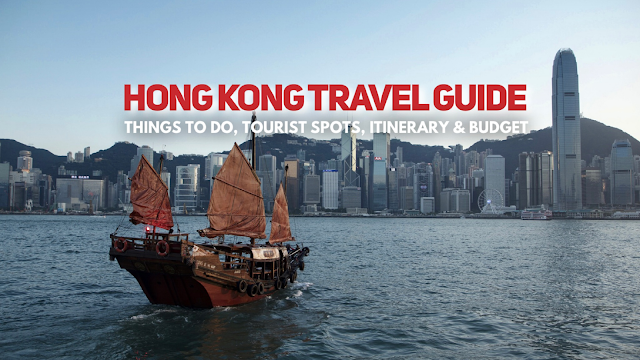
Traveling to Hong Kong for the first time this 2024? Discover the best of Hong Kong with this comprehensive HK Travel Guide Blog for first-timers with sample DIY itinerary and budget travel tips! From iconic landmarks such as Victoria Peak, Ngong Ping 360 and Tian Tan Buddha to hidden gems and tourist spots, let this help you in planning a wonderful Hong Kong adventure!
Updated first-timer's travel guide blog to hong kong 2024, quick facts about hong kong.
- Official Name - Hong Kong Special Administrative Region, or Hong Kong SAR
- Currency - Hong Kong Dollars (HKD / HK$)
- Language - Cantonese
- Weather - 4 Seasons (Winter/Spring/Summer/Fall)
- Electricity - 220 Volts at 50 Hertz (uses type G socket 3-pin square plugs)
- Time Zone: - UTC+08:00

Visa Requirements
Hong kong travel requirements.
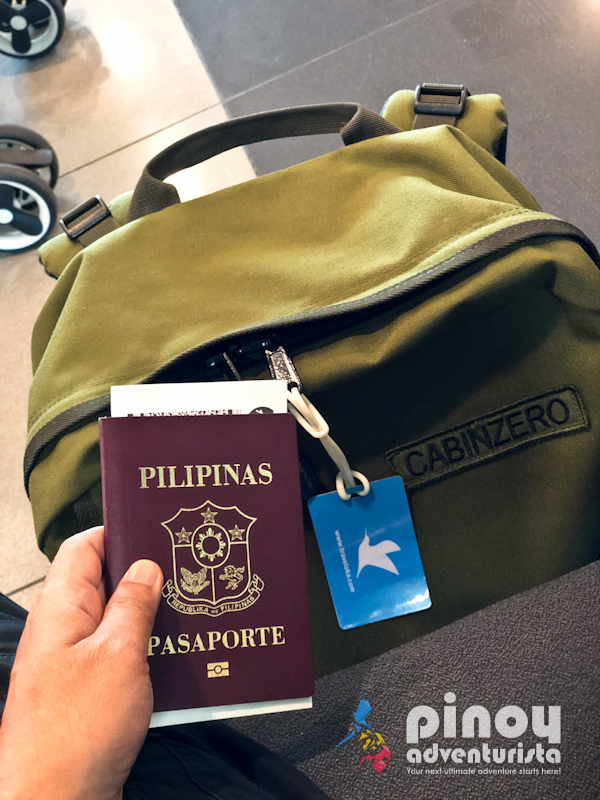
How to get to Hong Kong?
From manila, from cebu, davao or clark, asean cities to hong kong.
- Buy CotaiJet Ferry Discounted Tickets
- Buy TurboJet Ferry Discounted Tickets
- TurboJet Ferry Tickets (Macau - HK Airport)
How to Get Out of Hong Kong International Airport (HKIA)?
Airport express train.
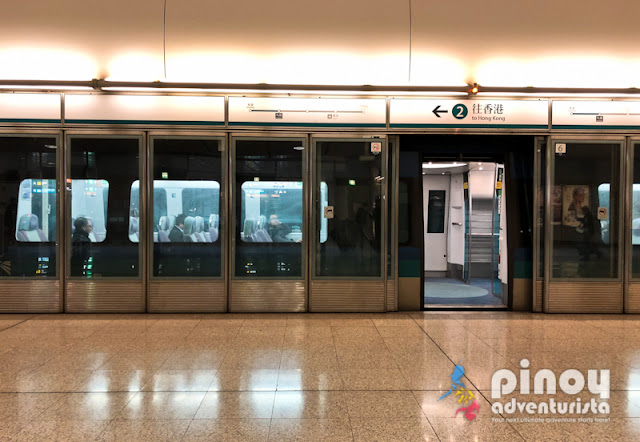
BUS OR COACH
A post shared by Pinoy Adventurista (Mervz) 🇵🇭 (@pinoyadventurista) on Jan 26, 2018 at 7:57pm PST
How to get around the city?
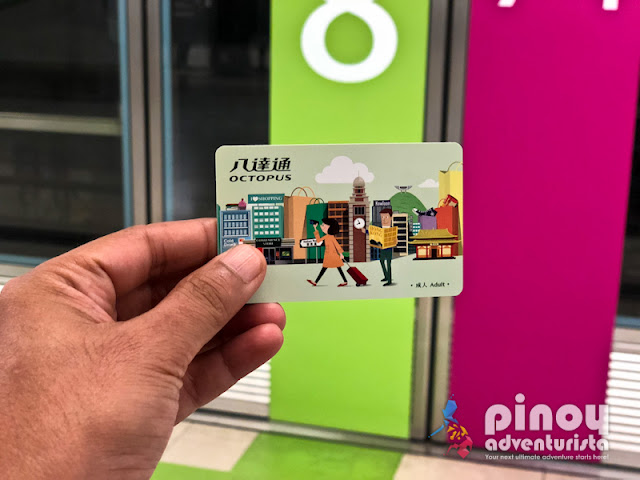
Hong Kong Weather
When is the best time to visit hong kong, how many days to stay in hong kong, hong kong time zone, useful cantonese phrases.
- Hello - Néih hóu (sounds like ley-ho)
- Thank you - Doh-je (sounds like door-chair)
- Excuse Me/Please - Ng-goi (sounds like mmm-goy)
- Good morning – Jou-sen (sounds like joe-san)
- Good night - Jou-tau (sounds like joe-towe)
- Good bye - Joi-gin (sounds like joy-gee-n)
- How much? - Gei-do-chin (sounds like gay-do-chin)
- Yummy - Hou-hou-sihk (sounds like ho-ho sick)
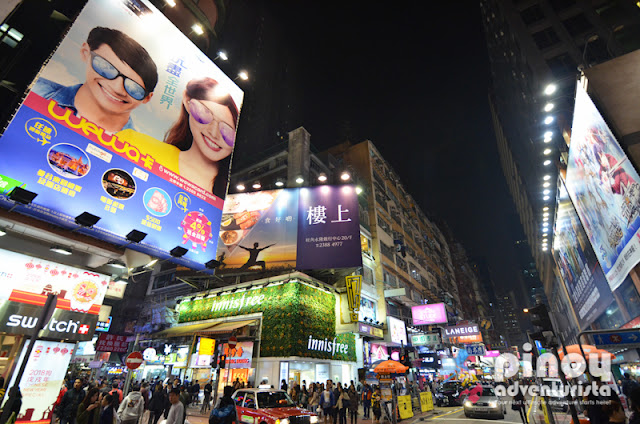
Where to Get or to Exchange Hong Kong Currency?

How to Stay Connected to the Internet in Hong Kong?
- 4G WiFi (Hong Kong Pick Up) for Hong Kong
- 4G or 3G SIM Card (HK Airport Pick Up) for Hong Kong

Where to Stay in Hong Kong?
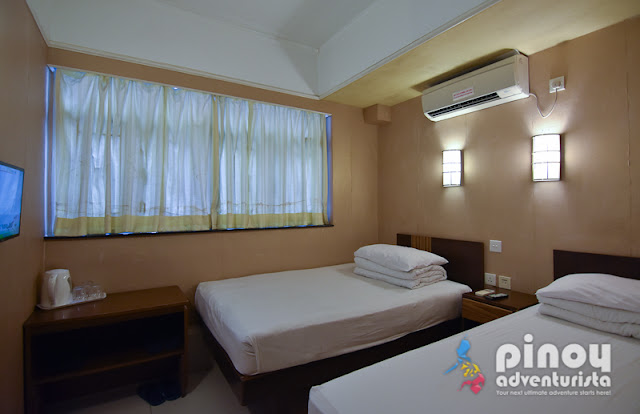
Urban Pack Hostel, Hong Kong
Hao's inn, tsim sha tsui, hong kong, hong kong premium guest house, jas guest house, which one is the best, other hotels in hong kong.
- Homy Inn - Check room rates and availability
- Ah Shan Hostel - Check room rates and availability
- Royal Plaza Hotel - Check room rates and availability
- Central 18 Gage St - Check room rates and availability
- Private Apartment Rooms @ Hongkong Island - Check room rates and availability
- The Park Lane Hotel Hong Kong - Check room rates and availability
- Royal Garden Hotel - Check room rates and availability
- Hong Kong Hostel - Check room rates and availability
- Harbour Grand Hong Kong Hotel - Check room rates and availability
- Regal Hong Kong Hotel - Check room rates and availability
For more hotels in Hong Kong....

Top Best Things To Do, Tourist Spots and Attractions in Hong Kong

HONG KONG DISNEYLAND
Ticket prices at hong kong disneyland's website.
- General Admission (Ages 12 – 64) - HK$619 / ₱ 4,161.19
- Child (Ages 3 – 11) - HK$458 / ₱ 3,078.87
- Senior (Ages 65+) - HK$100 / ₱ 672.00
- General Admission (Ages 12 – 64) - HK$799 / ₱ 5,371.22
- Child (Ages 3 – 11) - HK$589 / ₱ 3,959.51
- Senior (Ages 65+) - HK$170 / ₱ 1,142.81
TICKET PRICES AT KLOOK.COM
- 1-Day Adult Ticket - ₱ 3,413
- 2-Day Adult Ticket - ₱ 4,700
So, if you book your tickets at Klook.com, you can save as much as ₱ 748 pesos on standard 1-day adult ticket, and ₱ 671 pesos on standard 2-day adult park ticket.
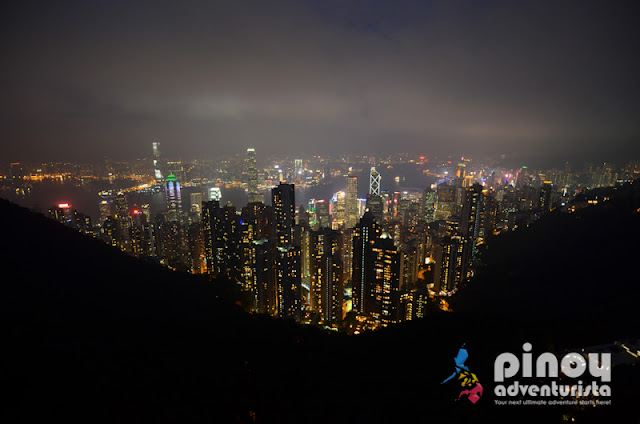
VICTORIA PEAK
- The Peak Tram - 7:00 am - 12:00 mn (Mon - Sun & Public Holidays)
- Sky Terrace 428 - Monday to Friday: 10:00 am - 11:00 pm; Weekends and Public Holidays: 8:00 am - 11:00 pm
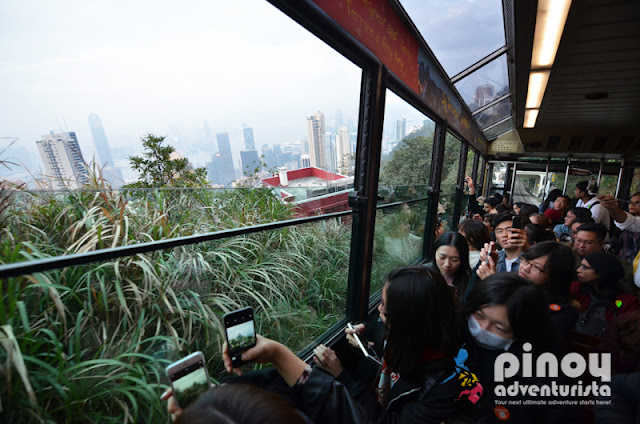
- Adult - HK$ 90 (return) / HK$ 77 (single)
- Child and Senior - HK$ 43 (return) / HK$ 35 (single)
- Adult - HK$ 45 (return) / HK$ 32 (single)
- Child and Senior - HK$ 20 (return) / HK$ 12 (single)
- The Peak Tram Sky Pass (Sky Terrace 428)
- Peak Tram Fast-Track Combo

MADAME TUSSAUDS HONG KONG
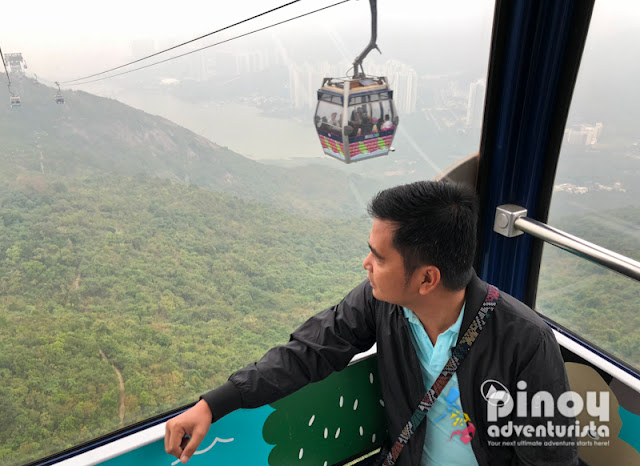
NGONG PING 360 CABLE CAR
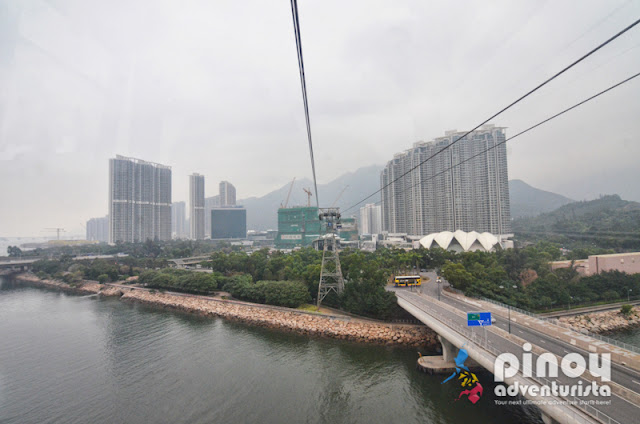
- Standard Cabin - HKD $210 (adult) / $100 (child) / $140 (senior)
- Crystal Cabin - HKD $290 (adult) / $180 (child) / $220 (senior)
- Standard Cabin - HKD $145 (adult) / $70 (child) / $95 (senior)
- Crystal Cabin - HKD $200 (adult) / $130 (child) / $150 (senior)
- Ngong Ping 360 - Crystal Cabin (One Way / Roundtrip)
- Ngong Ping 360 - One Way Standard Cabin + One Way Crystal Cabin (Roundtrip)
- Ngong Ping 360 - Standard Cabin (One Way / Roundtrip)
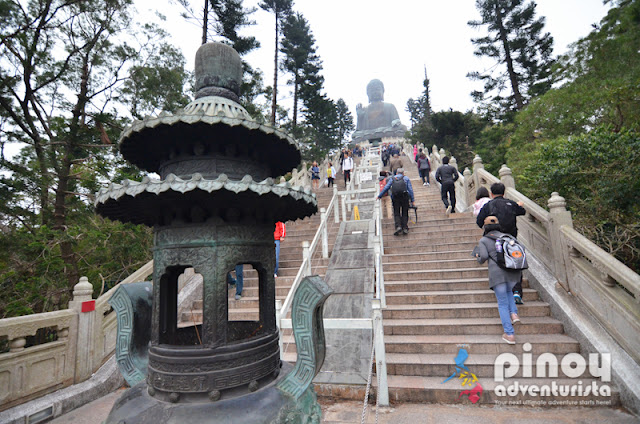
TIAN TAN BUDDHA, PO LIN MONASTERY, AND NGONG PING VILLAGE
[ purchase discounted ngong ping cable ride tickets ].

OCEAN PARK HONG KONG
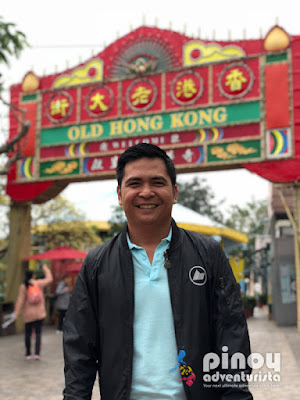
VICTORIA HARBOUR, AVENUE OF STARS, AND SYMPHONY OF LIGHTS
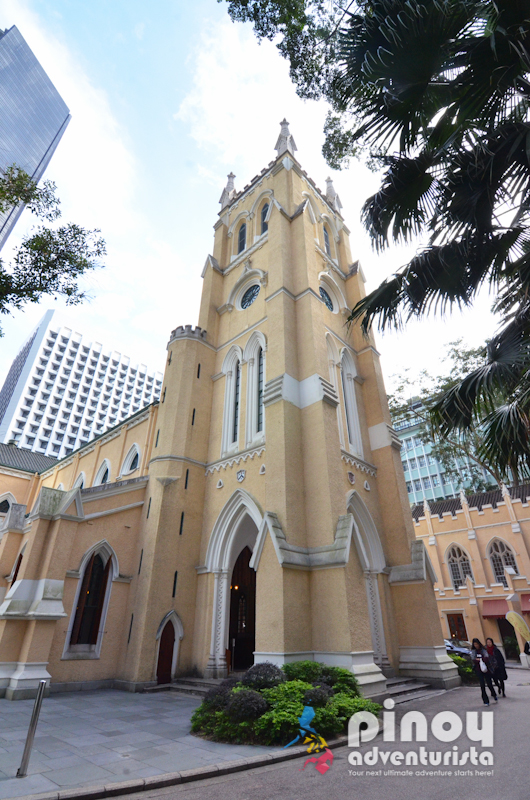
ST. JOHN'S CATHEDRAL
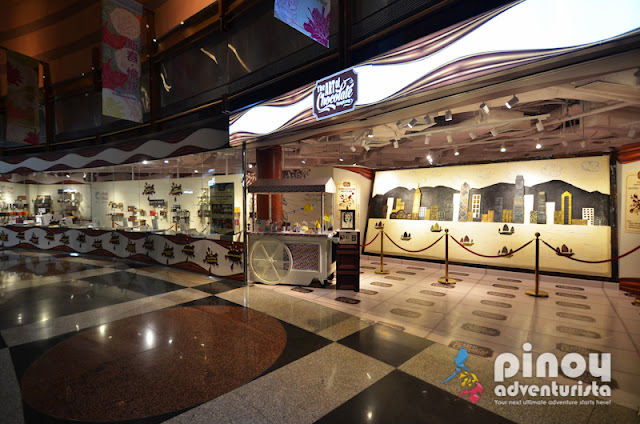
THE ART OF CHOCOLATE MUSEUM
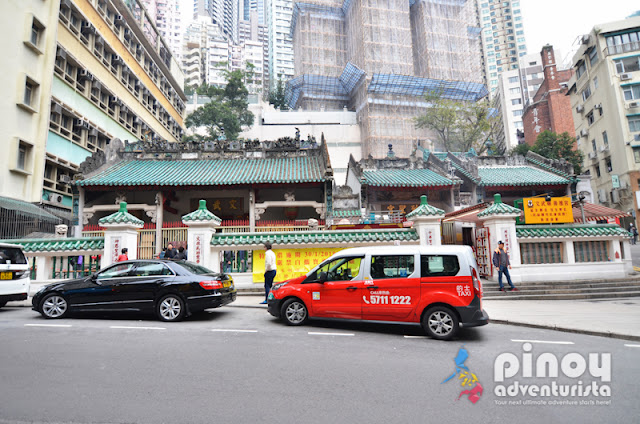
MAN MO TEMPLE

CHI LIN NUNNERY
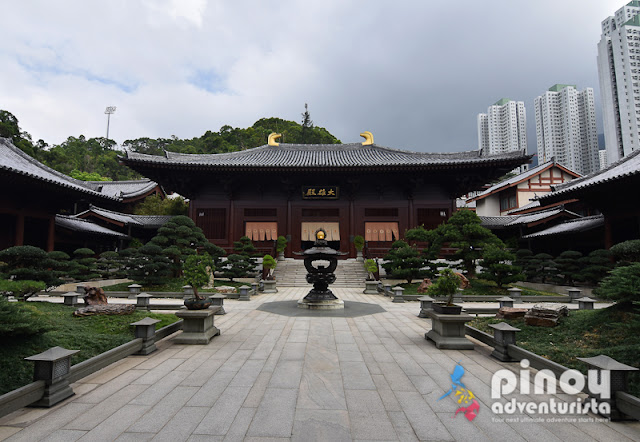
NAN LIAN GARDEN
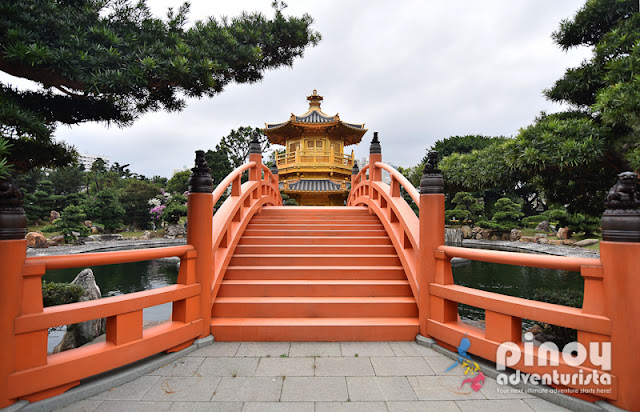
CHOI HUNG ESTATE

View this post on Instagram A post shared by Pinoy Adventurista (Mervz) 🇵🇭 (@pinoyadventurista) on Nov 14, 2018 at 11:01pm PST
MONTANE MANSION or MONSTER BUILDING
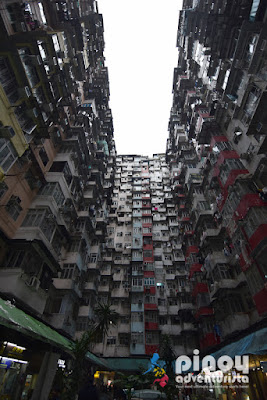
SKY100 HONG KONG OBSERVATION DECK
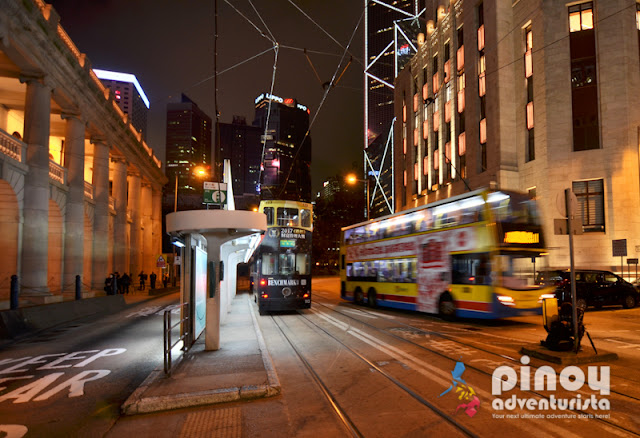
Other Popular Experiences in Hong Kong
Central Street Art & "Eat Pray Art" Half Day Tour
Big Bus Tours
AquaLuna Evening Sail
Hong Kong Helicopter Tours
Plaza Inn in Hong Kong Disneyland
Lantau Cultural and Heritage Insight Tour
Sightsee Macau Day Tour
Hong Kong Guided Walking Tour
Central and Victoria Peak Cultural Tour
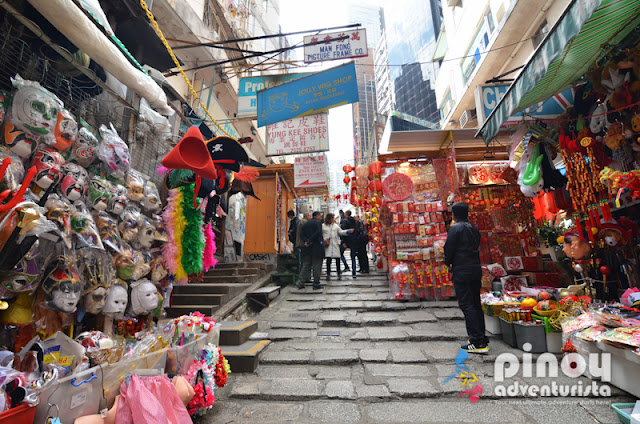
Sample Hong Kong Itineraries
Sample diy hong kong itinerary 3 days & 2 nights, hong kong travel guide day 1 - ngong ping + victoria peak.
- Depart from Manila
- Arrive at Hong Kong International Airport
- Take Airport Express Train to Kowloon
- GET DISCOUNTED TICKET TO AIRPORT EXPRESS TRAIN
- Take the free shuttle van to Tsim Sha Tsui
- Check-in / leave bags at the hotel or guesthouse in Tsim Sha Tsui
- Take the MTR to Tung Chung station
- Be sure to have an Octopus Card. Get one here (Pre-loaded with $50 HKD Credits) .
- Ngong Ping (Cable car ride, Ngong Ping Village, Big Buddha, Po Lin Monastery) [ RESERVE DISCOUNTED NGONG PING CABLE RIDE TICKETS ]
- Go back to Tung Chung station, take MTR to Central Station
- Walk to The Peak Tram Lower Terminus
- Take the tram to Victoria Peak [ GET DISCOUNTED THE PEAK TRAM AND SKY TERRACE TICKETS ]
- Enjoy the sight
- Go down Victoria Peak via the Peak Tram
- Walk towards MTR Central Station
- Take MTR to Tsim Sha Tsui Station
- Go back to the hotel/guesthouse
HONG KONG TRAVEL GUIDE DAY 2 - HONG KONG DISNEYLAND + MONG KOK
- Take the MTR to Hong Kong Disneyland
- Don't forget to bring your Octopus Card . For convenience, you may also get a private car transfer to Hong Kong Disneyland. Getting a private transfer is recommended especially if you're traveling with kids and senior citizens.
- Arrive at Hong Kong Disneyland [ AVAIL DISCOUNTED HONG KONG DISNEYLAND TICKETS ]
- Enjoy Hong Kong Disneyland
- Depart for Mong Kok
- Take MTR to Mong Kok Station
- Shop, eat, take photos
- Go back to Tsim Sha Tsui via MTR
- Walk towards Avenue of the Stars
- Enjoy Avenue of the Stars
- Watch the Symphony of lights show
HONG KONG TRAVEL GUIDE DAY 3 - CENTRAL HONG KONG + SHOPPING
- Take MTR to Central Station
- Explore street arts, Lan Kwai Fong, antique shops, Man Mo Temple
- For convenience, you may also avail a Central Street Art & "Eat Pray Art" Half Day Tour or a Hello Hong Kong Walking Tour .
- Shop for souvenirs and pasalubong
- Go back to the hotel / guesthouse
- Take the MTR to Kowloon Station
- Take the Airport Express Train to Hong Kong International Airport
- GET HERE DISCOUNTED TICKET TO AIRPORT EXPRESS TRAIN
- Depart for Manila

SAMPLE DIY HONG KONG-MACAU ITINERARY 3 DAYS & 2 NIGHTS
Day 1 - macau.
- 07:00 - Ferry ride from Hong Kong to Macau
- 08:00 - Arrival in Macau
- 08:30 - Leave bags in the hotel
- 09:00 - Pick up at either the Macau Hotel or Macau Outer Harbour Ferry Terminal
- 10:00 - Start of TKW Macau Tour (includes buffet lunch)
- Ruins of St. Paul's
- Mount Fortress
- Senado Square
- Na Tcha Temple
- A Ma Temple
- Macau Tower
- From here, you may request the tour guide to leave you at the Macau Tower so you could avail the Macau Tower Observation Ticket.
- 02:00 - Macau Tower Observatory
- 03:00 - Travel to Broadway Macau (ride the free casino shuttle bus)
- 04:00 - Broadway Macau (not available every Tuesday)
- Avail Viva La Broadway Show
- Redeem Broadway Macau set meal using the voucher
- 06:00 - Dinner
- 07:00 - Visit Casinos
- 10:00 - Go back to the hotel, rest.
DAY 2 - HONG KONG PART 1
- 05:00 - Check out from the hotel
- 06:00 - Take the ferry to Hong Kong
- 07:00 - Arrive in Hong Kong
- 08:00 - Leave bags at the hotel
- 08:30 - Pick-up at Holiday Inn Golden Mile on Mody Road, TST, Kowloon for Ocean Park Hong Kong
- 09:30 - Arrive at Ocean Park Hong Kong [ GET DISCOUNTED OCEAN PARK TICKETS ]
- 10:00 - 02:00 PM - Enjoy Ocean Park Hong Kong + Lunch
- 02:30 - Take the MTR to Kowloon (Sky100 is just outside Kowloon MTR Station)
- 03:00 - Go up to Sky100 Hong Kong Observation Deck + Avail Sky100 VR experience Ticket
- 04:00 - Take the MTR to Noah's Ark Hong Kong
- 05:00 - Go to Victoria Peak, avail roundtrip Peak Tram tickets [ GET DISCOUNTED THE PEAK TRAM AND SKY TERRACE TICKETS ]
- 07:00 - Dinner
- 08:00 - The Art of Chocolate Museum Ticket
- 09:00 - Go back to the hotel
DAY 3 - HONG KONG PART 2
- 09:00 - Travel to Ngong Ping (take the MTR to Tung Chung)
- 10:00 - Ngong Ping 360 Cable Car Ride [ AVAIL DISCOUNTED NGONG PING CABLE RIDE TICKETS ]
- 10:30 - Arrival at Ngong Ping
- Ngong Ping Village
- Walking with Buddha
- Ngong Ping Piazza
- Tian Tan Big Buddha
- Po Lin Monastery
- Grand Hall of Ten Thousand Buddhas
- Wisdom Path
- 12:00 - Lunch
- 12:30 - Travel back by 360 Cable Car Ride to Tung Chung
- 01:00 - Arrive at Tung Chung MTR Station
- 0200 - 05:00 - Rickshaw Sightseeing Bus Tour
- 06:00 - Watertours Pre-Sunset Cruise
- 09:00 - Dinner
- 10:00 - Go back to the hotel
For sample Hong Kong and Hong Kong-Macau Itineraries for 4 days and 5 days, please visit: Hong Kong Sample Itineraries with Macau Day Tour .
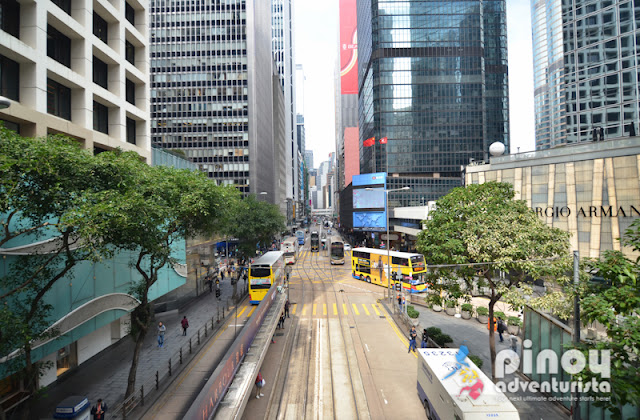
Hong Kong Trip Budget and Expenses
- Airport Express Train to Kowloon - PHP 463.00
- Accommodation (1st night) - PHP 1,500 / 2 = 750 per person
- Ngong Ping 360 roundtrip - PHP 993.00
- Victoria Peak Tram + Sky Terrace 428 - PHP 464.00
- Transportation - PHP 200.00
- Food expenses - 500.00
- TOTAL - PHP 3,370.00
- Accommodation (2nd night) - PHP 1,500 / 2 = 750 per person
- Hong Kong Disneyland - PHP 3,480.00
- Food expenses - PHP 800.00
- TOTAL - PHP 5,230.00
- Airport Express Train to airport - PHP 463.00
- TOTAL - PHP 1,163.00
GRAND TOTAL - PHP 9,763.00
- Round trip airfare Manila-Hong Kong-Manila
- NAIA terminal fee and travel tax
- Food expense for snacks
- Budget for pasalubong and souvenirs

Hong Kong Travel Tips and Reminders
- For electricity, most establishments use the type G socket 3-pin square plugs with 220 Volts at 50 hertz. Don't forget to bring a universal adapter when traveling to Hong Kong.
- Travel time from/to Hong Kong International Airport from/to Hong Kong City Center depends on which transportation you'll be using. The fastest way to get to/from the airport from/to the city is via the Airport Express Train . Take note of this so you could plan your travel especially going to airport so you will not miss your flight.
- You can bring in Philippine Peso, Euros, or US Dollars in Hong Kong and change it at the money changers at the airport or at the city center. Exchange rate at the airport is terribly low, it's better to change your money at the city center.
- If you're on a budget, don't eat in restaurants. It's best to look for streetside kiosks where you could eat a decent meal or go to fast food chains such as Mc Donald's where you could grab a meal for 25 HKD. Convenience stores such as 7-Eleven are also a good choice for affordable ready to eat meals.
- Hong Kong has summer, winter, spring and fall. Be sure to check the weather before going there so you'll know what kind of clothing you should pack in your bags.
- Hong Kong is a very walkable city. When exploring the city, you will certainly walk a lot. It is best to wear comfortable footwear.
- Free In-town Check-in Service is available for many major airlines at Hong Kong and Kowloon MTR stations. If you've already checked-out of your hotel and you still want to explore Hong Kong without bringing your huge luggage, you can avail this service between 90 minutes and one full day before your flight.
- To save on travel expenses, book discounted tickets at Klook.com , join group tours, take the bus or the MTR, walk if you can, stay in hostels, guest houses, or budget hotels in Hong Kong , and take advantage of flight seat sales and promos .
Hong Kong Travel Blogs
- iVenture Card Hong Kong Review - this is where I explained the benefits of using an iVenture Card, how much will you save, and what are the included attractions when using an iVenture Card on your trip to Hong Kong and Macau.
- Hong Kong Disneyland Cheap Tickets & Travel Guide with Things To Do, Hotels, and More Tips - this is where you'll find detailed information about Disneyland Hong Kong, wehere to buys cheap discounted tickets, top things to do, and more to make your Hong Kong Disneyland adventure truly memorable.
- Sample Hong Kong-Macau Itineraries - this is where I shared some sample DIY itineraries for 3,4,5 days in Hong Kong with Disneyland, Ocean Park and Macau Day Tours.
- Hong Kong to Macau by Bus or Ferry via Sea Bridge - this is where I explained and provided instructions on how to get to Macau from Hong Kong via ferry boat or by bus. Use this as your guide when visiting Macau coming from Hong Kong.
- Cheap and Affordable Hotels in Hong Kong - I shared on this article the budget hotels in Hong Kong that I have personally tried.
- First-hand Experience: Na-hold kami sa Immigration sa Hong Kong - this is where I narrated our experience when the immigration officer in Hong Kong held us for questioning and what we did so we could enter Hong Kong.
Frequently Asked Questions (FAQs) about Traveling to Hong Kong
Do we need show money to enter hong kong, is disneyland ticket included in the iventure card, upon arrival at kowloon can we leave our baggage at the in-town check in then go straight to sight-seeing, we are 4 in all (me, husband, and 2 kids), should each of us buy the octopus card or can we just buy 1 or 2, i hope this hong kong travel guide blog 2024 for first-timers will help you in planning a memorable hong kong adventure enjoy and have fun.

FOLLOW MY ADVENTURES ON YOUTUBE @PinoyAdventurista
22 comments :.
Hong Kong's official tourism guide includes tourist information on attractions, events, shopping and dining, vacation holiday packages, street maps, virtual tours and travel planning itineraries to experience Hong Kong's unique international living culture. Visit Hong Kong, Asia's top travel destination. If you're planning on including Macau to your itinerary, Kowloon and Hong Kong Island have a ferry terminal each. Hong Kong MACAU Ferry Terminal along Connaught Road Central, Sheung Wan area in Hong Kong Island. Hong Kong CHINA Ferry Terminal along Canton Road, Tsim Sha Tsui, Kowloon. Where to get the best flight deals? My go-to platform for grabbing the best flight deal? Skyscanner! But of course, it's always good practice to research first the budget airlines that exist in the country that you're currently staying in, since they could.
Where to next? Sama ako! Hahahaha

Hi is there any bus station at Tsim Tsa Tsui for Rickshaw Sightseeing? Or I need to go to Central (Star Ferry) for the departure?

Ibinigay ng blog na ito lahat at walang itinira. Thank you for this! More than excellent blog. God bless you!
Hello! I am travelling to HK with my family and this is our first time. Just wondering, we are 4 in all (me, my husband, and 2 kids), should each of us buy the octopus card or can we just buy 1 or 2?
Indeed, with so much to do in Hong Kong, one can scratch one's head about where to start in order get the most out of the trip. This in-depth DIY itinerary that will help you plan and make the most out of your upcoming trip to Hong Kong! Thank you for sharing your HONG KONG TRAVEL GUIDE blog with sample HONG KONG ITINERARY and HONG KONG-MACAU ITINERARY. Hong Kong is definitely an exciting city. I’m so excited to travel to Hong Kong!
Hi good pm po ano po need ko kasi student po ako at sinusuporthan lng ako ng bf ko at travel ako ngayon june sa hongkong tip nmn po ano need ko e provide na requirements sa img.ty
For first time traveller with 2 kids (& budgeted as well), is it advisable to do diy hkg instead of buying a ready 4d3n complete package from a travel agency
if i buy the iventure card, wala na po ba aq babayaran upon entrance sa mga included tourist attractions?
Our family will be going to HK this November. This is our first out of the country trip. Since Disneyland is the happiest place on earth, I want my 2 boys (12 and 15 years old) to enjoy it fully. Is it advisable to avail of the 2day pass to Disney? Since 4days 3 nights naman kami. Thanks.
why i cant copy the text on your website? im planning to follow your 3 day IT
Is it really necessary na within 6 months validity yung passport? We're going to HK on December 2019 and expiration nung passport is February 2020. Magkaka problem kaya pag ganun? Thank you so much!
Yes, necessary. Common sense na yun at tsaka laging sinasabi yan sa mga websites ng DFA at mga airline companies.
For the free in-town check-in service po ba pwede iwan yung luggage more than 90minutes? Let's say arrival on HK is 8am then iiwan namin yung luggage and pick up na ng 4pm. Thanks in advance!
Can we book tickets for the Airport Express Train at the HK airport already? Thanks!
a little bit confuse with your travel tip po about sa In-town check-in services, as per Klook below " We understand that you want to leave your luggage more than 90 minutes in Airport Express Train, As I check on the activity there is no information that you can leave the luggage, the 90 minutes that you can see on the activity is the time for check in before departure. "
We will arrive at HK International Airport by 11:30pm,is there still a chance na makabili kami ng octopus card? San po kaya?
Firstime ko mka go ng hongkong,dati macau now hongkong tanggap kya nila ako
Pag mag visit ng Hongkong need po ba Rapid Test?
The best HK blog, very informative, detailed, and helpful! Thank you for this!
Need po ba proof of vaccination pagpabalik na Ng pinas?
Hindi pa po kasama sa octopus card un transpo from airport to hotel? Need pa po pabook ng bukod for train?
Looking for Budget Travel Guide Blogs, Hotel Reviews, and Sample DIY Itineraries? Welcome to Pinoy Adventurista, "Your Next Ultimate Adventure Starts Here!" Pinoy Adventurista is one of the Top Travel Blogs in the Philippines and the World. In 2013, he visited all the 81 provinces in the Philippines.
- Created with Pixso. MY ACCOUNT
I’m Sorry. I didn’t get that.
Hong kong tourism board, travel health advice.
Ensuring the safety and wellbeing of all travellers is important to us. Before your journey, follow these recommendations to safeguard your health and enjoy a worry-free visit to Hong Kong.
- Discuss with your family doctor before your trip if you have any medical conditions
Make a record of all the medicines that you are using
Keep any medications that need to be taken regularly in your hand luggage
Check with your family doctor or the Travel Health Centers of the Department of Health for the types of vaccines required. These may include vaccination against hepatitis A and B, yellow fever and typhoid fever
Inform your doctor of any allergies if you need vaccination
For more travel health tips and the latest news on travel-related diseases and environmental health risks, please visit: https://www.travelhealth.gov.hk/english/index.html .
- Practical Info

We use cookies to ensure that we give you the best experience on our website, to understand your interests and provide personalized content to you as further set out in our Cookie Policy here . If you accept the use of cookies on our website, please indicate your acceptance by clicking the "I accept" button. You may manage your cookies settings at any time.
Manage my cookies
Cookie Setting
- Car Rentals
- Airport Transfers
- Attractions & Tours
- Flight + Hotel
- Destinations
- Trip.com Rewards
2024 Travel to Hong Kong – Latest Entry Restrictions and Visa Info

March 7, 2024
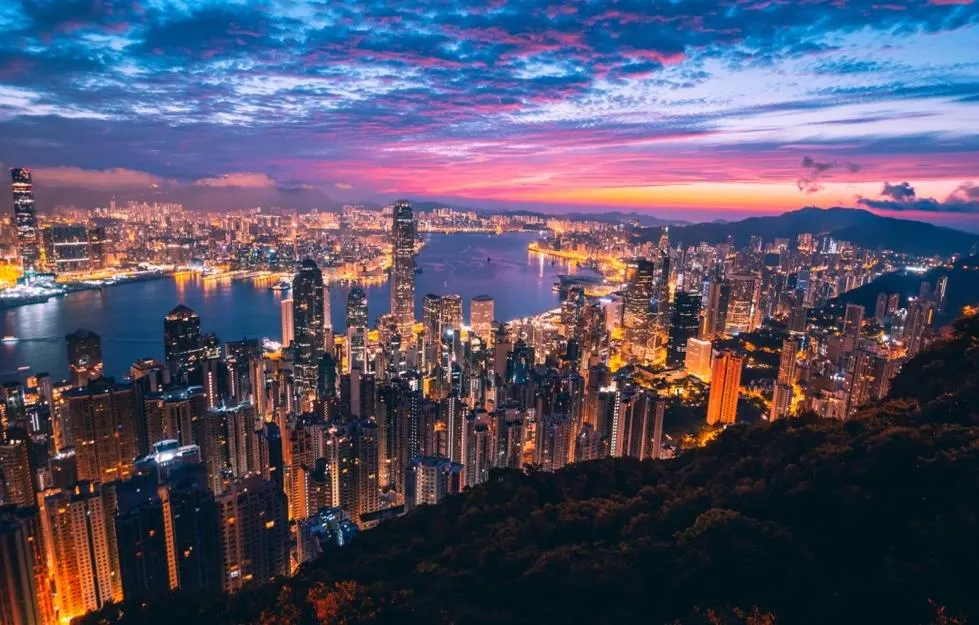
Hong Kong is a tourism and commerce hub in Asia (Source: Simon Zhu/unsplash)
Hong Kong is officially known as the Hong Kong Special Administrative Region of the People's Republic of China (HKSAR). Positioned on the south coast of China, adjacent to China's Guangdong Province, Hong Kong is made up of 3 territories, and they are Hong Kong Island, Kowloon Peninsula, and the New Territories. As the 8th most densely populated city worldwide, the size of Hong Kong only covers 427 square miles (1,110 square kilometers), and Hong Kong's population is mainly ethnic Chinese.
Visa Information
Anyone who travels to Hong Kong must carry their original passport during the trip.
Before traveling, make sure your passport is valid for at least the next 6 months and has a blank page.
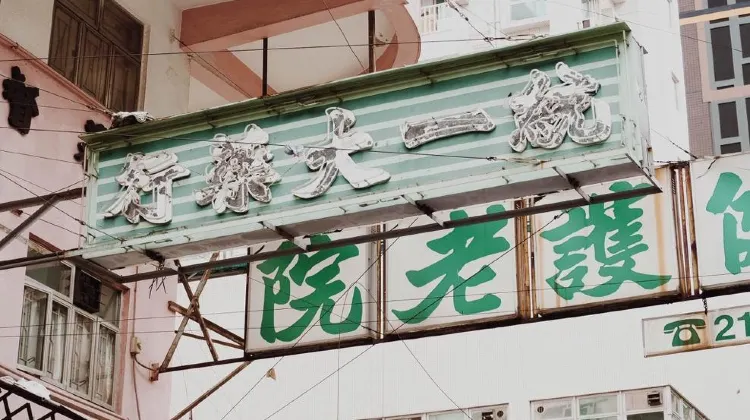
Faded shop signages on the Hong Kong street (Source: Katie Manning/unsplash)
On Dec 28, 2021, the HKSAR Immigration Department launched the "e-Visa" and electronic services for visa application arrangements.
Travel Tips & General Information
✅ time zone, ✅ currency and monetary exchange rate, ✅ safety in hong kong, ✅ the best time to visit, flight status.
-Airlines Operating Flights to Hong Kong: A wide range of airlines from around the world offer direct or indirect flights to Hong Kong. If you prefer to travel to Hong Kong by direct flights, consider using Air China, Air France, American Airlines, ANA, British Airways, Cathay Pacific, Emirates, EVA, KLM, LATAM Airlines, Malaysia Airlines, and United. Travel to Hong Kong by direct flights from the United States, passengers can opt for American Airlines, Delta, United, Cathay Pacific, and Singapore Airlines. If you are planning your travel to Hong Kong, check out Trip.com's flight options to Hong Kong and other vacation packages.
-Airport Information: Visitors who travel to Hong Kong by air will land at Hong Kong International Airport (HKG), which is on the island of Chek Lap Kok. Located about 22 miles (35 kilometers) from central Hong Kong, this airport welcomes passengers from all over the world and is a base for Cathay Pacific, Cathay Dragon, Hong Kong Airlines, and Hong Kong Express. The HKG provides premium services and facilities, including airline lounges, ATMs and banking services, courtesy showers, children's play areas, information kiosks, numerous restaurants, and shopping options.
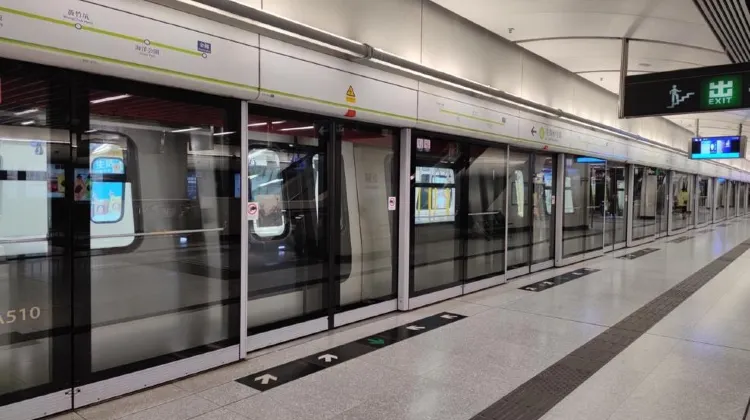
The sign for the MTR is a red circle with a Chinese symbol. (Source: Cheung Yin/unsplash)
-How to travel between the airport and downtown: Upon arrival at the HKG, passengers can travel by various means of transportation from the airport to the city center, like taxis, buses, trains, and limo services. There are 3 types of airport taxis, because they travel to different regions, e.g., Urban taxis (red), New Territories taxis (green), and Lantau taxis (blue). The Airport Express Train is the quickest transport method. The journey takes roughly 24 mins and stops at Kowloon station and Hong Kong station. Tickets can be purchased at any Airport Express Customer Service Centre or online. The cheapest transfer option is by local bus. It will take about 45 mins to Central and around 30 mins to Kowloon.
For a private transfer between the airport and downtown Hong Kong, check out Trip.com’s offers: Private Transfer: Hong Kong Airport HKG to Hong Kong City in Business Car , and Departure Private Transfer: Hong Kong City to Hong Kong Airport in Business Car .
Territories in Hong Kong

The iconic skyline of Victoria Harbor on Hong Kong Island (Source: Airam Dato-on/unsplash)
The Eastern District of Hong Kong Island covers the northeastern portion of the island. Well-known areas in this district include Fortress Hill and Quarry Bay. The Southern District is surrounded by hills, reservoirs, and country parks. Located in the north-central part of Hong Kong Island is Wan Chai District. Notable locations in this district include Causeway Bay, Hong Kong Convention and Exhibition Centre, and Central Plaza.
The Peak , Ocean Park Hong Kong, Repulse Bay, Central Plaza Hong Kong, Dragon's Back Trail, Central Mid-level Escalators, and Cat Street Antique Market are top attractions on Hong Kong Island.
Planning to travel to Hong Kong but haven't decided on accommodation? Check out these Trip.com suggestions on Hong Kong hotels:
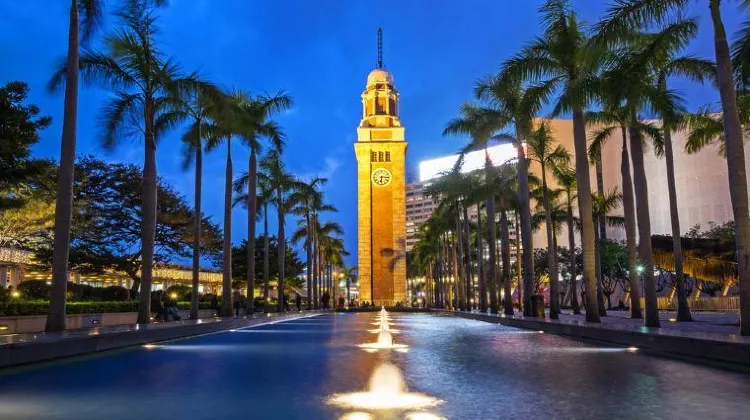
The Clock Tower is on the southern shore of Tsim Sha Tsui
Top attractions in Kowloon include The Avenue of Stars, Symphony of Lights, Jade Street, Wong Tai Sin Temple, Hong Kong Coliseum, and Kowloon Park. For museum-goers, don't miss out on the Hong Kong Heritage Discovery Center, Hong Kong Cultural Center, and Hong Kong Museum of History. For anyone who loves street markets and bargain hunting, Temple Street Night Market is one of Hong Kong's largest shopping areas.
For hotels in Kowloon, check out Trip.com’s suggestions:
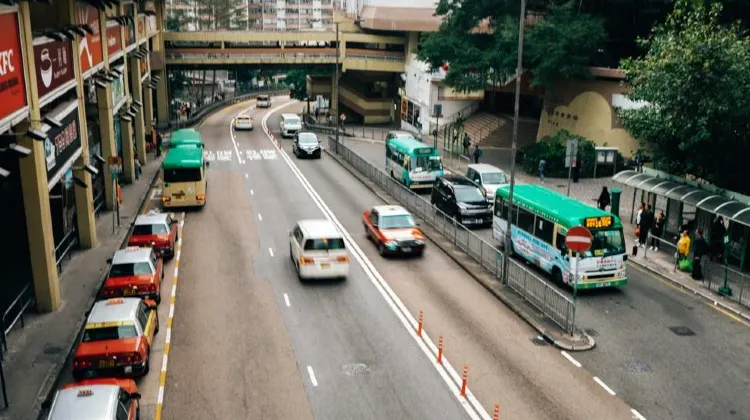
The New Territories makes up 86.2% of Hong Kong's territory
(Source: Big Dodzy/unsplash)
Top attractions in the New Territories include Che Kung Temple, Hong Kong Railway Museum, Lam Tsuen Wishing Trees, Lung Yeuk Tau Heritage Trail, Man Mo Temple, Sam Tung Uk Museum, and Tai Fu Tai Mansion. For nature lovers, there are numerous parks and scenic areas to explore, e.g., Hong Kong Wetland Park, Lion Rock Country Park, and Ma On Shan Country Park.
For hotels in the New Territories, check out Trip.com’s recommendation:
Most Famous Tourist Attractions in Hong Kong
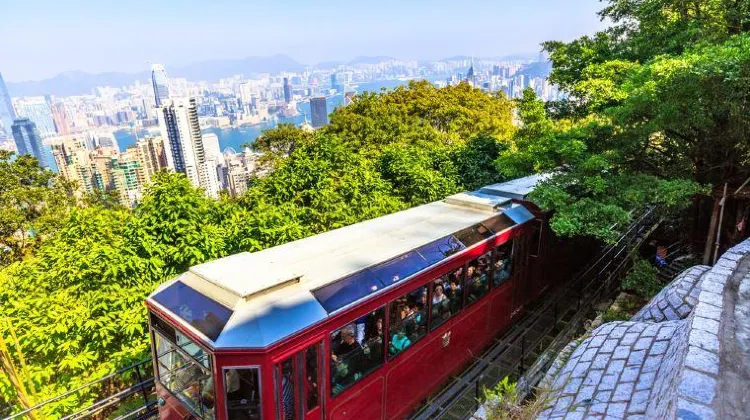
Visitors can reach The Peak by taxi, bus, or the Peak Tram
1. Victoria Peak (The Peak)
Address: Hong Kong Island, Hong Kong
Price: Free for the Peak. Peak tram costs HKD37 one-way.
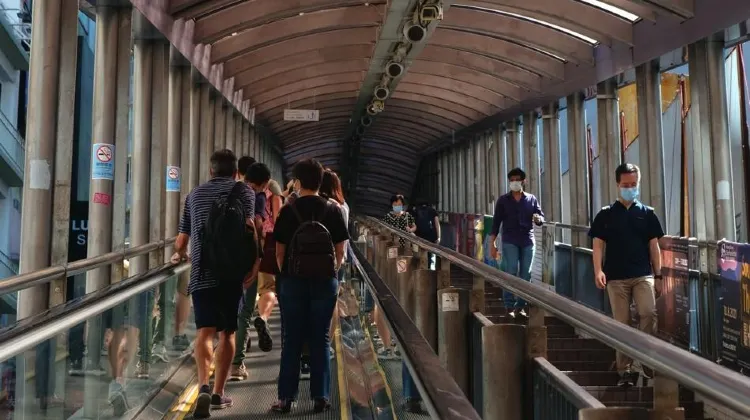
Central Mid-levels Escalators is one of the world's longest outdoor escalators
2. Central Mid-levels Escalators
Address: Jubilee Street, Central, Hong Kong
Price: Free
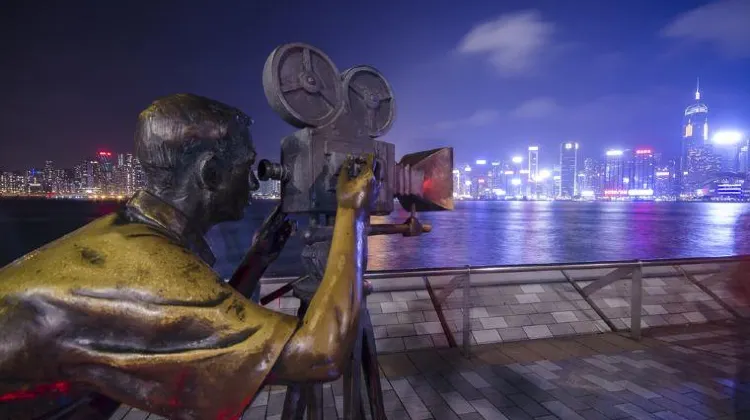
The Avenue of Stars has stars for 100 celebrities
3. The Avenue of Stars
Address: Tsim Sha Tsui Promenade
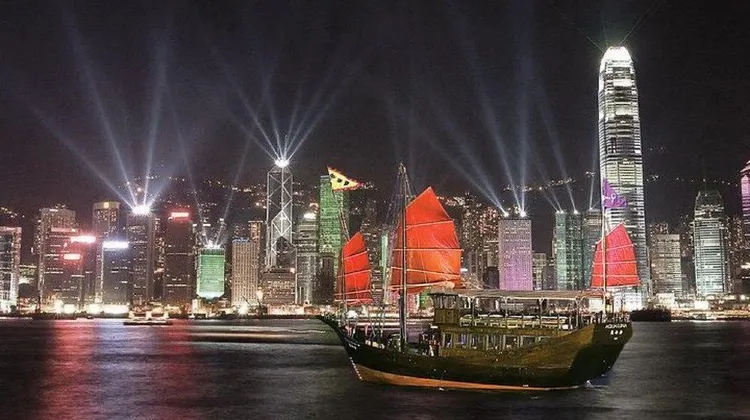
Symphony of Lights starts every night at 20:00
4. Symphony of Lights
Address: Victoria Harbor, 18 Harcourt Rd, Admiralty, Hong Kong
Time: Every night at 20:00 and lasts around 15 mins.

Temple Street Night Market is close to Jordan MTR Station (Exit A)
5. Temple Street Night Market
Address: Temple Street, Jordan, Hong Kong
Time: Daily from 17:00 to 23:00
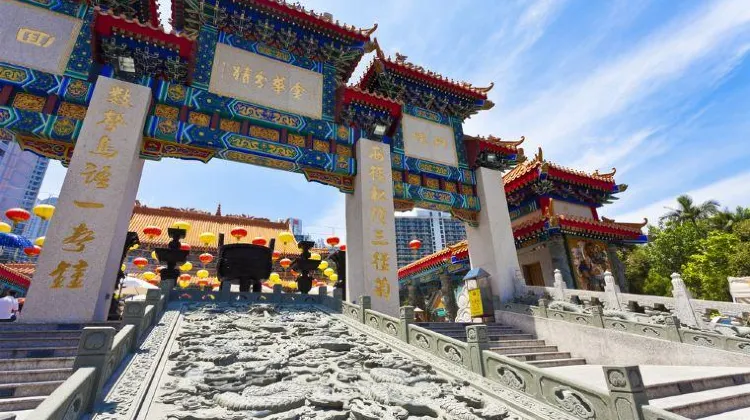
Wong Tai Sin Temple is located in Wong Tai Sin in Kowloon
6. Wong Tai Sin Temple
Address: 2 Chuk Yuen Village, Wong Tai Sin, Kowloon, Hong Kong
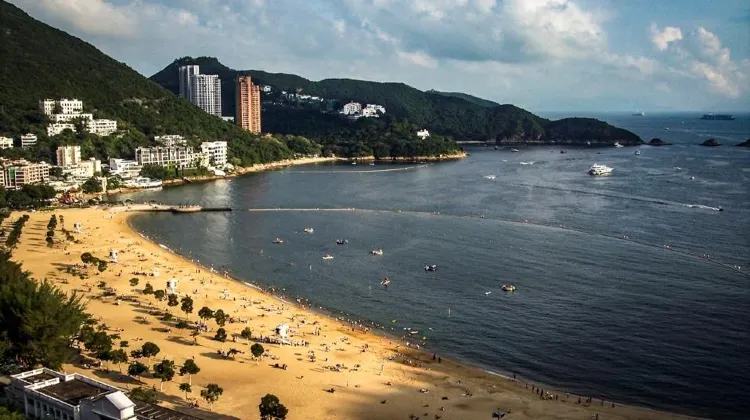
Repulse Bay is located in the southern district of Hong Kong Island (Source: Joshua J Cotton/unsplash)
7. Repulse Bay
Address: Beach Road, Repulse Bay, Hong Kong Island
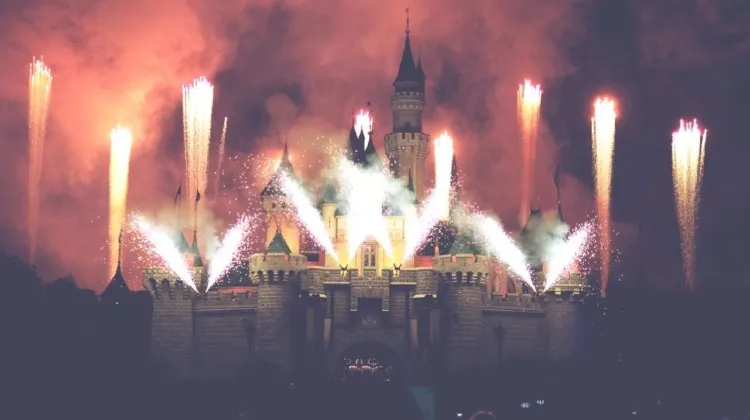
Hong Kong Disneyland has its own MTR station, Disneyland Station (Source: Tommao Wang/unsplash)
8. Hong Kong Disneyland
Price: HKD639 (approx. USD82) for a 1-day ticket
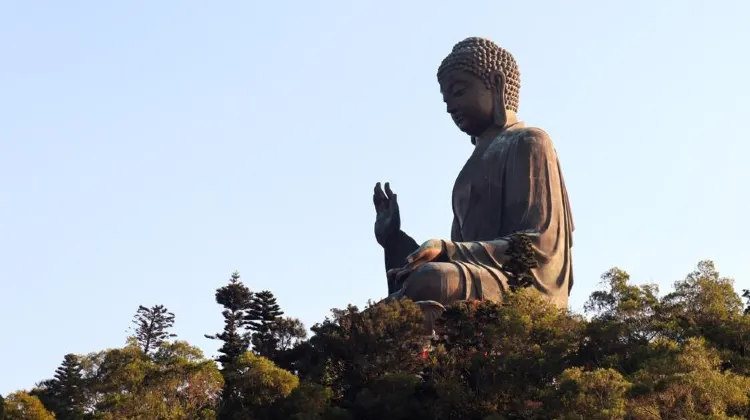
Tian Tan Buddha Statue is also located on Lantau Island (Source: Fruit Pat/unsplash)
9. Big Buddha (Tian Tan Buddha Statue)
Address: Ngong Ping, Lantau Island, Hong Kong
The magnificent 34-meter-high Big Buddha costs nearly HKD68 million (USD8.84 million) to build. It is surrounded by green forest and sits above Po Lin monastery on Lantau Island. As one of the world's giant Buddha statues of its kind, the Tian Tan Buddha Statue can be seen from miles away. For more sightseeing in Lantau, check out Trip.com’s offer: Lantau Island Private Customized Walking Tour with English speaking guide .

Tai O Fishing Village can be reached by ferry, MTR, and bus (Source: Joshua J Cotton/unsplash)
10. Tai O Fishing Village
Address: Tai O Fishing Village, Lantau, Hong Kong
Will I need to quarantine when I travel to Hong Kong?
No. As of Sep 23, 2022, mandatory hotel quarantine is no longer required. All inbound travelers can go straight home or to a hotel.
Do I need a visa to travel to Hong Kong?
Nationals from 170 countries and territories may travel to Hong Kong visa-free. For those who are required to obtain a visa before arrival, an e-Visa service is available.
How many districts and territories are there in Hong Kong?
There are 18 districts located in 3 major territories in Hong Kong.
What currency can I use in Hong Kong?
The official currency in Hong Kong is the Hong Kong Dollar (HKD).
How to travel to Hong Kong city center from the airport?
Hong Kong airport to downtown transfer options include taxis, buses, trains, and limo services. Trip.com also offers private transfers between the airport and the city center.
Travel to Hong Kong – Latest Entry Restrictions and Visa Info
- ● Visa Information
- ● Travel Tips & General Information
- ● Flight Status
- ● Territories in Hong Kong
- ● Most Famous Tourist Attractions in Hong Kong
<h3>Trending Searches</h3>
Popular Content
- cheap hotel arlington tx
- Bottomless Brunch DC
- Restaurants in Vietnam
- Waterfalls in Thailand
- things to do in times square
- How to get cheap flights from Boston to Miami
- Virtual Valentines Day Ideas
- things to do in Pensacola
- cheap hotels in bangkok sukhumvit
- Chinese New Year
- Why Are Flights So Expensive Right Now
- Extended Stay Hotels Shanghai
- Chinese New Year Traditions
- London Dungeon
- Nami Island Discounts
- Night Market in Bangkok
- Cheap Hotels Tonight
- Siena Itinerary 2 Days
- Sunderland Itinerary 2 Days
- Gondar Itinerary 1 Day
- Quanzhou Itinerary 8 Days
- Baishan Itinerary 3 Days
Recommendations
- Trip.com Hotel Discounts
- Andaz Shenzhen Bay
- Beidaihe Bei Hua Yuan Sea View Hotel (Beidaihe Biluo Tower)
- Hotels near Darul Aman Stadium
- Miluo Accommodation
- Kuala Lumpur Accommodation
- Hotels near Hong Kong International Airport
- VIP Executive Arts Hotel
- Novotel Phuket Resort
- Hotels in Macau
- Lavande Hotel (Jinbo Plaza, Konggang Avenue, Jiahe Wanggang Metro Station, Guangzhou)
- The Fullerton Ocean Park Hotel Hong Kong
- Extended Stay Hotels Hong Kong
- Park Hyatt Serviced Apartment (Guangzhou Zhujiang Xincheng Branch)
- 5 Star Hotels in Bang Yai District
- James Joyce Coffetel Hotel (Guangzhou Beijing Road Metro Station Pedestrian Street)
- Crowne Plaza Hunter Valley
- Hiso Place Hotel
- Guanacaste Accommodation
- Hotels Tonight Orlando
- Cheap Hotels in Boracay
- Cheap Hotels in DC
- Shanghai Layover Tour
- JW Marriott Shanghai
- Four Points by Sheraton Shanghai
Necessary Travel Information
- Run for Coffee Lovers 5K/10K/13.1 PHOENIX
- Latest Events in South St (Continuously Updated)
- trip to Lakshadweep cost
- weather in Japan in September
- Trip to France cost
- weekend getaways from nyc
- Trip to South Africa cost
- what to do in macau
- Voss Itinerary 1 Day
- Dalian Itinerary 3 Days
- China High Speed Rail Beijing to Shanghai
- tokyo disneysea tickets
- [EPub] download The Brothers Hawthorne (The Inheritance Games, #4) By Jenni
- Featured Events in Brisbane in 2024 (Continuously Updated)
- Customer Support
- Service Guarantee
- More Service Info
- Website Feedback
- About Trip.com
- Terms & Conditions
- Privacy Statement
- About Trip.com Group
Other Services
- Investor Relations
- Affiliate Program
- List Your Property
- Become a Supplier

Hong Kong Free Press HKFP
Hong Kong news, breaking updates – 100% Independent, impartial, non-profit
Hong Kong hits back after Taiwan advises citizens to avoid unnecessary travel to city and mainland China

- Click to share on X (Opens in new window)
- Click to share on Facebook (Opens in new window)
- Click to share on LinkedIn (Opens in new window)
- Click to share on Mastodon (Opens in new window)
- Click to share on WhatsApp (Opens in new window)
- Click to share on Reddit (Opens in new window)
- Click to share on Telegram (Opens in new window)
- Click to print (Opens in new window)
The Hong Kong government has condemned Taiwan authorities after the self-ruled island issued its second-highest travel warning for Hong Kong, Macau and mainland China.
Taiwan on Thursday upgraded the travel alert, urging its citizens to “avoid unnecessary travel” to the above places, citing personal safety risks following the enactment of multiple security laws and a recent update to China’s judicial guidelines that allows the death penalty for advocating Taiwan independence.

“Mainland China, Hong Kong, and Macau have continued to increase and amend relevant national security laws in recent years. There have been quite a few cases of Taiwanese citizens being illegally detained, held, and interrogated when traveling to mainland China,” the Taiwanese government said in a Chinese statement published by the island’s Mainland Affairs Council (MAC).
It added that the new punishment guidelines issued by Beijing “seriously threatens the personal safety of Taiwanese citizens traveling to the mainland, Hong Kong, and Macau.”
“The Mainland Affairs Council reminds Taiwanese citizens to consider with caution the necessity of traveling to mainland China, Hong Kong, and Macau,” the statement read.
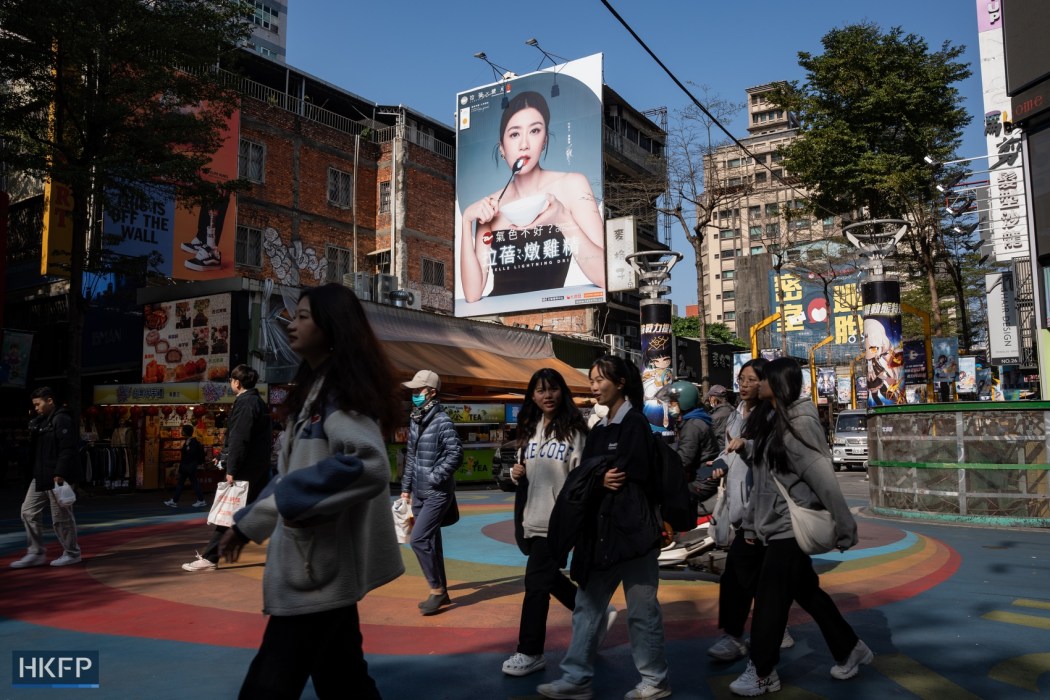
It continued: ” If there is a need to travel to mainland China, Hong Kong, or Macau, it is advised to avoid touching upon or discussing sensitive topics and affairs, filming ports, airports, and military exercise sites, and carrying books related to politics, history, and religion.”
In a statement issued on Thursday night, the Hong Kong government said the MAC’s move was “fact-twisting smears and slanders exposing malicious intentions.”
“The government strongly urges Taiwan authorities to stop smearing the national security law and the Safeguarding National Security Ordinance . The despicable manoeuvre with politics is doomed to fail,” the statement read.

It said that many countries had enacted legislation to safeguard national security, adding that the city’s security laws had “the international standard for the protection of human rights.”
Following the enactment of the Beijing-imposed national security law, Hong Kong established the Safeguarding National Security Ordinance , a homegrown security legislation known locally as Article 23. It came into effect on March 23 after being fast-tracked through the city’s opposition-free legislature.
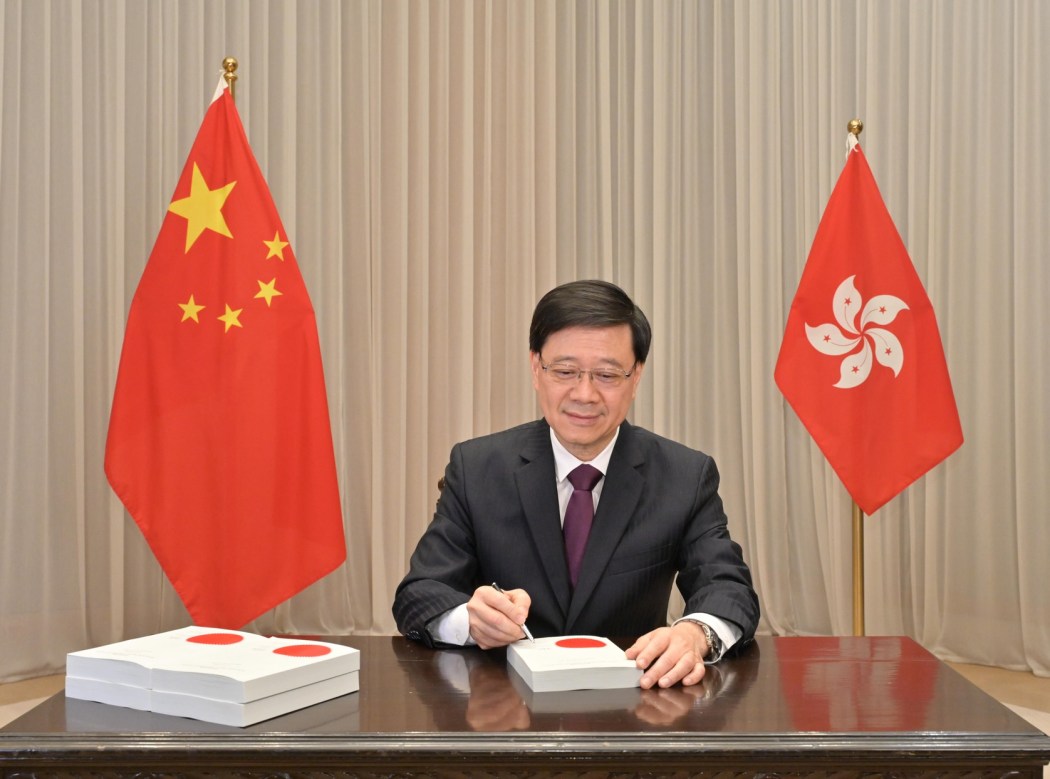
Separate to the 2020 Beijing-enacted security law , the homegrown Safeguarding National Security Ordinance targets treason, insurrection, sabotage, external interference, sedition, theft of state secrets and espionage. It allows for pre-charge detention of to up to 16 days, and suspects’ access to lawyers may be restricted, with penalties involving up to life in prison . Article 23 was shelved in 2003 amid mass protests, remaining taboo for years. But, on March 23, 2024, it was enacted having been fast-tracked and unanimously approved at the city’s opposition-free legislature.
The law has been criticised by rights NGOs , Western states and the UN as vague, broad and “regressive.” Authorities, however, cited perceived foreign interference and a constitutional duty to “close loopholes” after the 2019 protests and unrest .
Death sentence
Beijing published a notice introducing punishment guidelines against Taiwan independence advocates and those inciting subversion last Friday.
According to the notice, “ringleaders” of independence efforts who “cause particularly serious harm to the state and the people” can be sentenced to death.
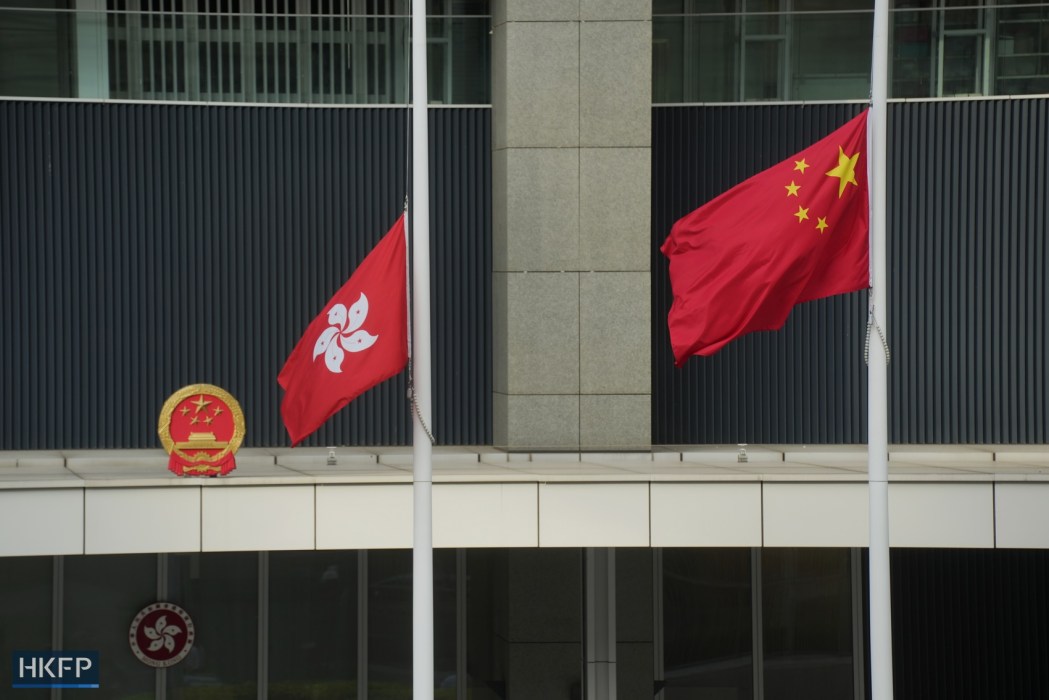
Other leading advocates could face jail terms ranging from 10 years to life imprisonment, the notice said.
It also stipulated that Chinese courts can hear the trial against defendants suspecting for advocating Taiwan independence even if the defendant is absent.
Support HKFP | Policies & Ethics | Error/typo? | Contact Us | Newsletter | Transparency & Annual Report | Apps
Help safeguard press freedom & keep HKFP free for all readers by supporting our team

latest national security stories
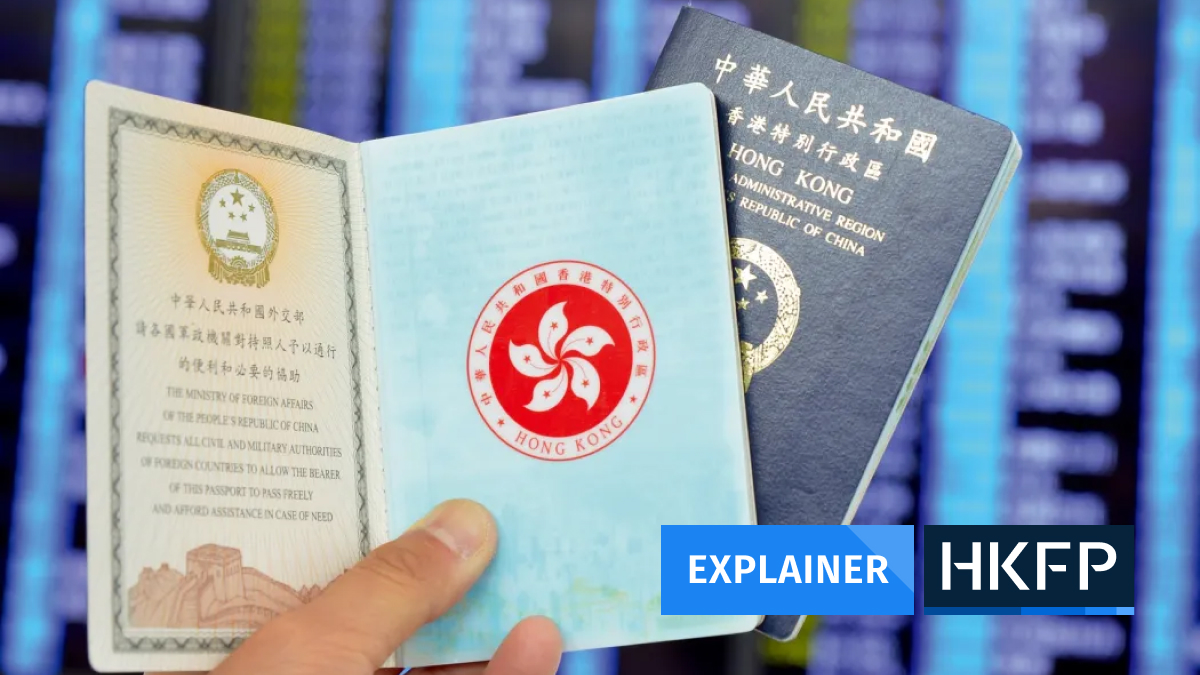
Explainer: Hong Kong’s national security crackdown – month 48

Ex-Bar Association chair says he left Hong Kong after being warned by nat. sec. police of possible sedition charge
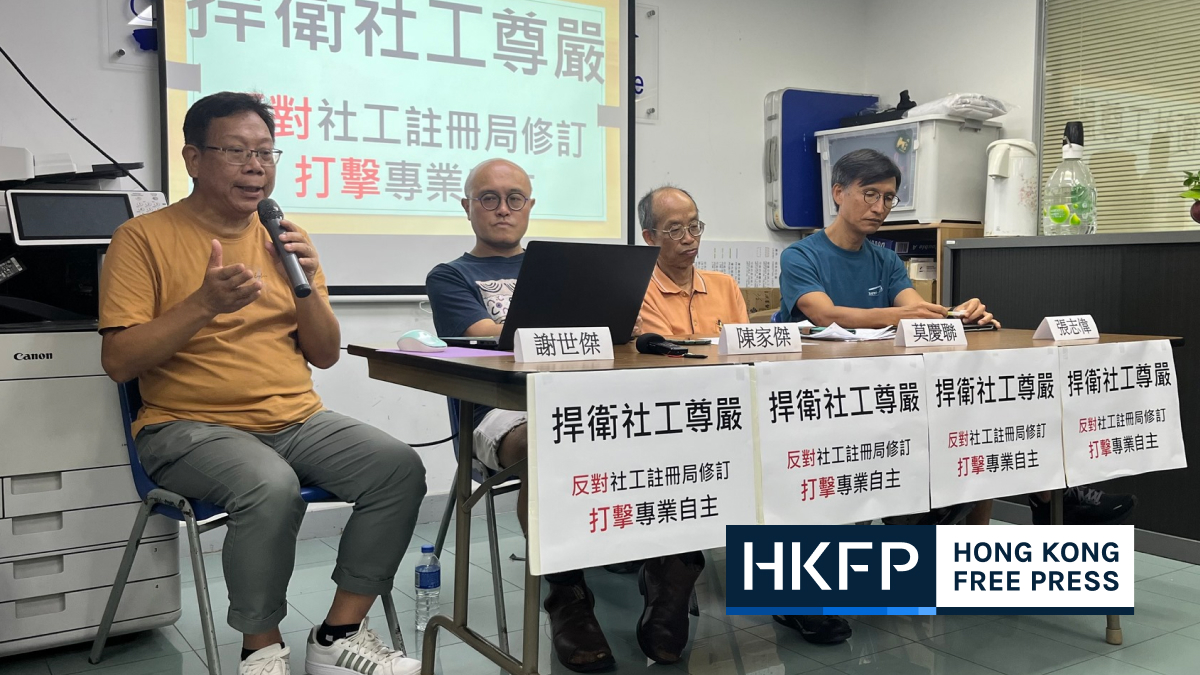
Almost 90% of social workers say helping marginalised groups to be made harder under gov’t-proposed overhaul

Hong Kong 47: Judges reject Benny Tai having ‘little or no role’ in subversion scheme after security law took effect
Support HKFP | Code of Ethics | Error/typo? | Contact Us | Newsletter | Annual & Transparency Report

Irene Chan Senior Reporter
Irene Chan is a reporter at Hong Kong Free Press and has an interest in covering political and social change. She previously worked at Initium Media as chief editor for Hong Kong news and was a community organiser at the Society for Community Organisation serving the underprivileged. She has a bachelor’s degree in Journalism from Fudan University and a master’s degree in social work from the Chinese University of Hong Kong.
Irene is the recipient of two Society of Publishers in Asia (SOPA) awards and three honourable mentions for her investigative, feature and video reporting. She also received a Human Rights Press Award for multimedia reporting and an honourable mention for feature writing.
HKFP is a proud member of:

Subscribe to HKFP's newsletters
- HKFP Dim Sum Our best features, interviews & original reporting, sent on Mondays.
- HKFP Daily Digest A digest of all HKFP stories from the day, sent at 9pm daily.
Unsubscribe at any time. HKFP will never share your details with third parties.
Latest Stories

Covid-19 left a deadly legacy, but poverty plays a prime role in growing disease burden – including in Hong Kong

Pride month: Why Hong Kong is ready for same-sex marriage
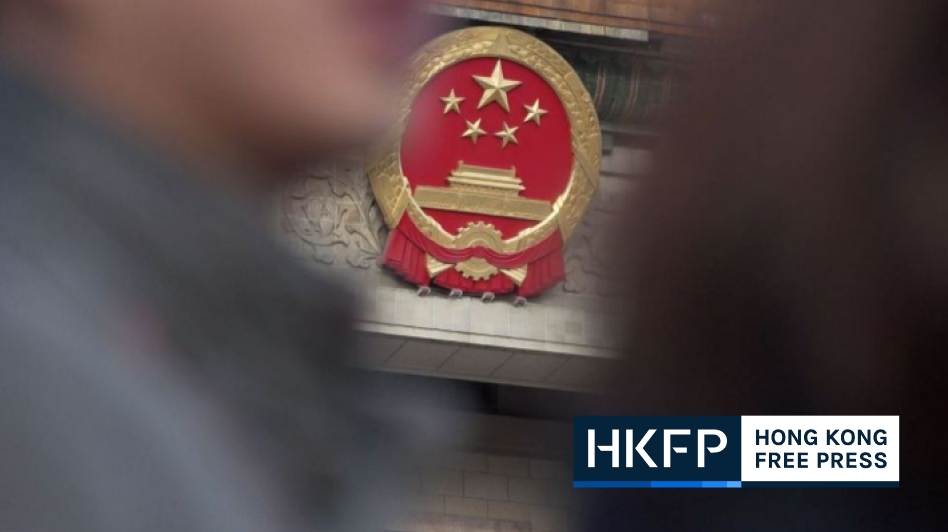
China urges Taiwanese to visit ‘without worry,’ despite threats of death penalty for ‘diehard’ independence advocates
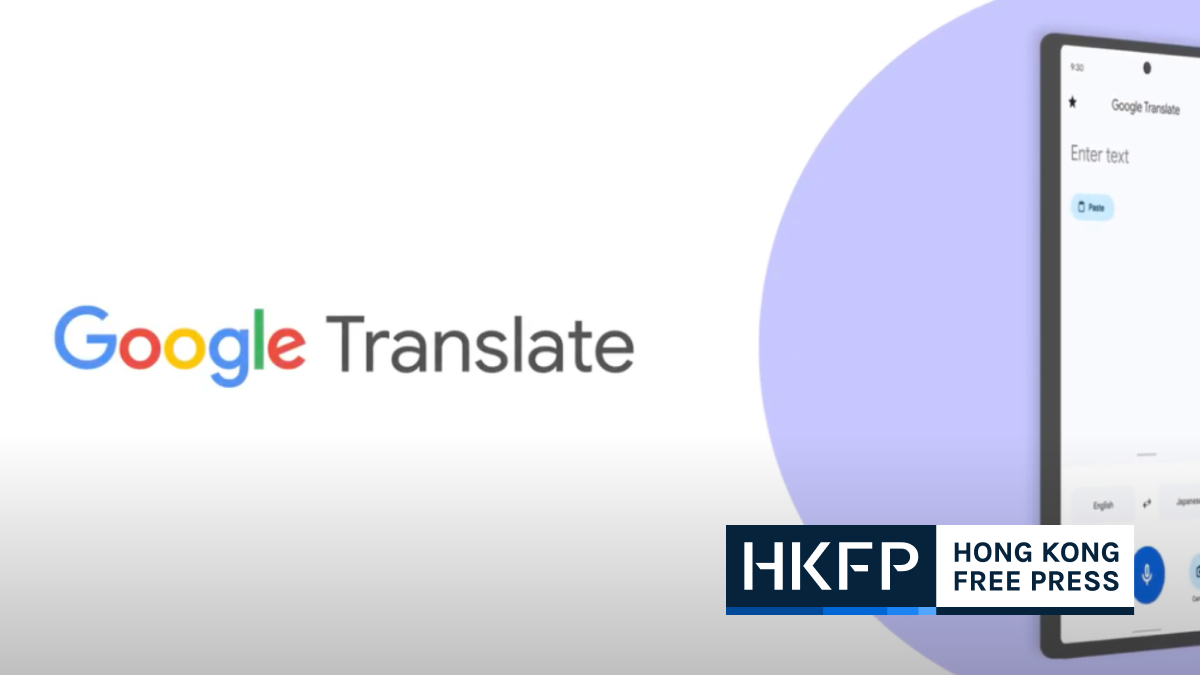
Google Translate adds Cantonese support, thanks to AI advancement

9 Years of HKFP: Keeping boots on-the-ground alongside Hongkongers – thanks to your support
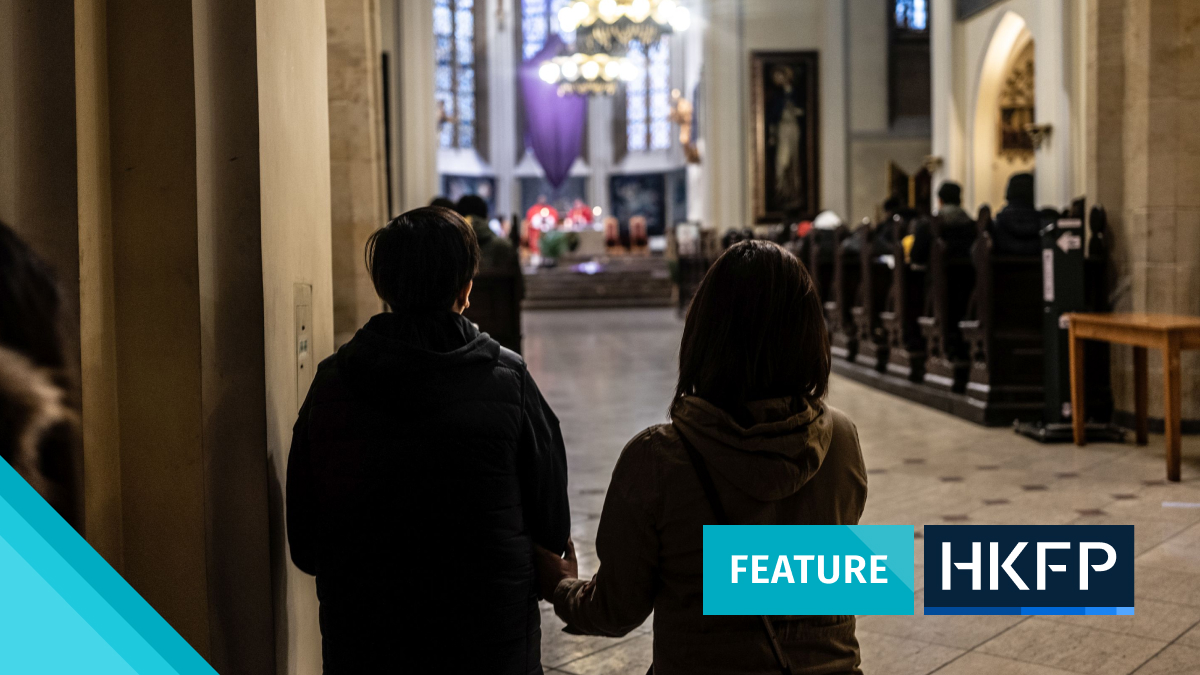
Low pay, poor conditions: These Filipino workers were drawn to Poland. Now they want to leave
Something went wrong. Please refresh the page and/or try again.
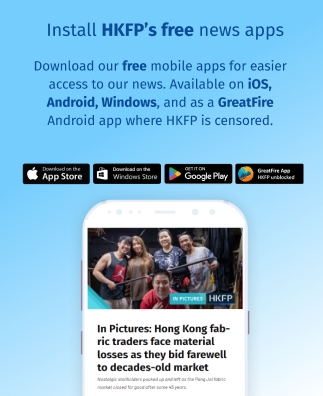
features & interviews

On this day: 28 years on, Hong Kong artists and researchers bring a moment in 1996 back to life

Hardcore Hong Kong: Young mainland Chinese make a cross-border pilgrimage in search of underground music scene
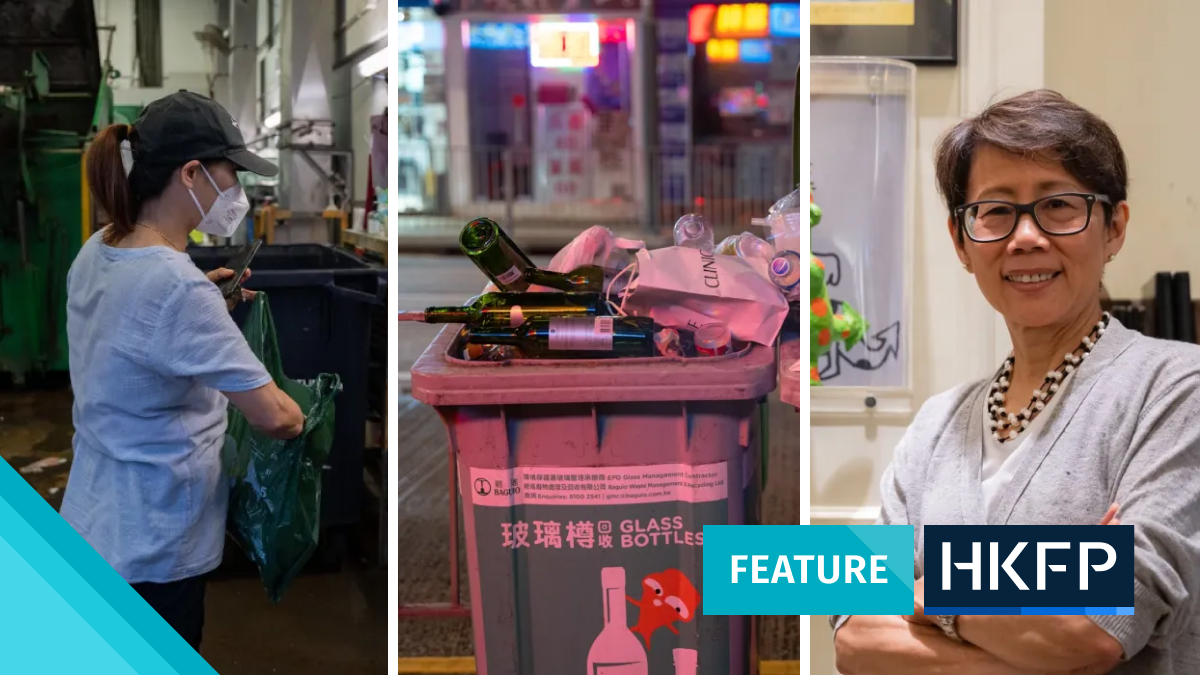
Don’t trash the tax: Ex-official, green groups say Hong Kong more prepared for waste tax than government thinks
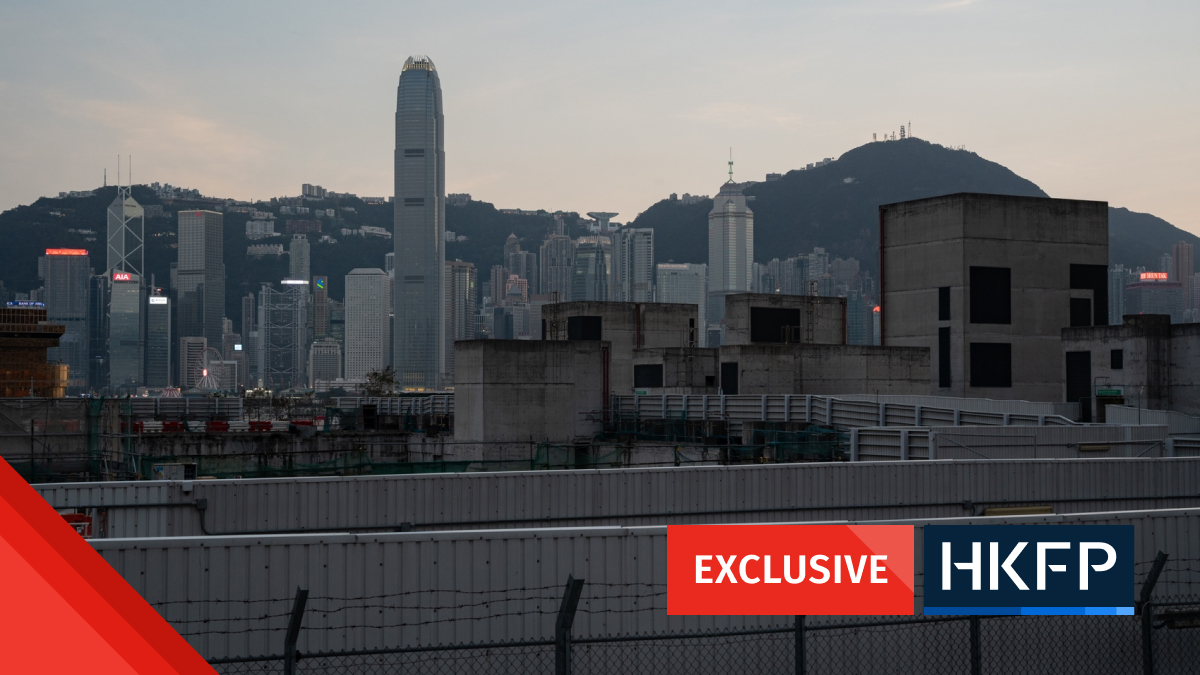
Exclusive: HSBC closed accounts of jailed 2019 democracy protesters without providing a reason
Views expressed by opinion writers & advertisers are not necessarily shared by HKFP.
Where to find HKFP:
- HKFP Mobile Apps .
- HKFP Newsletter .
- HKFP Podcast .
- HKFP Facebook .
- HKFP Instagram .
- HKFP LinkedIn .
- HKFP Mastodon .
- HKFP Telegram .
- HKFP X/Twitter .
- HKFP YouTube .
- HKFP Apple News .
- HKFP Flipboard .
- HKFP News360 .
- HKFP Pushbullet .
- HKFP Whatsapp .
About HKFP:
- Advertise with HKFP .
- Announcements .
- Contact HKFP .
- Community Guidelines .
- Corrections Policy .
- Corrections Log .
- Documentary on HKFP .
- Freelance Charter .
- Newspaper Registration (periodical) .
- Policies, Ethics & Standards .
- Privacy, T's & C''s .
- Security Law .
- Staff Roster .
HKFP Partnerships:

Most-read stories today

About The Trust Project
The Trust Project is a collaboration among news organizations around the world. Its goal is to create strategies that fulfill journalism’s basic pledge: to serve society with a truthful, intelligent and comprehensive account of ideas and events.

COMMENTS
Hong Kong uses the UK-style plug, which is three-pronged. Double-check the electrical voltage, as Hong Kong's standard voltage is 220 volts AC at a frequency of 50Hz, which may differ from your home country. 5) Stay connected: apps, SIM, Wi-Fi. Staying connected and accessing the help you need have never been easier or faster.
The government has set up a page for all your questions about inbound travel to Hong Kong. Due to the changing nature of Covid-19 measures, please visit this link to keep updated with the latest ...
There are also plenty of rest areas here where you can relax to escape the oppressive Hong Kong heat. Spanning 13 hectares (33 acres), it's one of the best places to people-watch in the city. 22 Austin Rd, Tsim Sha Tsui, Kowloon, +852 2724 3344, lcsd.gov.hk. Open daily 5am-12am and admission is free.
With that in mind, we've put together 21 things you need to know before landing in this fascinating place. 1. Hong Kong is massive, busy, and crowded. Hong Kong/Oyster. If you're expecting sanitized Singapore streets when you touch down in Hong Kong, you'll be sorely disappointed. To be clear, this is not Ho Chi Minh City or Bangkok, but ...
Call us in Washington, D.C. at 1-888-407-4747 (toll-free in the United States and Canada) or 1-202-501-4444 (from all other countries) from 8:00 a.m. to 8:00 p.m., Eastern Standard Time, Monday through Friday (except U.S. federal holidays). See the State Department's travel website for the Worldwide Caution and Travel Advisories.
Make sure to read through our Hong Kong travel guide and be prepared to be amazed as Hong Kong is unlike any other city! Hong Kong Travel Guide. Before you visit Hong Kong make sure you know the basics! General Info. Currency: Hong Kong Dollar (HKD) Language: Chinese, English; Population: 7,482,500; Area: 1,108 square kilometers
The answers to these frequently asked questions will help when planning your trip to Hong Kong, covering issues such as attractions, accommodation and transport. Find all the practical information you need to travel around in Hong Kong - from transport services to currency information and weather conditions.
Inbound travellers to Hong Kong have to be fully vaccinated and undergo a pre-departure RAT test within 24 hours before the scheduled time of departure. Two PCR tests - one at the airport and one ...
Tips for flying to Hong Kong No vaccination requirements COVID Wear a mask to travel safely This includes public transport unless you are in a country park or are conducting a strenuous physical activity. To know more and for travel tips, contact us: Facebook Messenger Webchat [email protected] +852 2508 1234 (9am to 6pm daily) *Travellers (except ...
hk-cityguide.com. Wednesday 3rd of January 2024. Will Fly for Food is genuinely one of the best and most authentic first-hand travel guides to Hong Kong. A must-read for anyone planning to go to Hong Kong to sightsee, dine and shop. It's definitely not one of the commercialized listings out there.
The only requirement still remaining to enter Hong Kong is the COVID-19 testing. Except for arrivals from mainland China and Macau, all travellers above age three must take a RAT test (within 24 hours of flying) or a PCR test (within 48 hours of flying). They must keep a photo of the negative COVID-19 test report for 90 days.
The path to Hong Kong's reopening has been far from easy. Since 2019, Hong Kongers have faced seemingly insurmountable challenges. First, the government outright suppressed a pro-democracy ...
Day 1: Victoria Harbour (Kowloon Side) Day 2: Hong Kong Island (Central) Day 3: Mong Kok. Day 4: Lantau Island. Day 5: Causeway Bay. Day 6: East Kowloon. Day 7: Lamma Island. How to use this 1 week Hong Kong Itinerary: This itinerary compiles what I think is the best 7 days in Hong Kong for first-timers. I have factored in the jet lag that many ...
Day 0 "First Day of your Trip": The day you arrive in Hong Kong will include a "Test and Go" arrangement at the airport. Inbound Travelers will take a PCR Test and will be given an "Amber Code" once taken. You do not need to wait for the result of your PCR Test and can head directly to your accommodations. Day 0-2/3 " Medical ...
Take a PCR test at the airport, then again on days 2, 4 and 6 (the arrival date is day 0) Take daily rapid antigen tests from days 1 to 7. Submit to three days of medical surveillance, during ...
At least 28 countries have issued travel advisories about Hong Kong, according to HK's Airport Authority Chief Executive Lam Tin-fuk. Those countries include the United States, Australia, United ...
Hong Kong entry requirements for international travelers. All overseas passengers entering Hong Kong need to meet the entry requirements. Each country has its own rules in place which must be followed otherwise there will be consequences. - All visitors will need to provide a negative PCR test taken no more than 24 hours prior to departure as ...
You can visit Hong Kong for up to 6 months without a visa. For information on entry requirements see the Hong Kong SAR government website . To stay longer (to work or study, for business travel or ...
This travel advice covers the Hong Kong Special Administrative Region (SAR). For mainland China, see travel advice for China and for Macao SAR, see Macao travel advice. The Foreign, Commonwealth ...
TRAVEL TIP: If you want to do a Hong Kong - Macau adventure, I highly suggest that you fly from Manila to Hong Kong, spend 2 or 3 days in Hong Kong, then travel to Macau via ferry. In Macau, spend 1-2 days and then fly from Macau back to Manila. This will save you a lot on time and on travel expenses.
Keep any medications that need to be taken regularly in your hand luggage. Check with your family doctor or the Travel Health Centers of the Department of Health for the types of vaccines required. These may include vaccination against hepatitis A and B, yellow fever and typhoid fever. Inform your doctor of any allergies if you need vaccination.
Before traveling, make sure your passport is valid for at least the next 6 months and has a blank page. Faded shop signages on the Hong Kong street. (Source: Katie Manning/unsplash) -Tourist Visa Application: Nationals from 170 countries and territories may travel to Hong Kong visa-free (from 7 days to 180 days).
Visitors from 60 visa-exempt countries, including Hong Kong passport holders, planning a trip to Europe in 2025 will need a new travel authorisation called the European Travel Information and Authorisation System (ETIAS). This user-friendly online system aims to enhance security without affecting tourist and business visits.
General city view of Taipei, Taiwan on January 11, 2024. Photo: Kyle Lam/HKFP. It continued: " If there is a need to travel to mainland China, Hong Kong, or Macau, it is advised to avoid ...
FCM Travel Greater China plans to invest in its artificial intelligence capabilities and give its staff the skills they need to get the most out of the technology as China's outbound travel ...